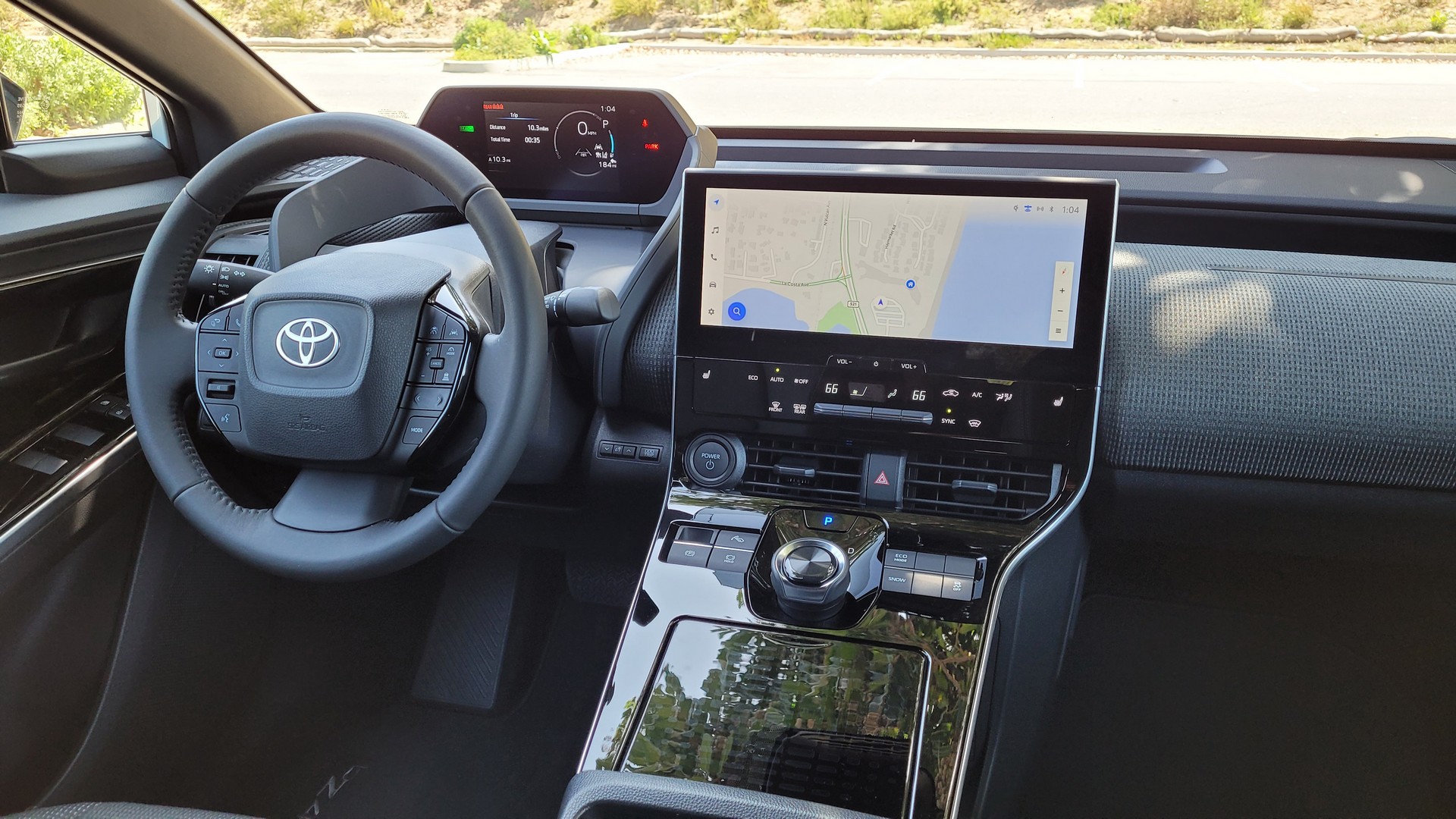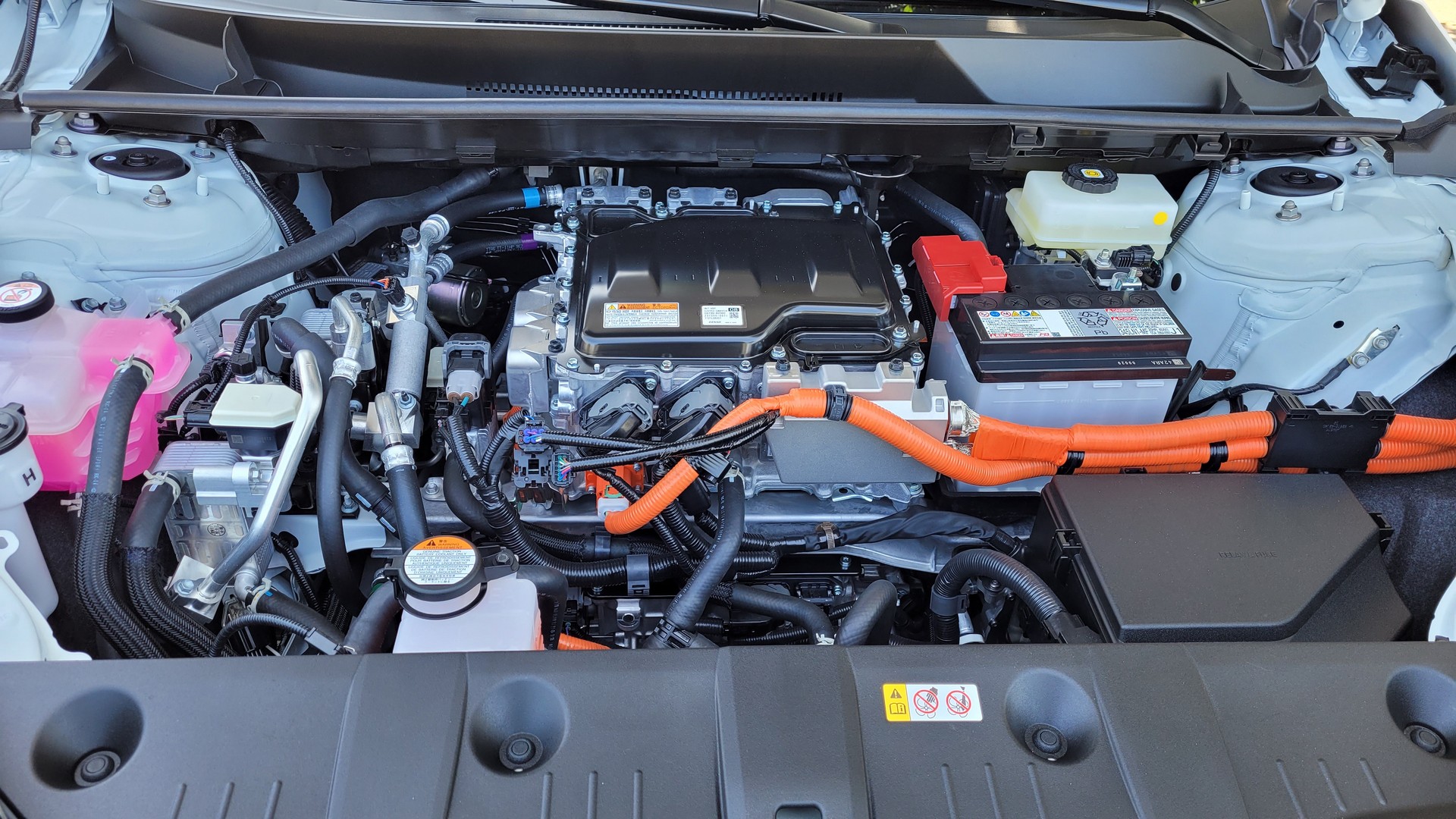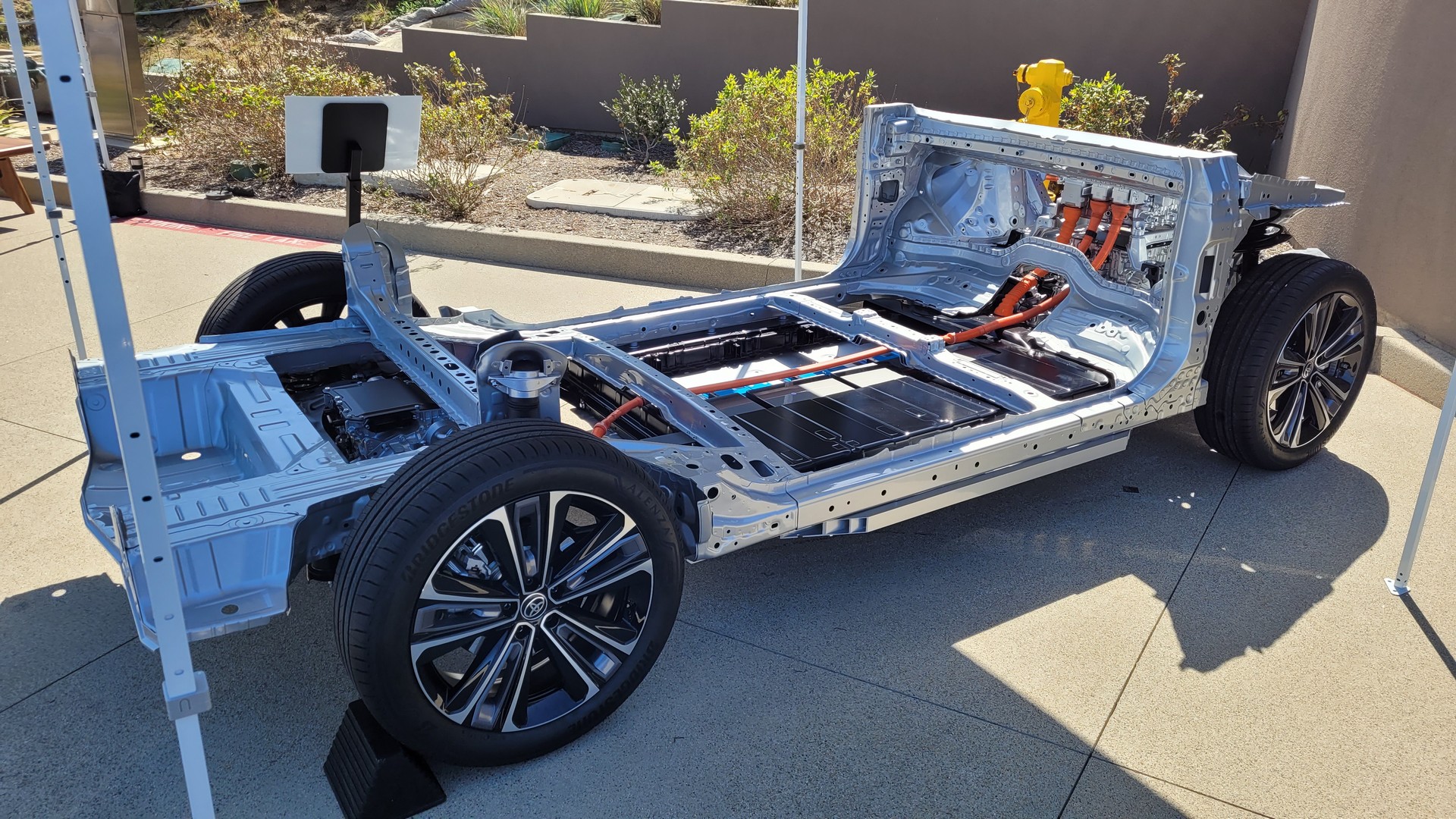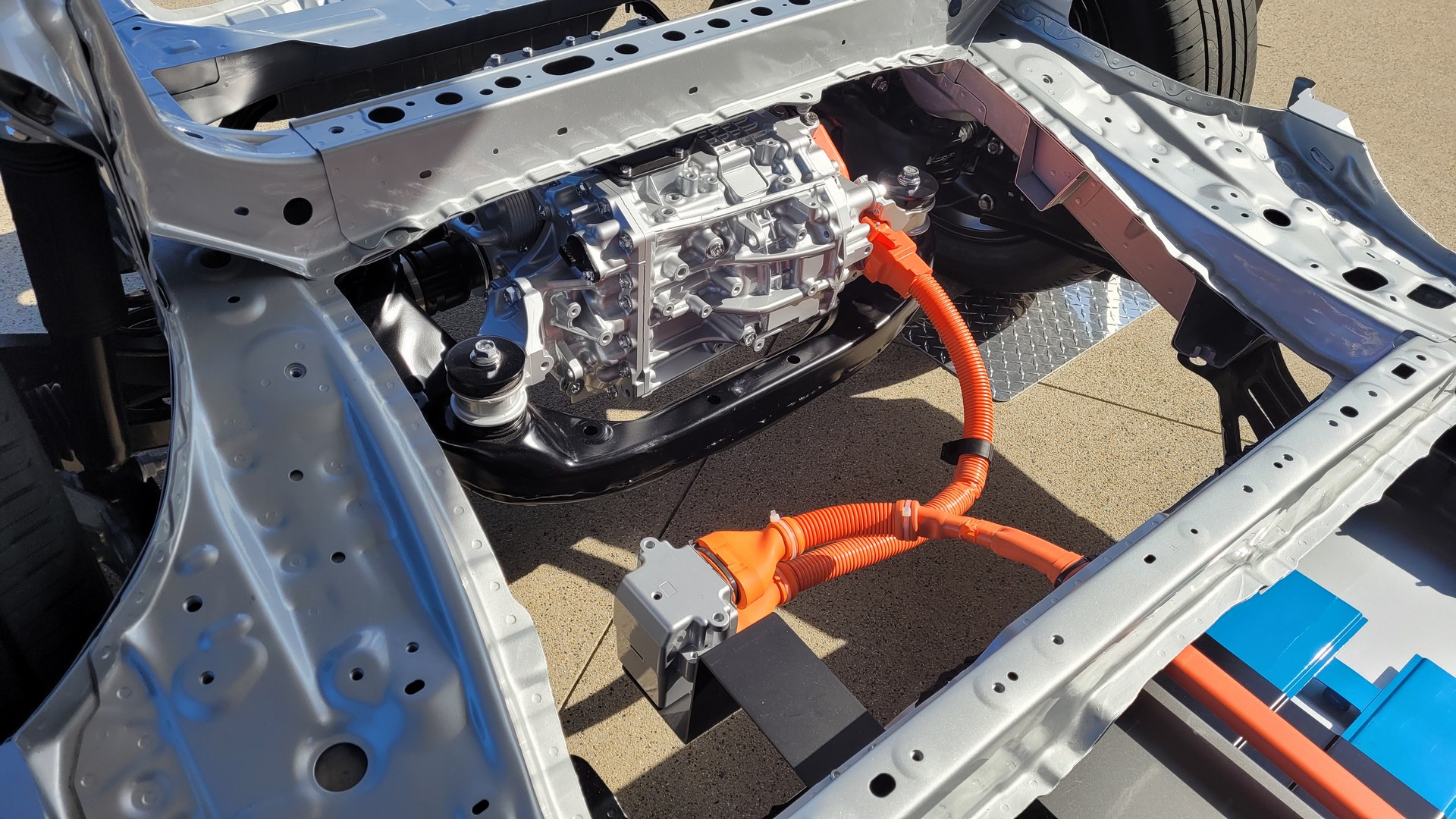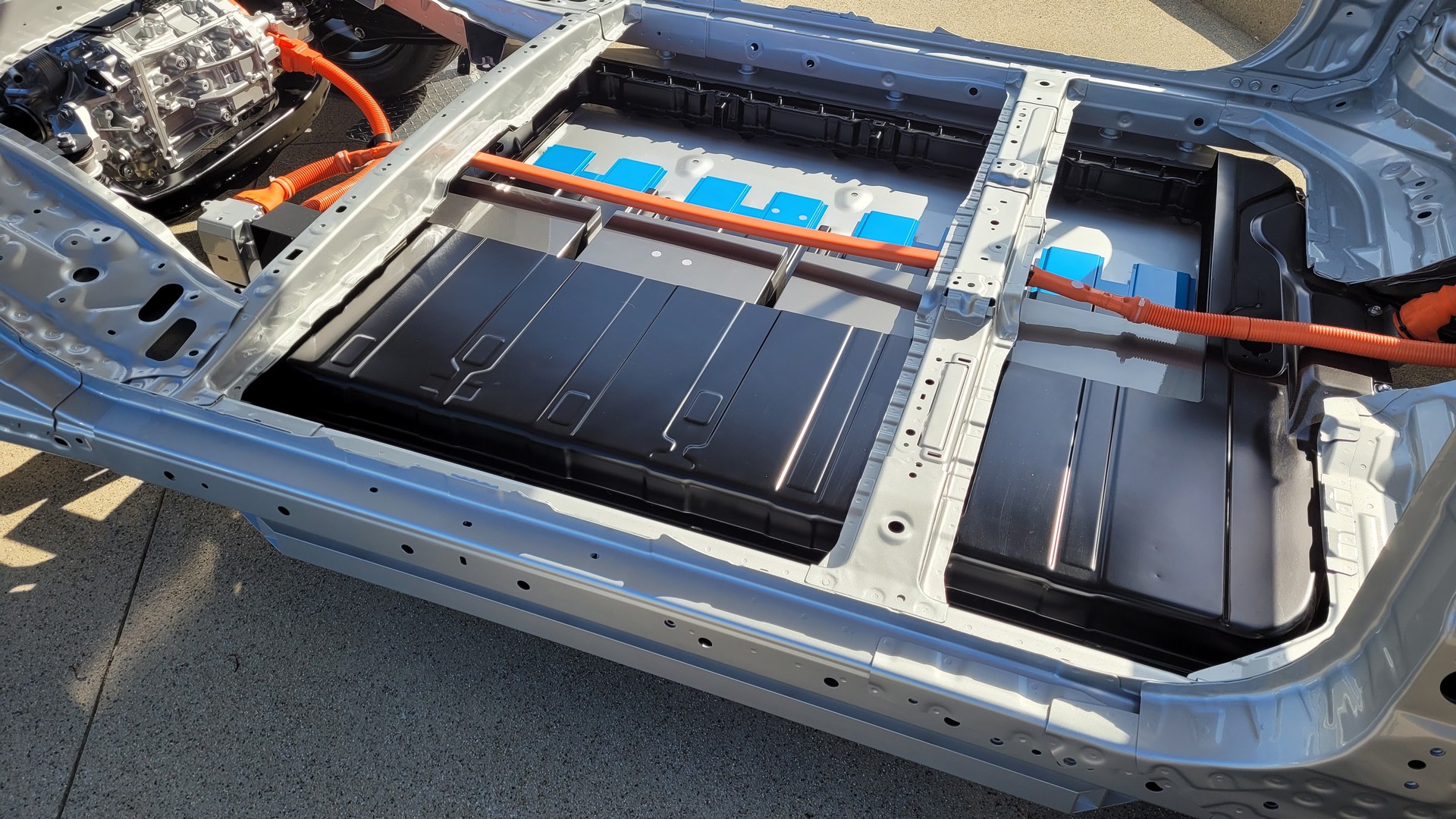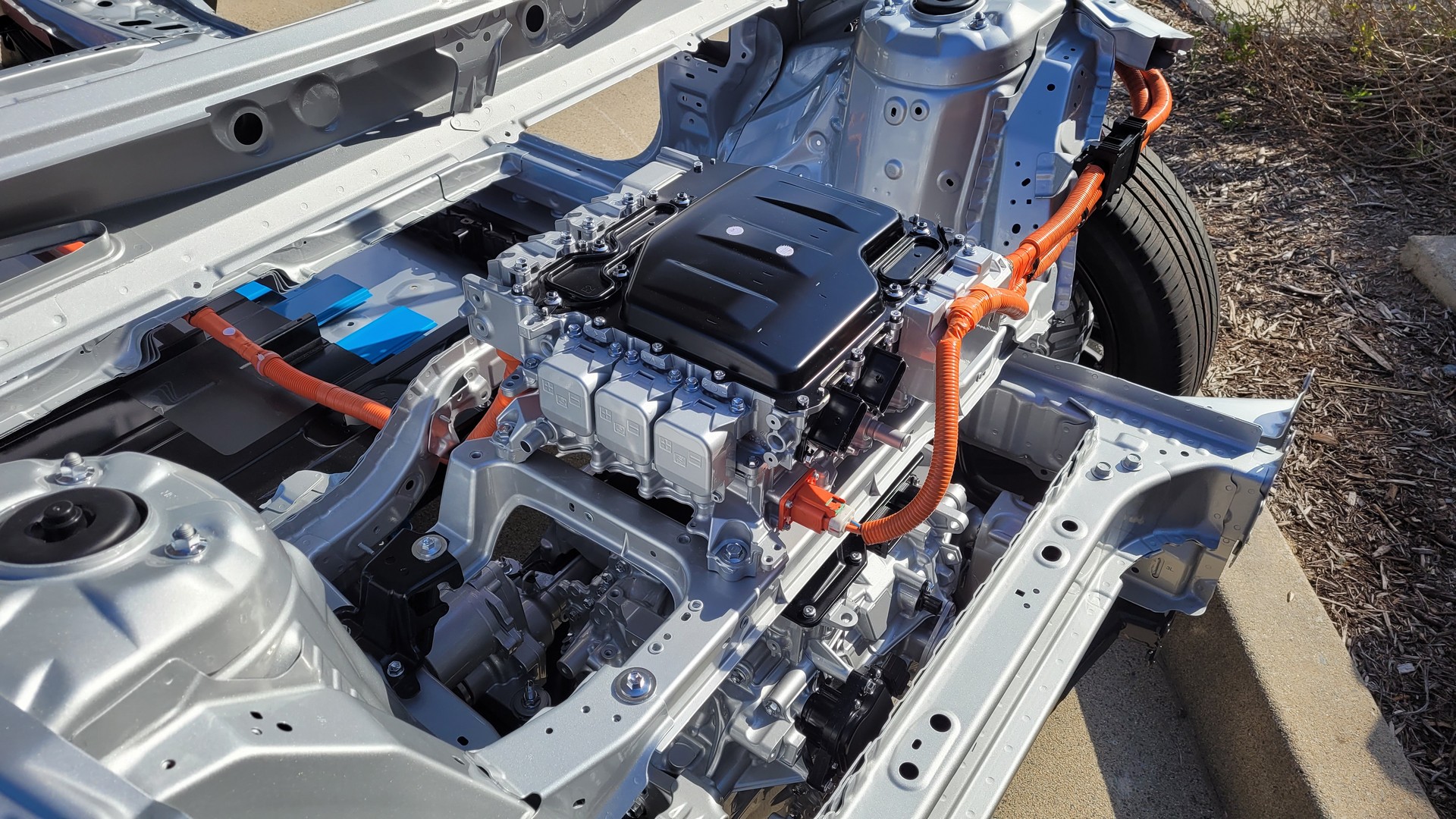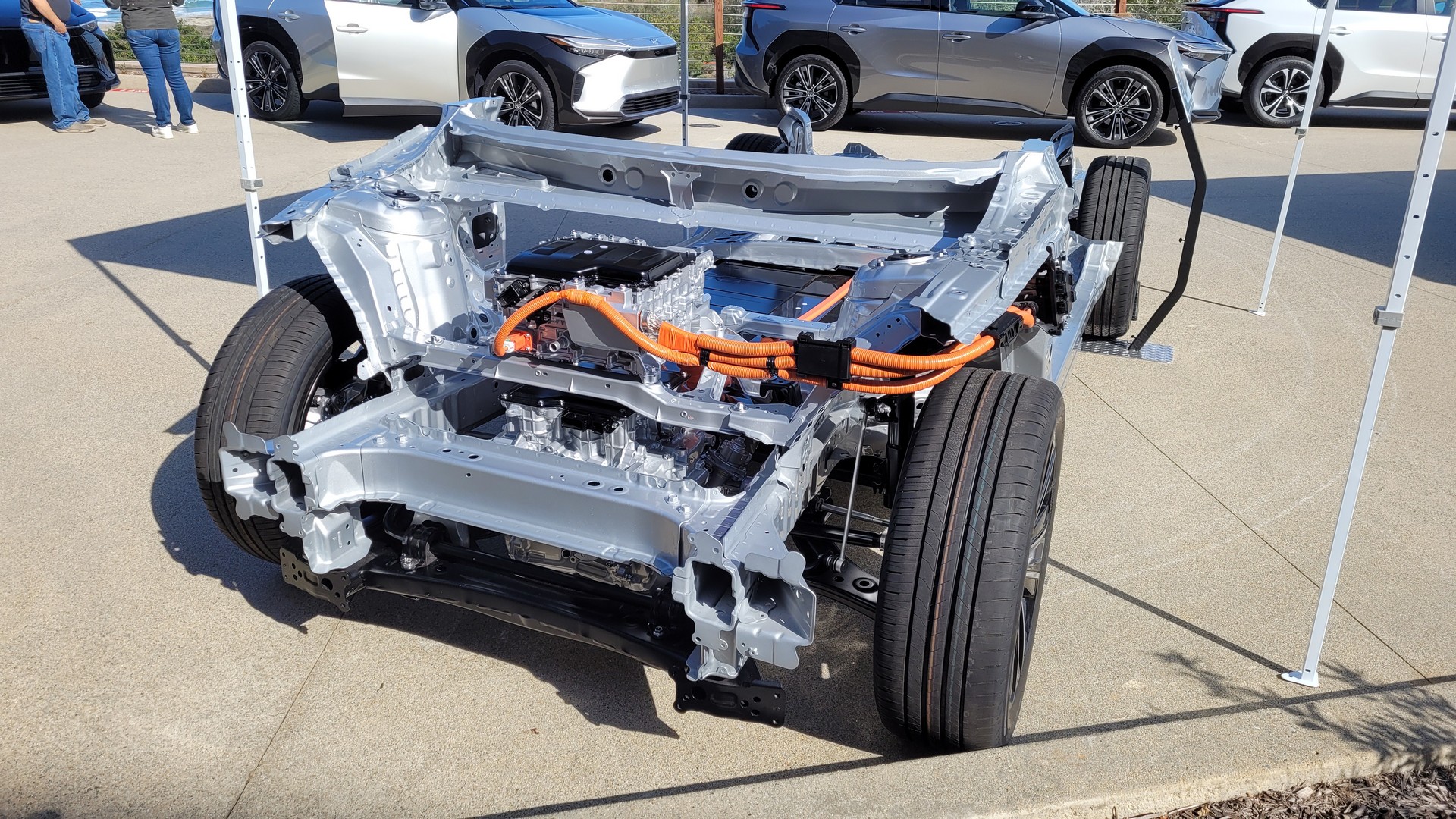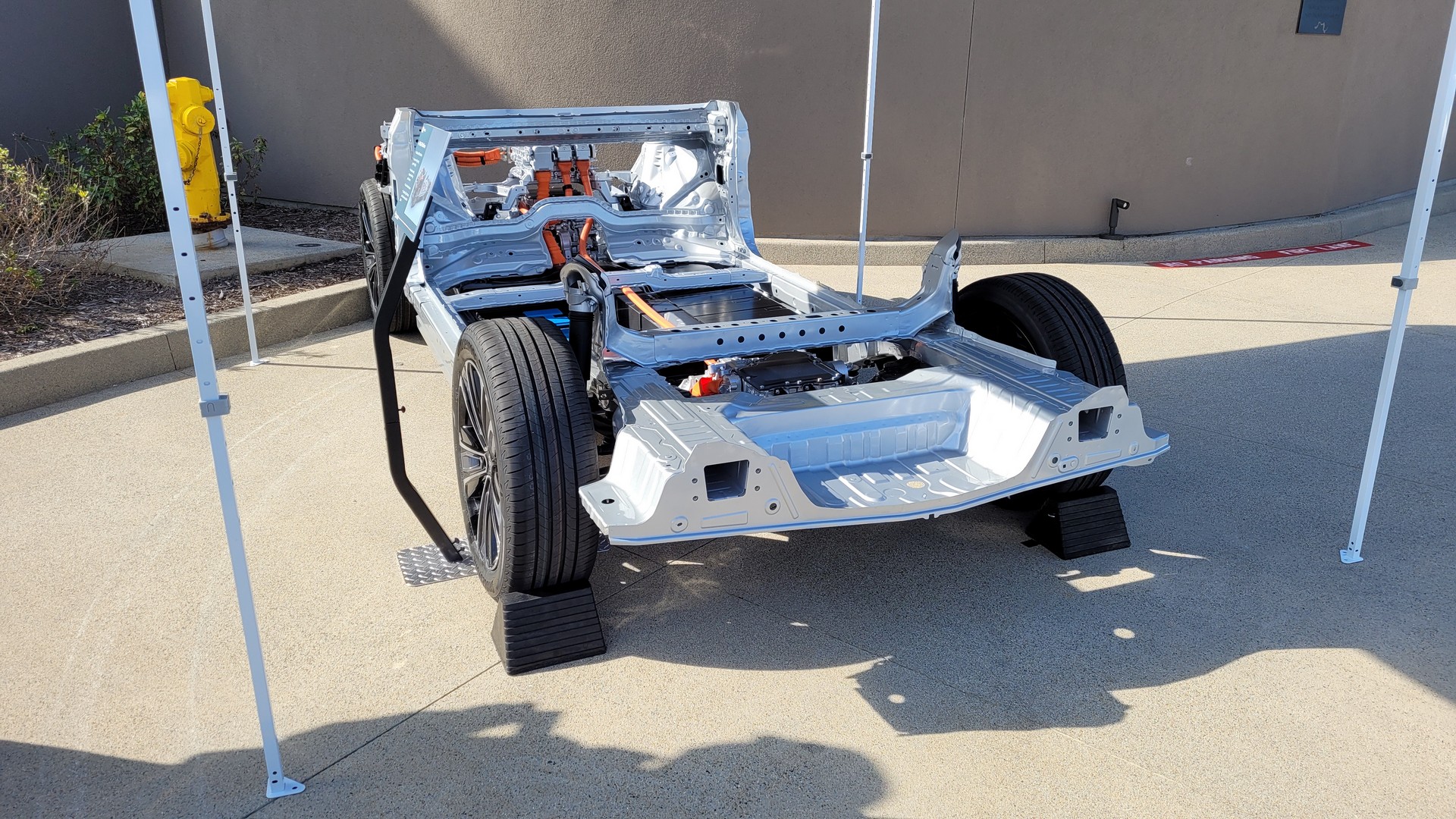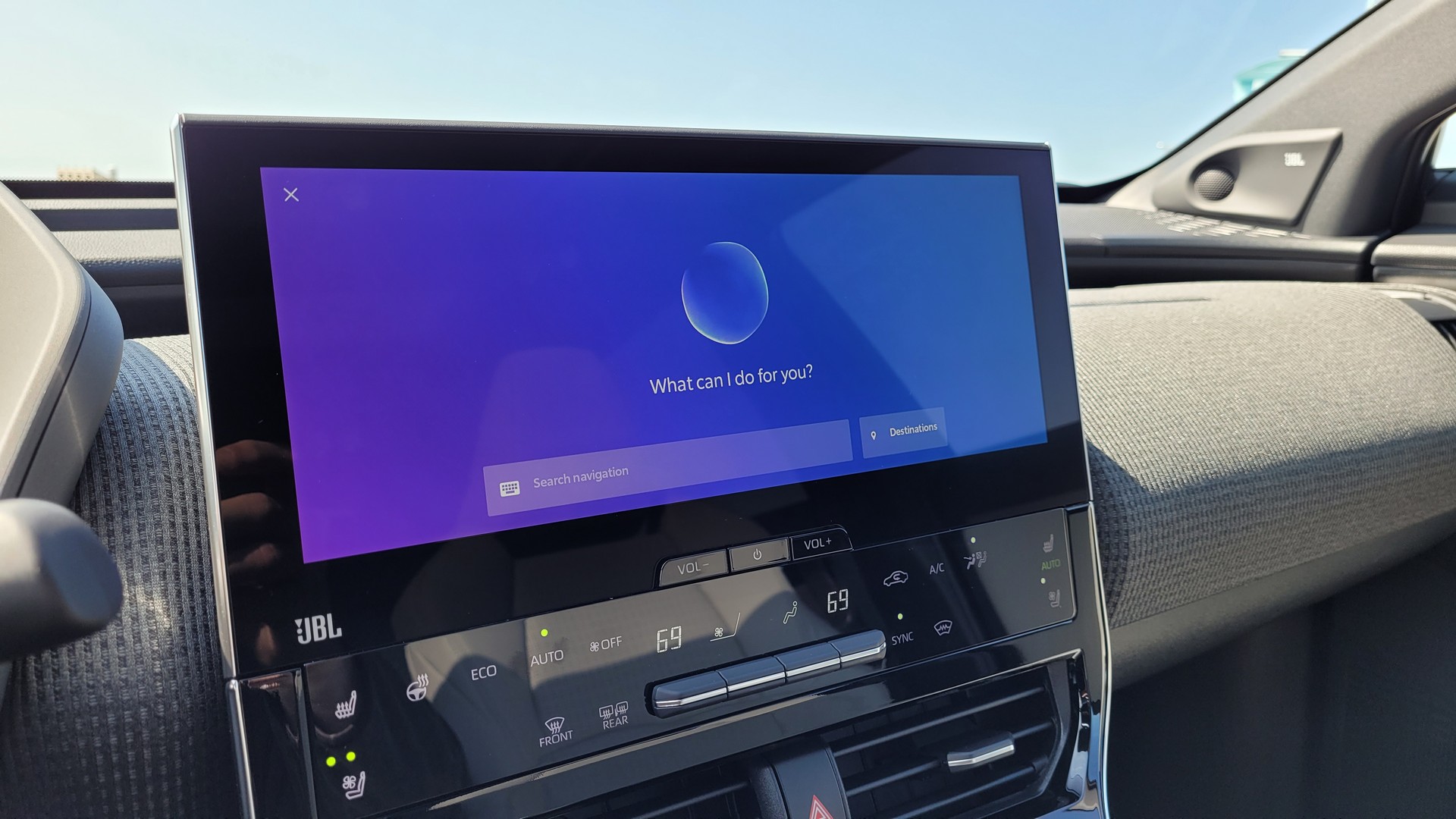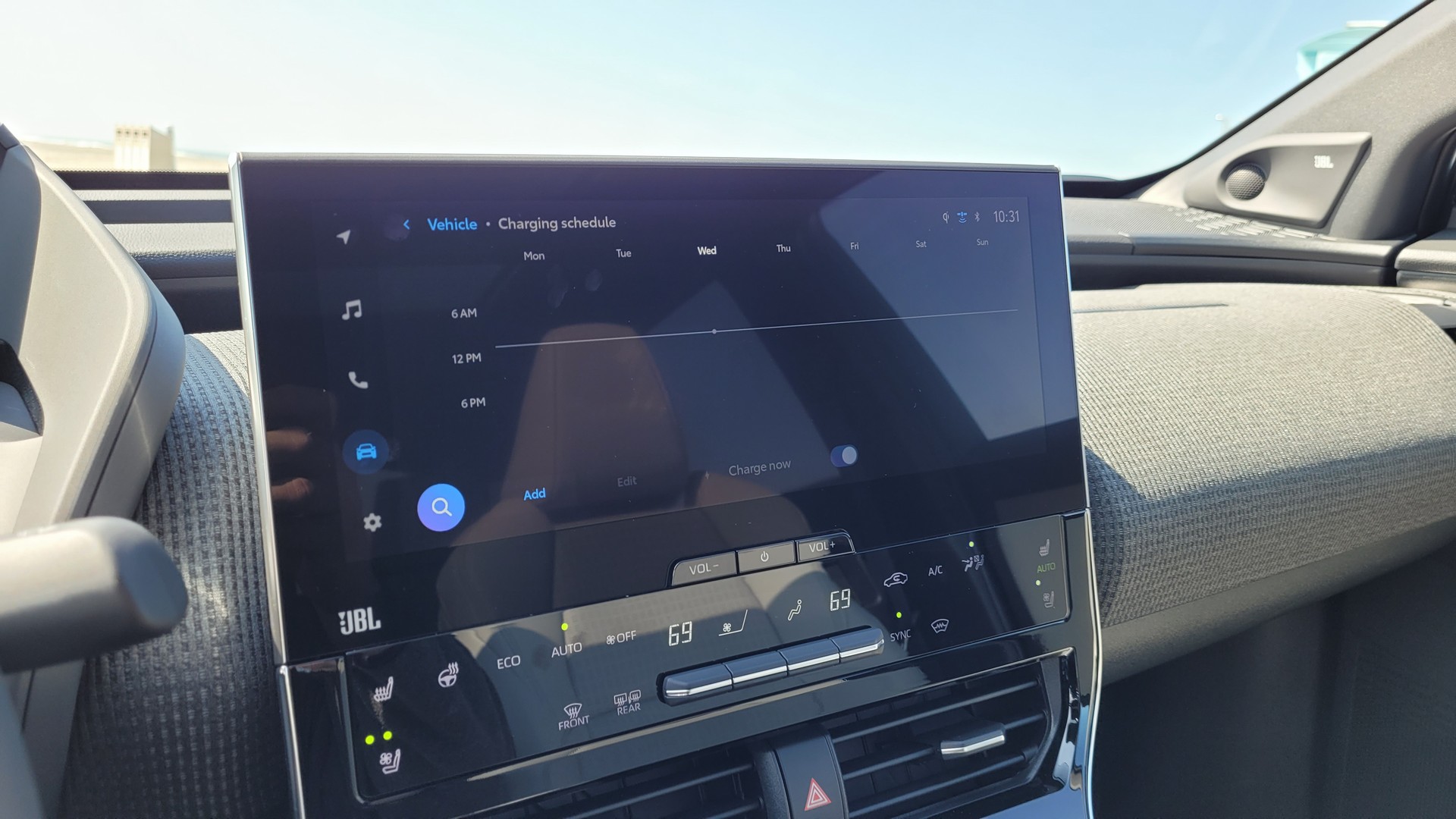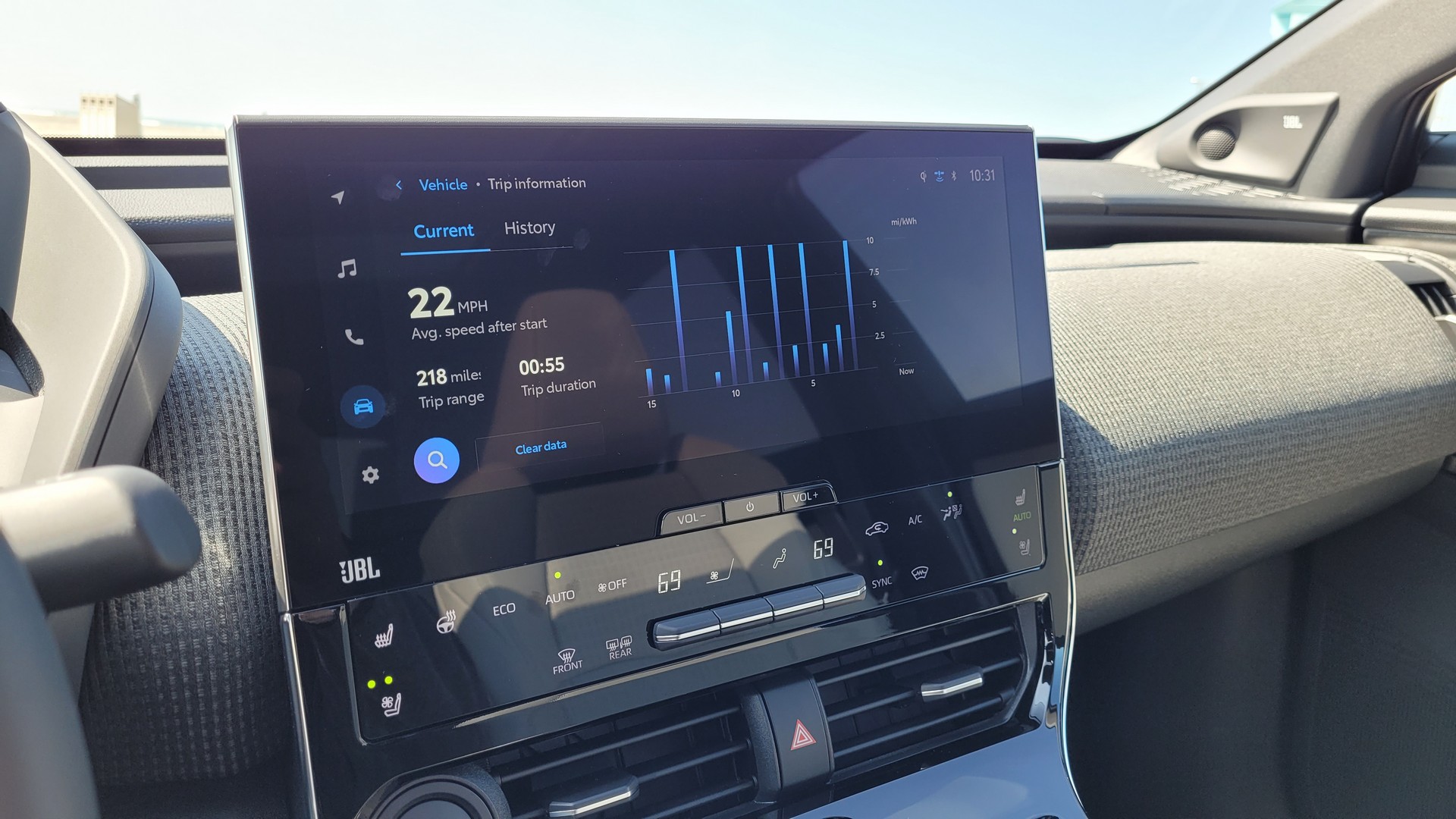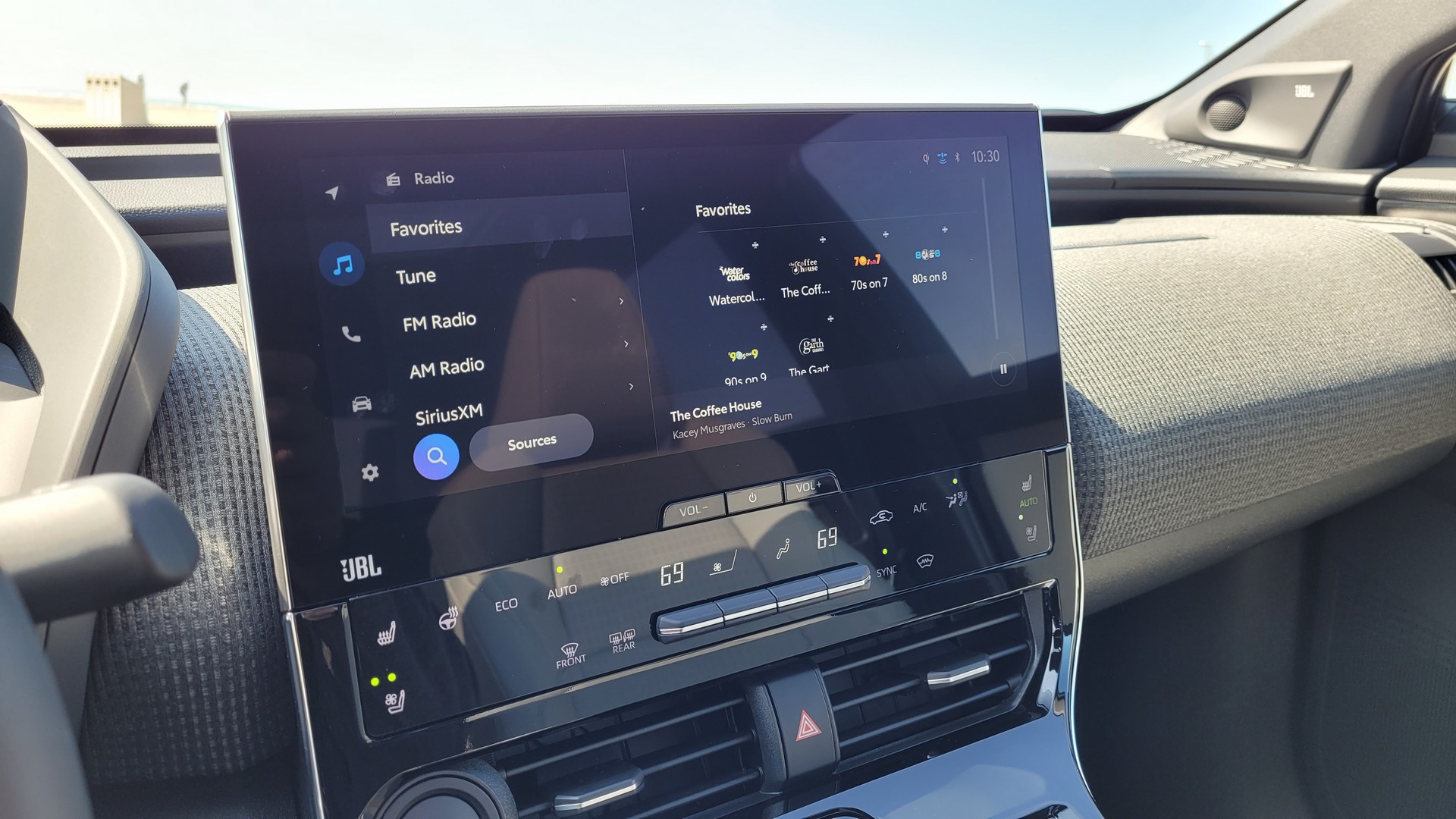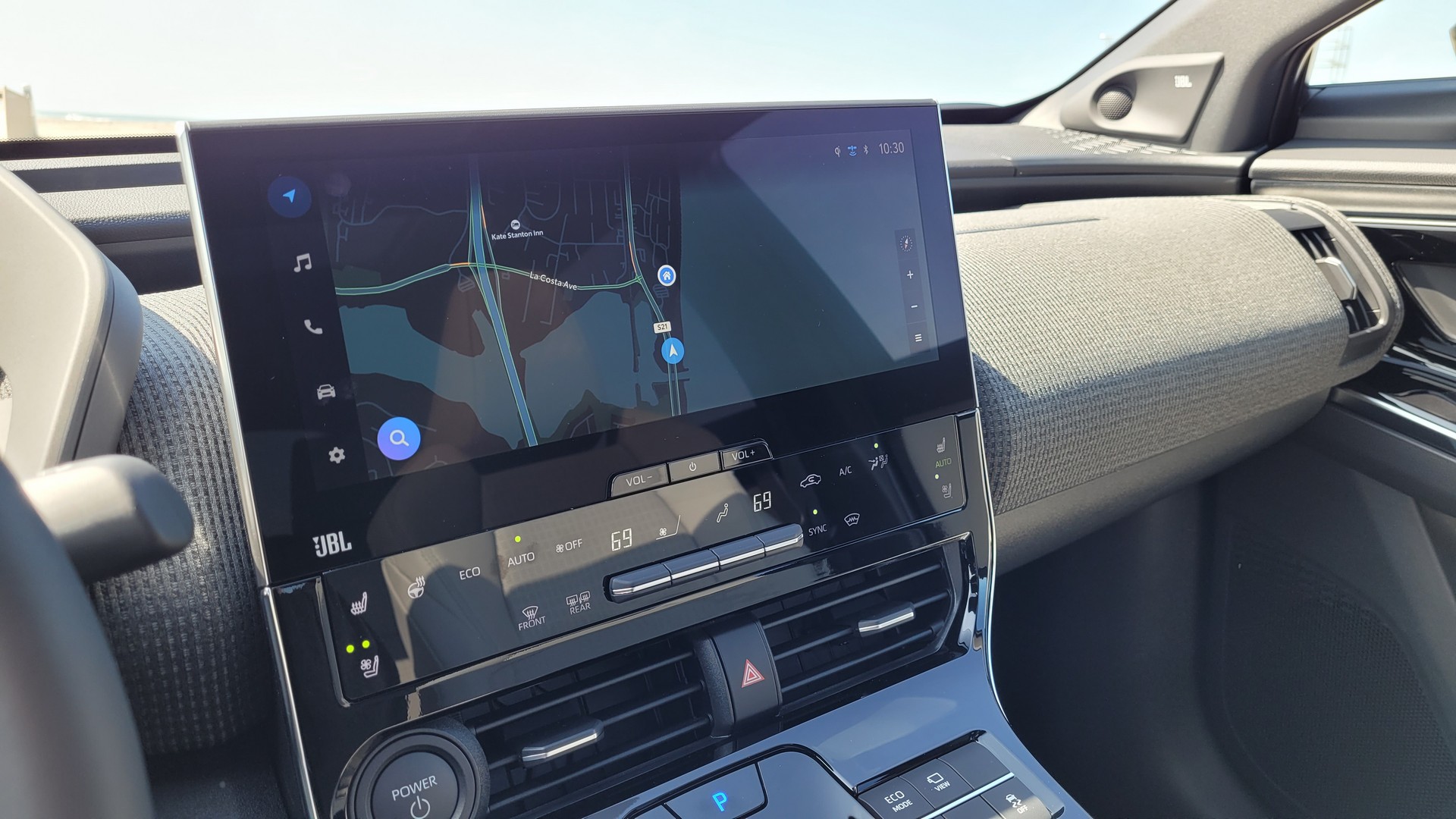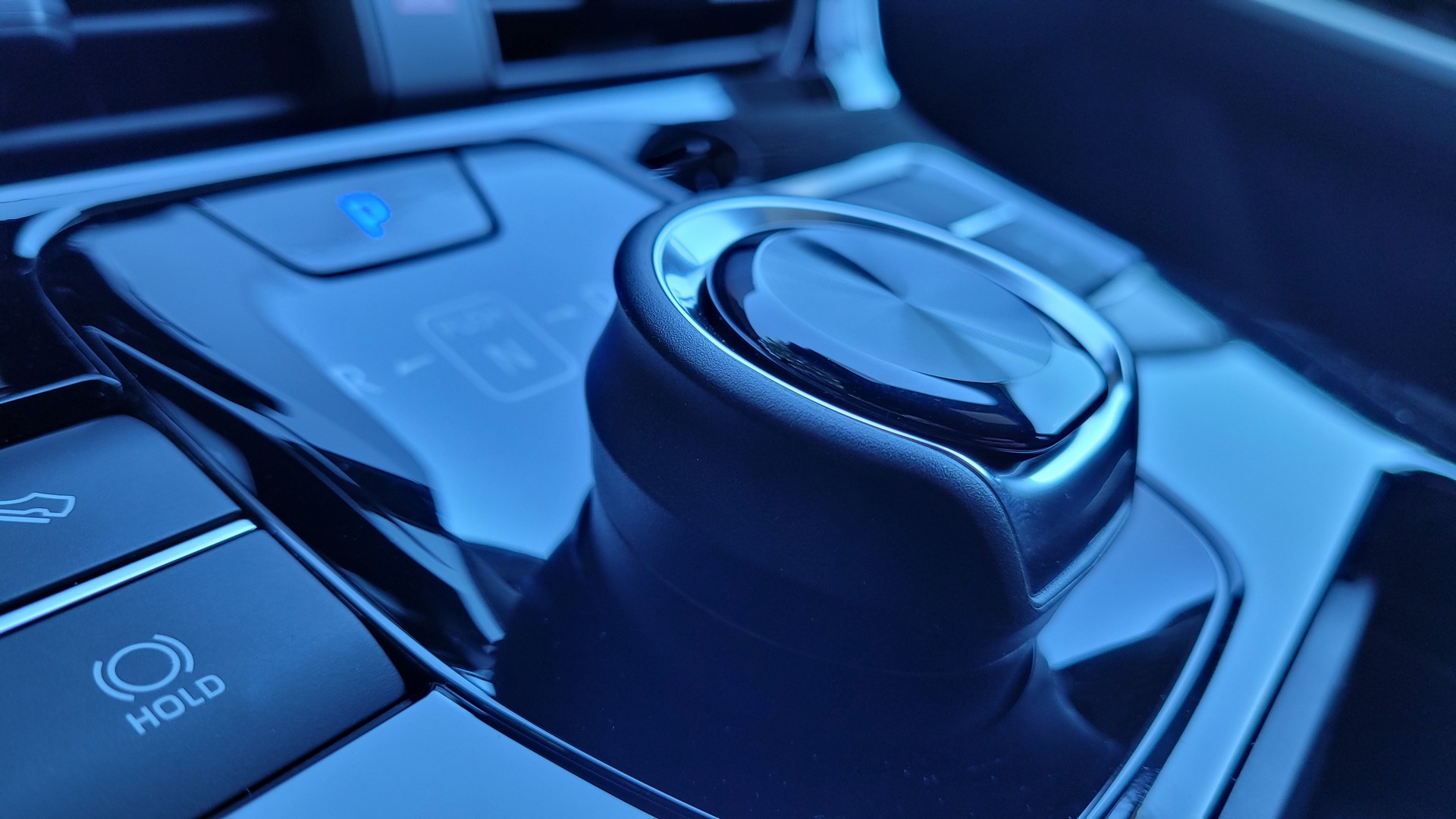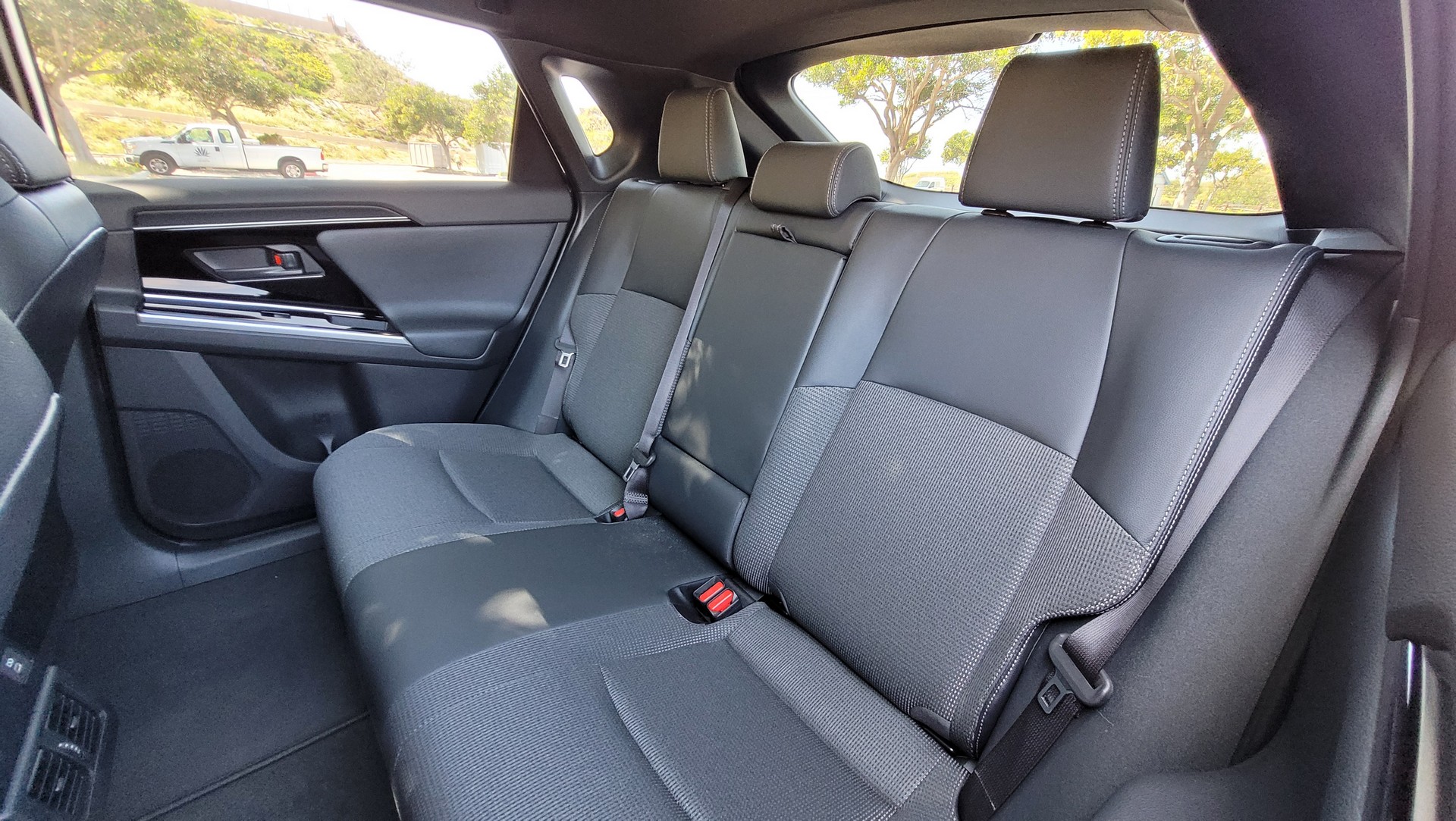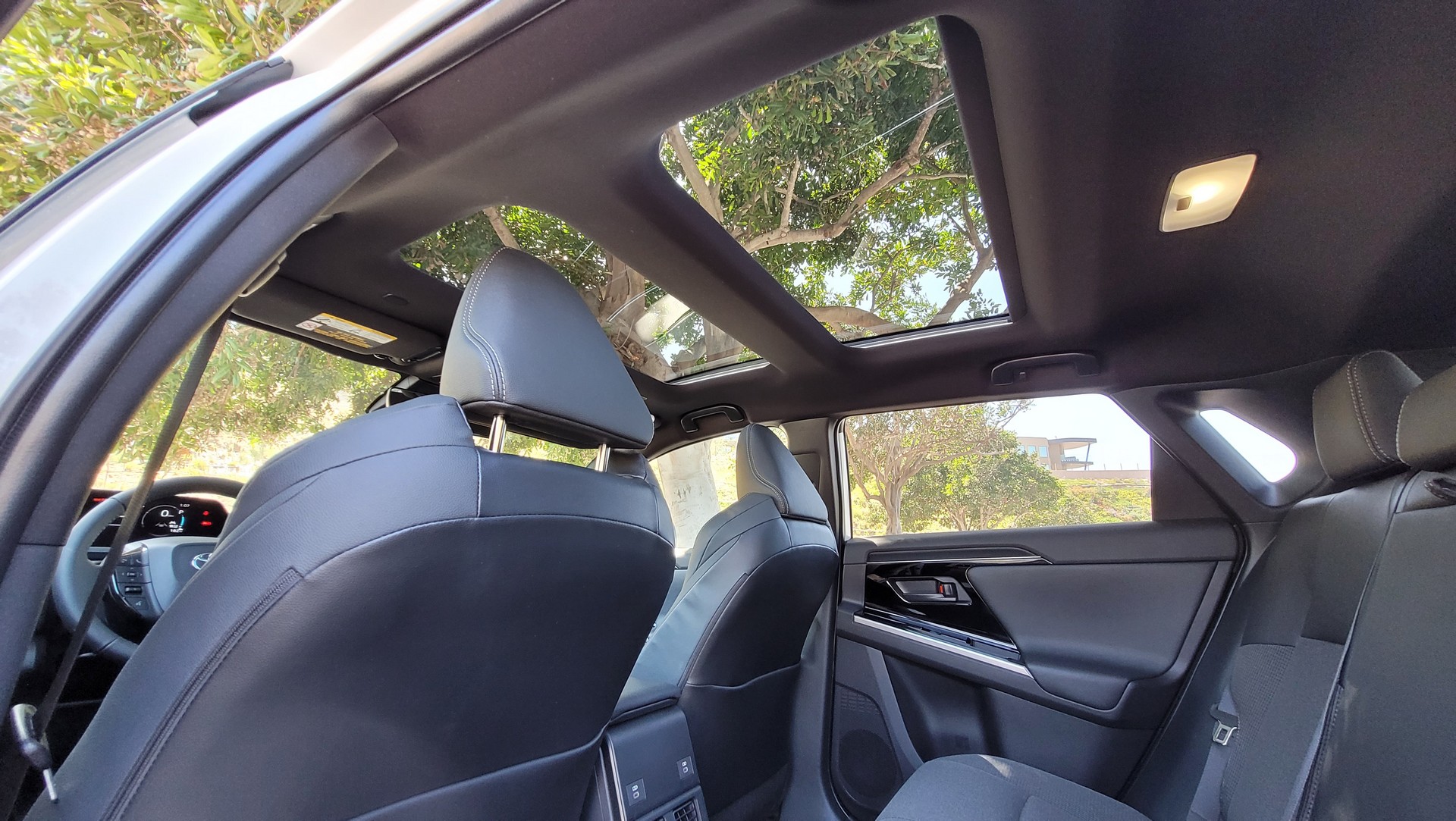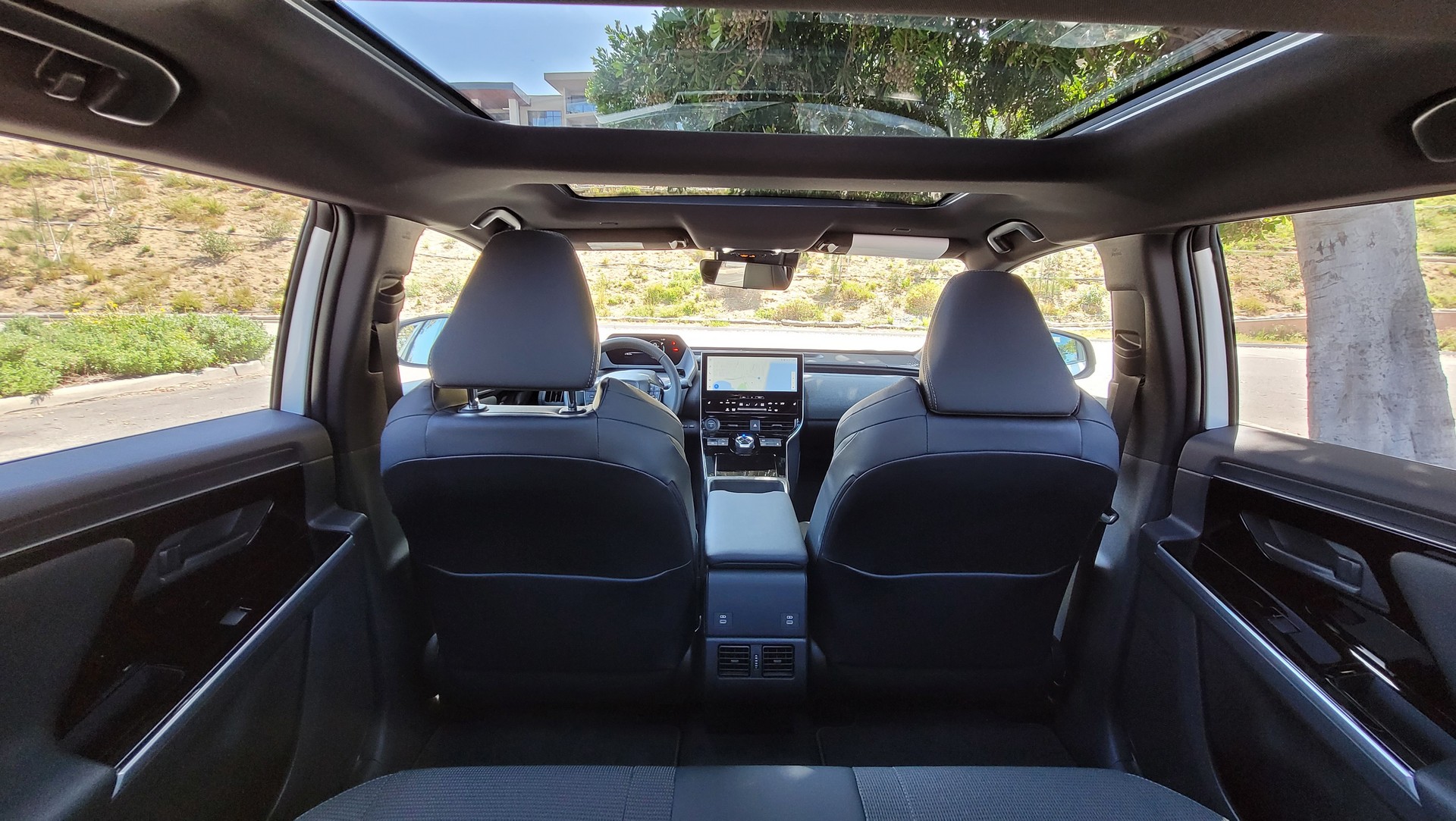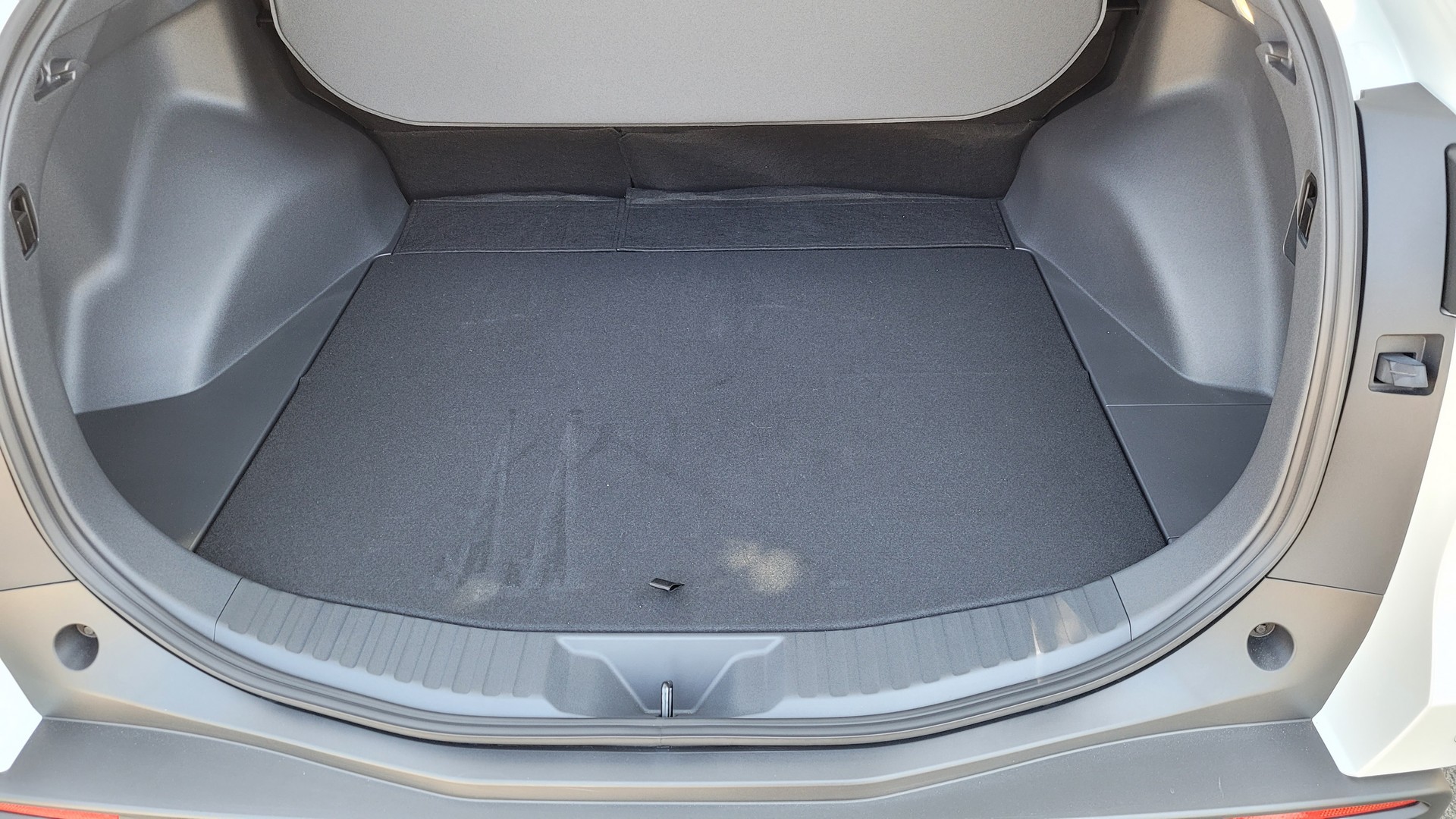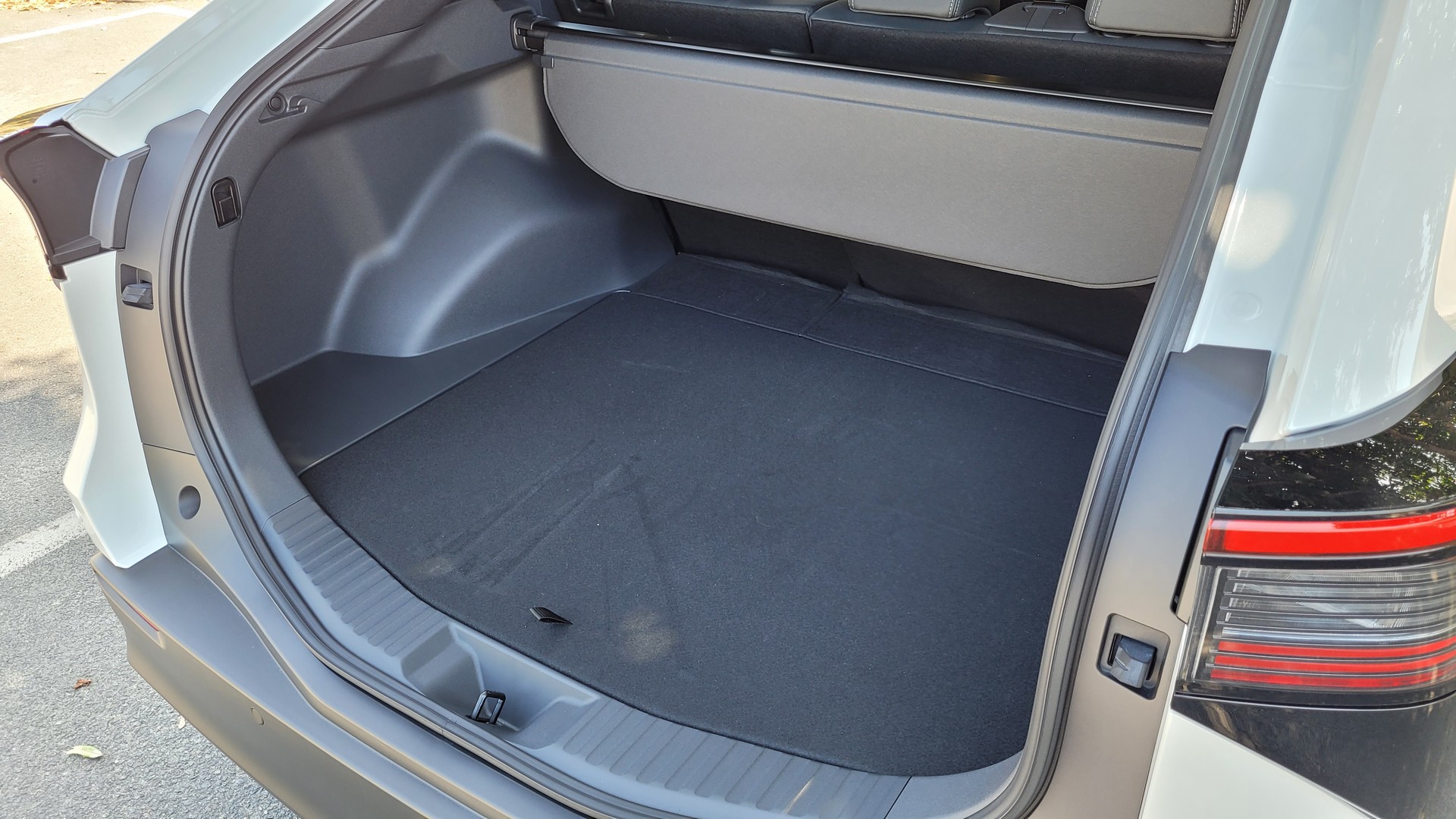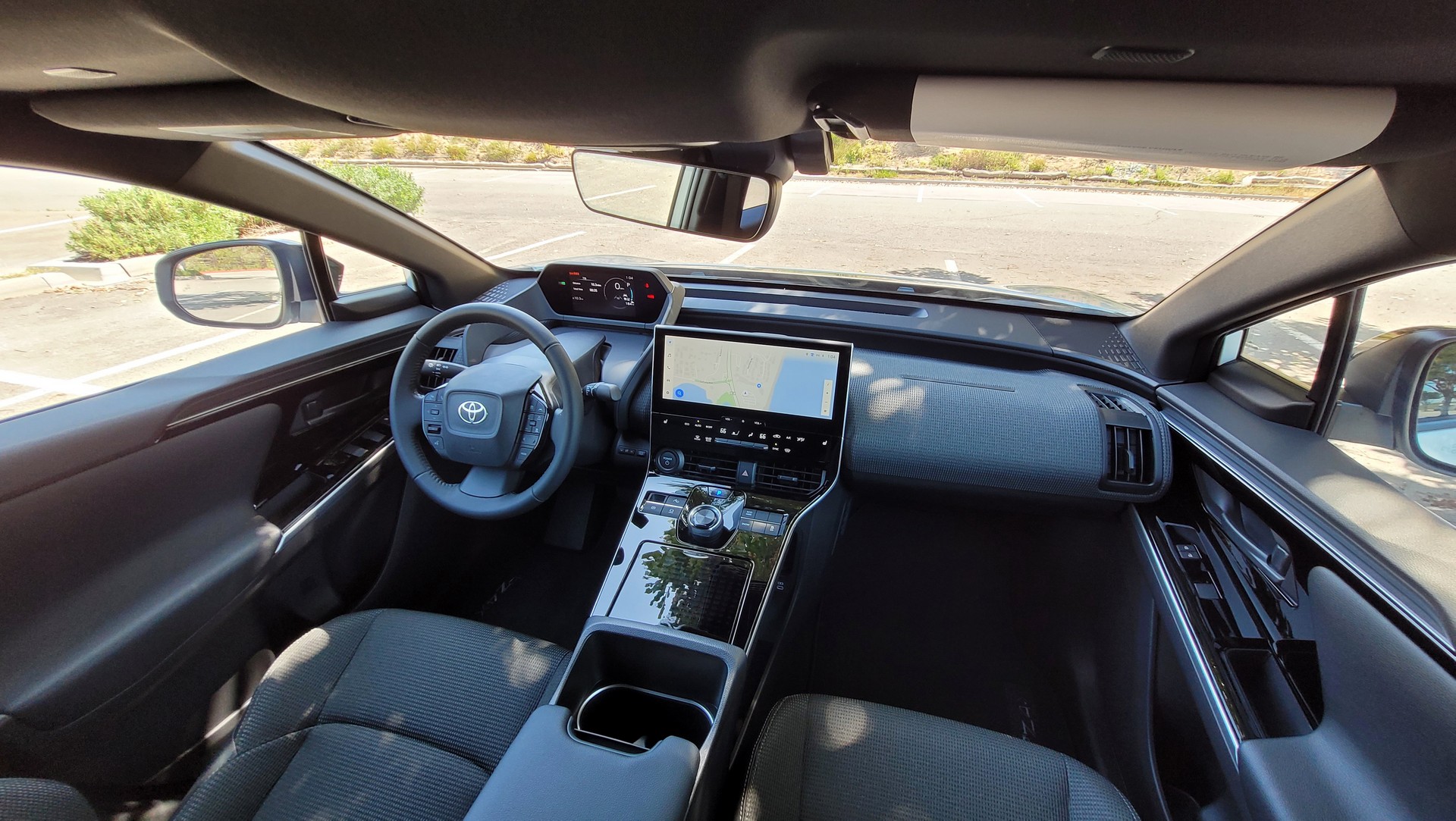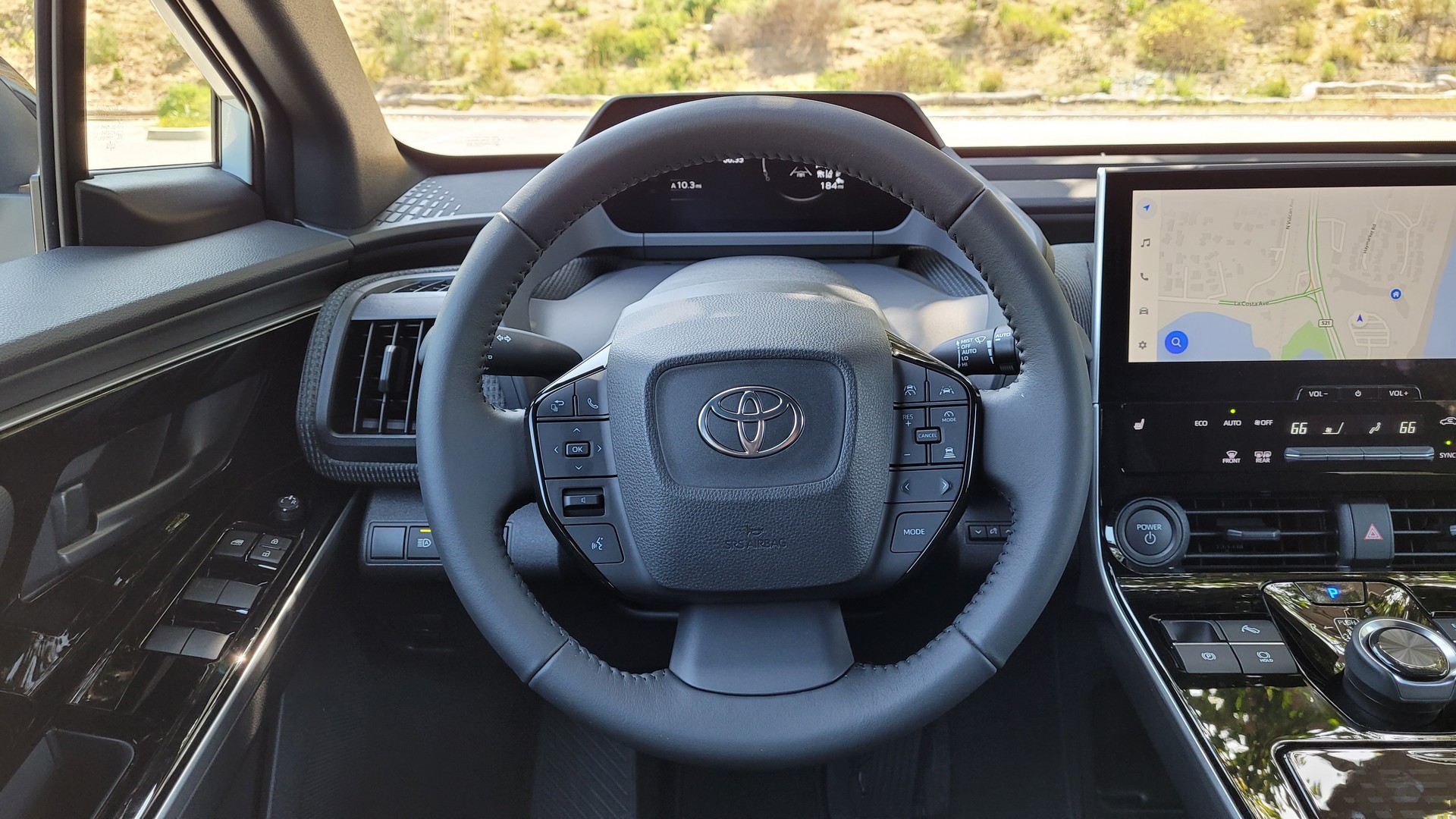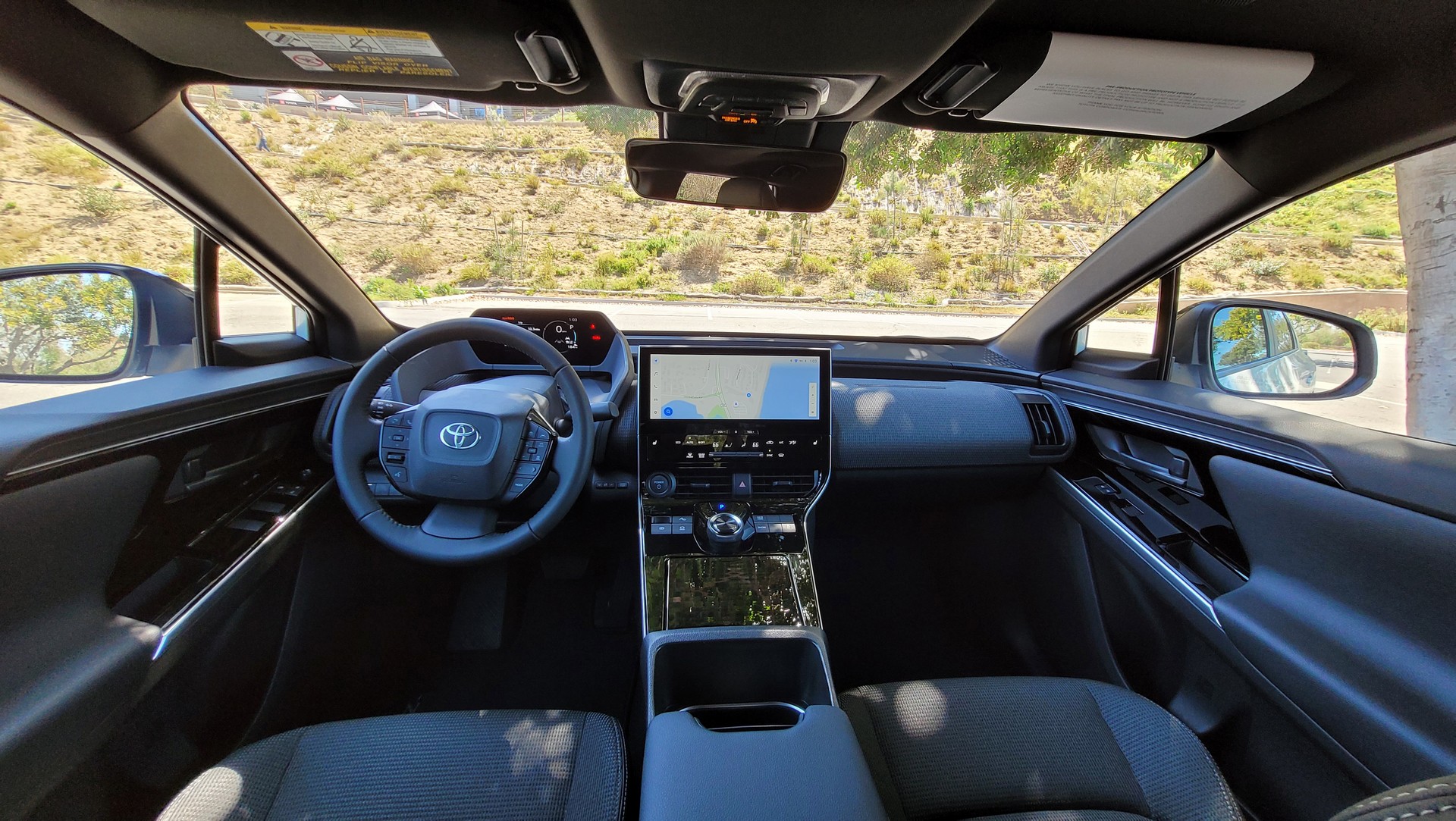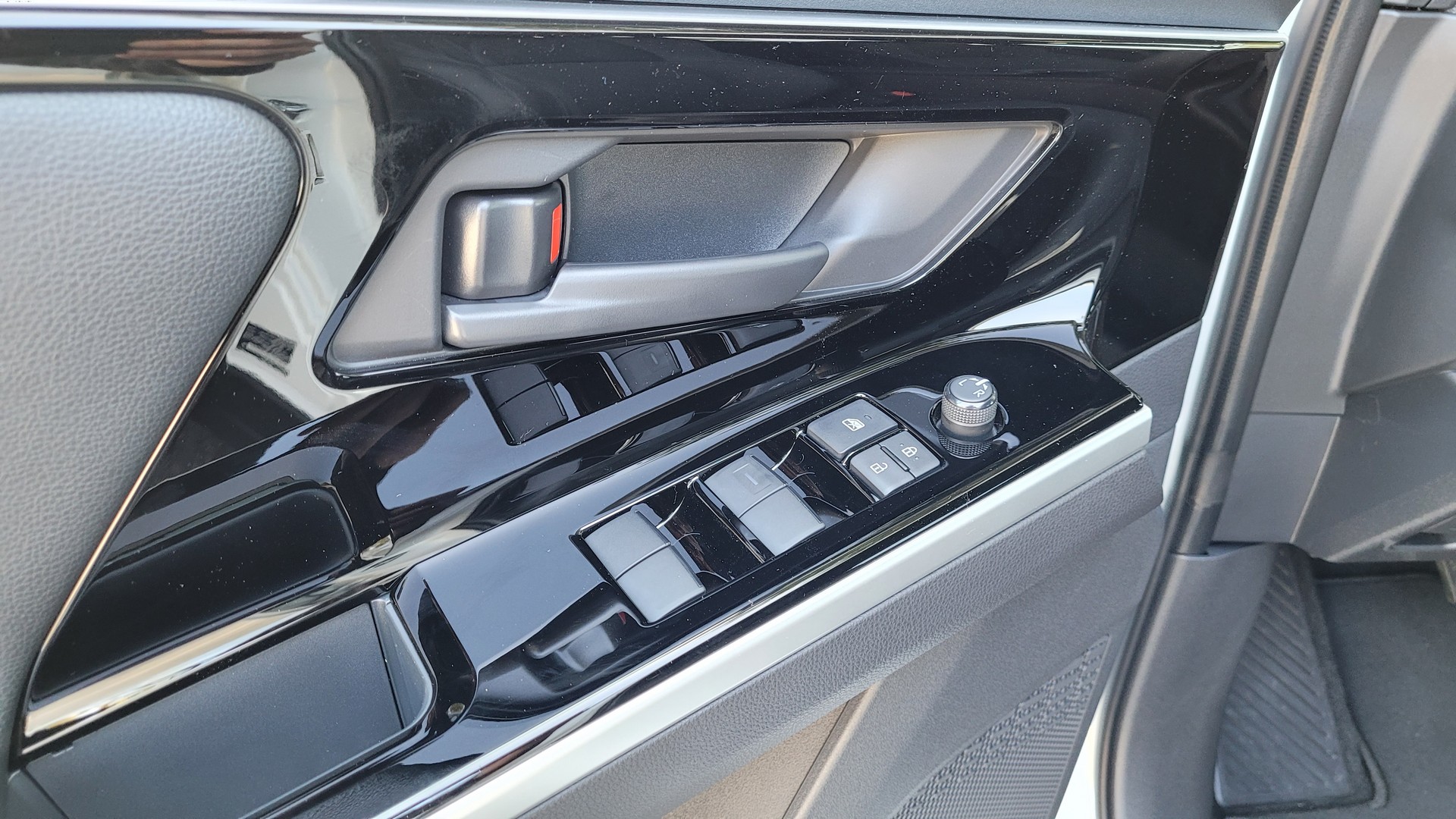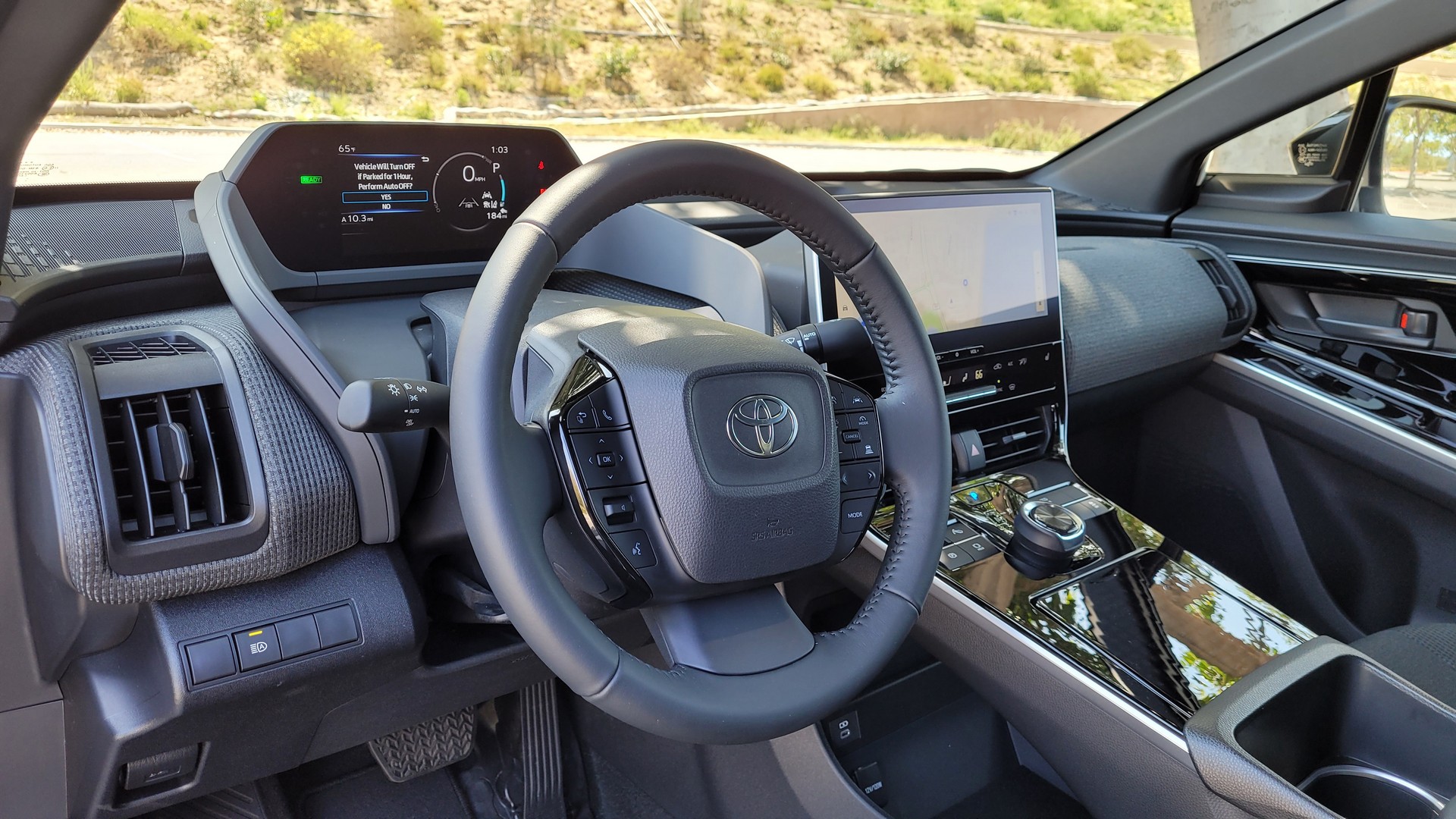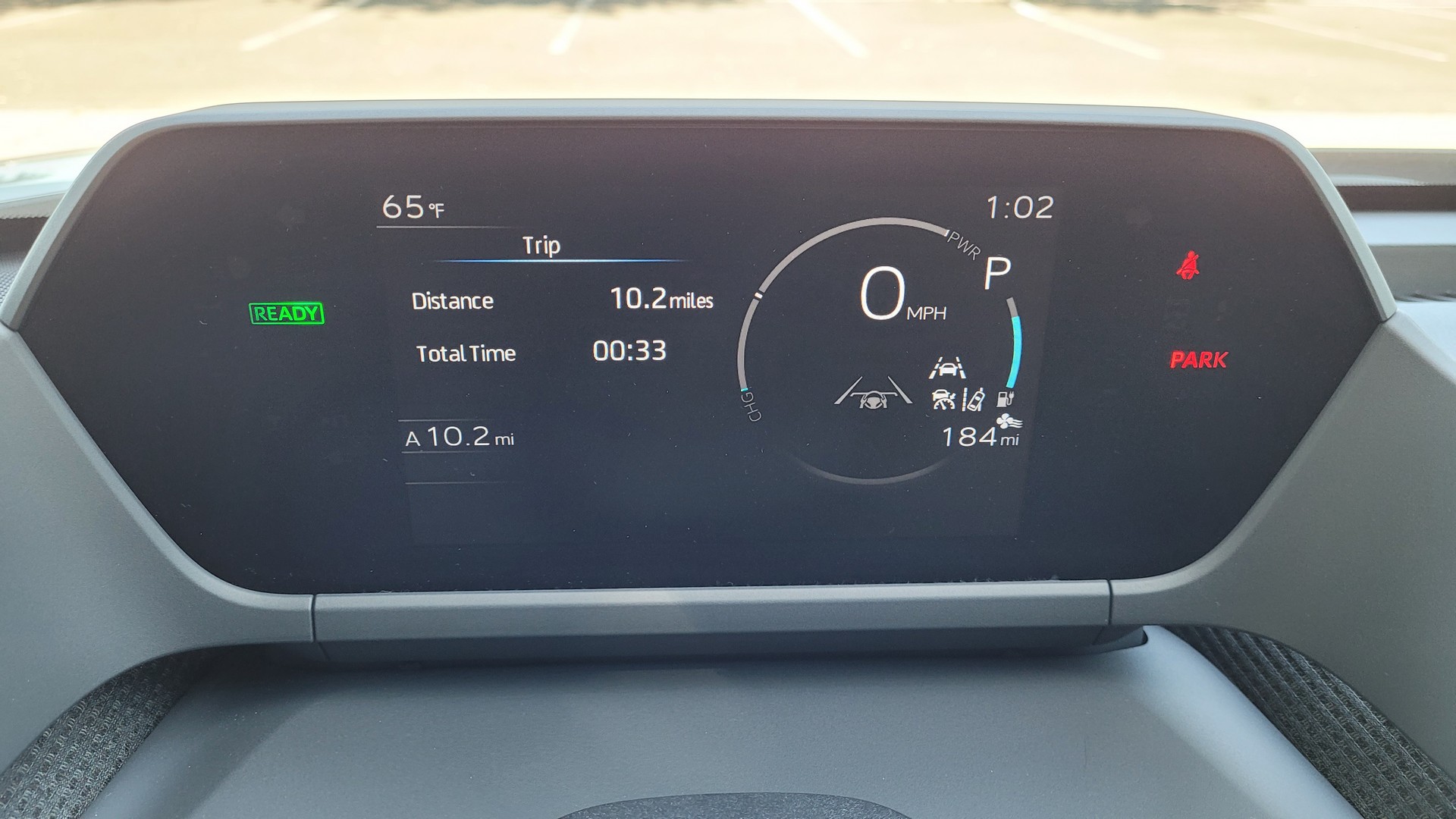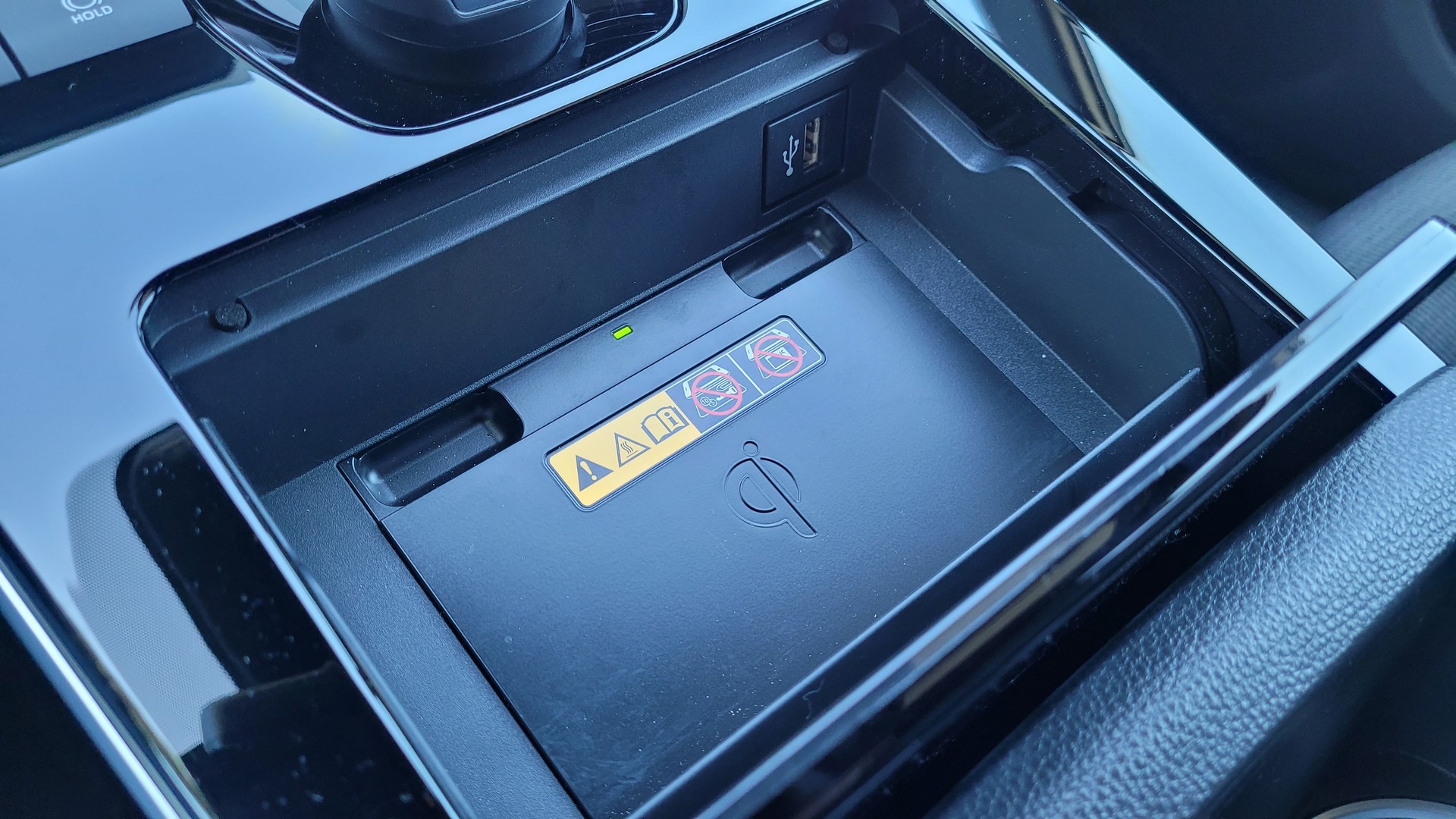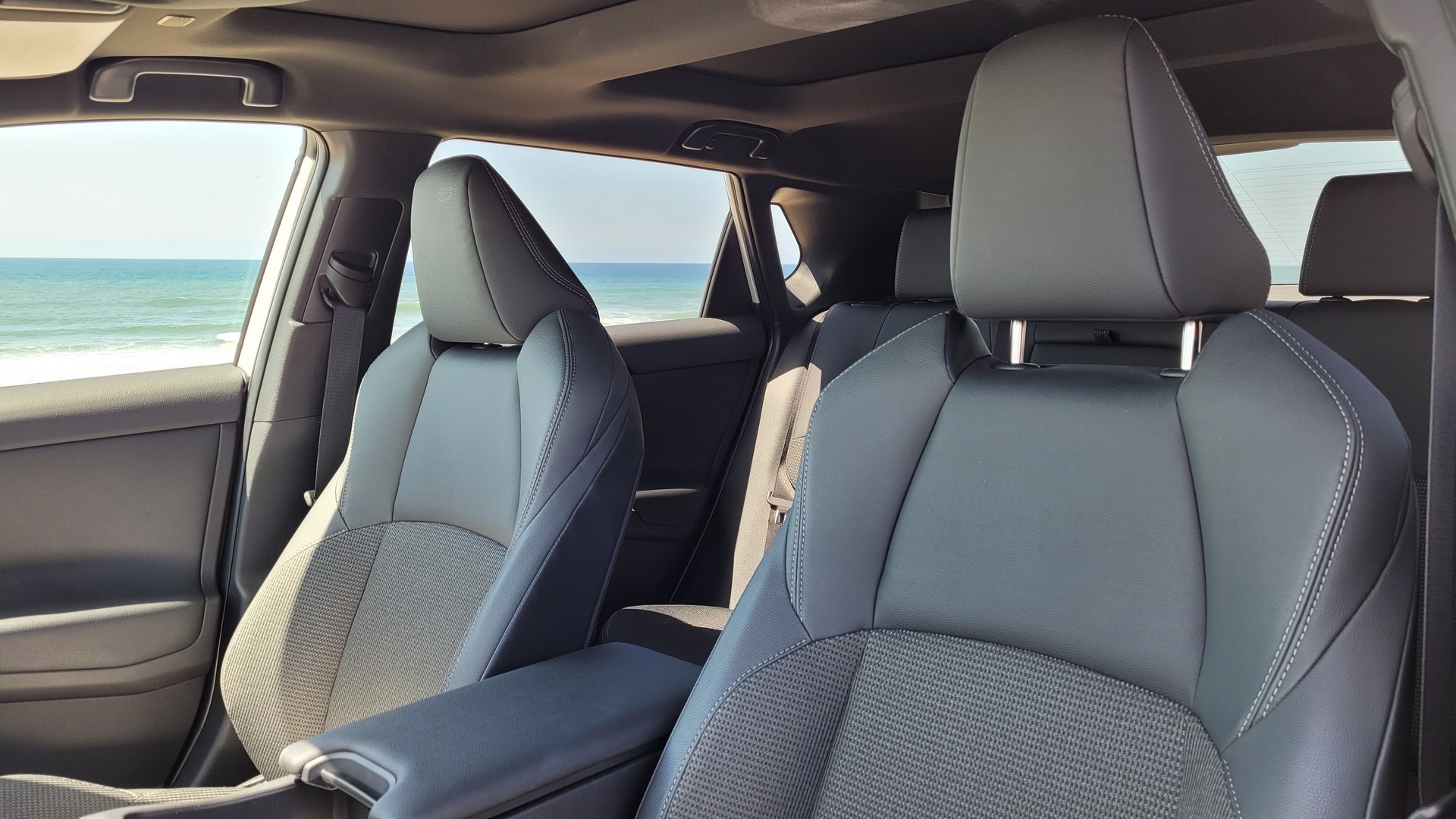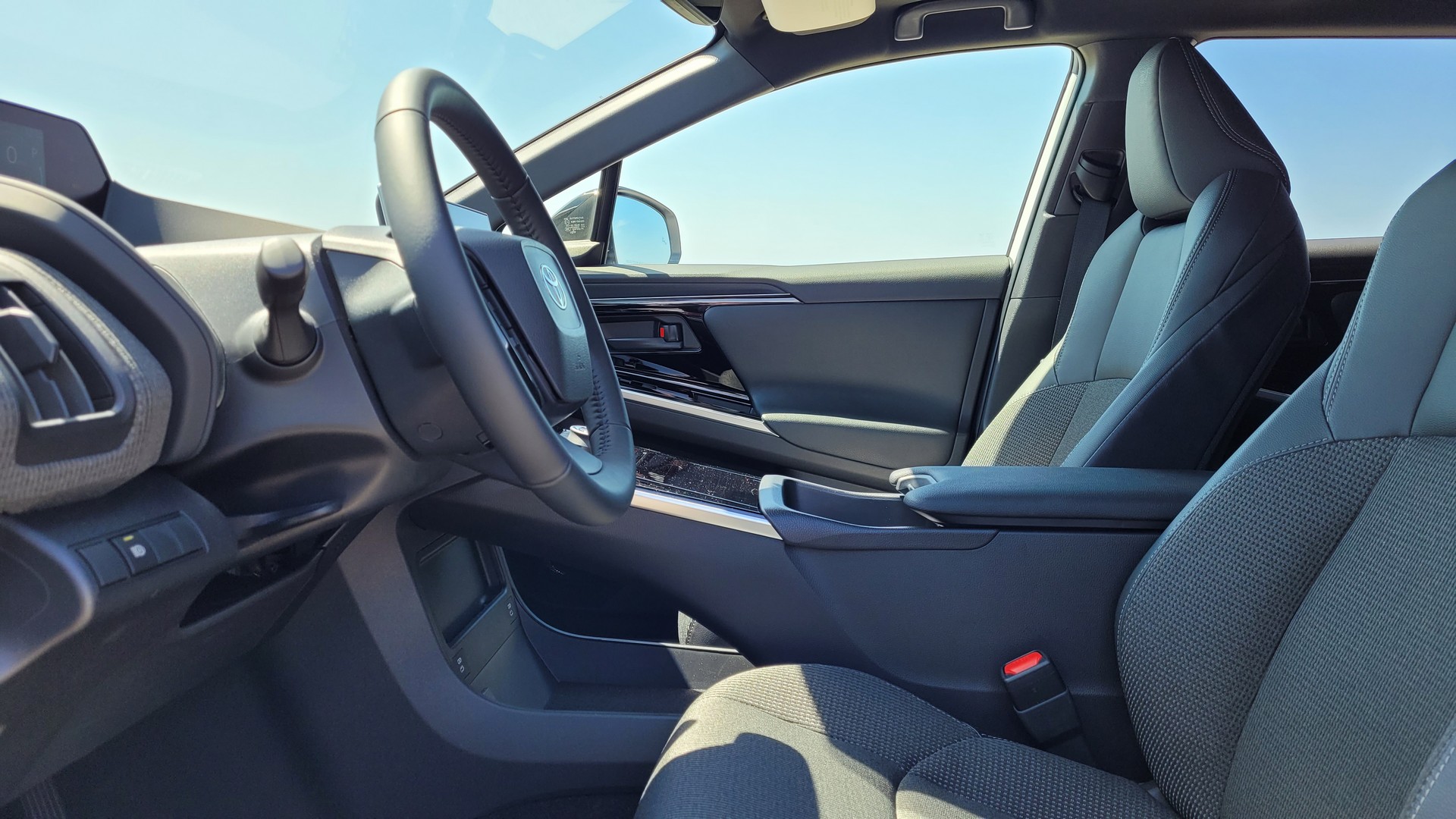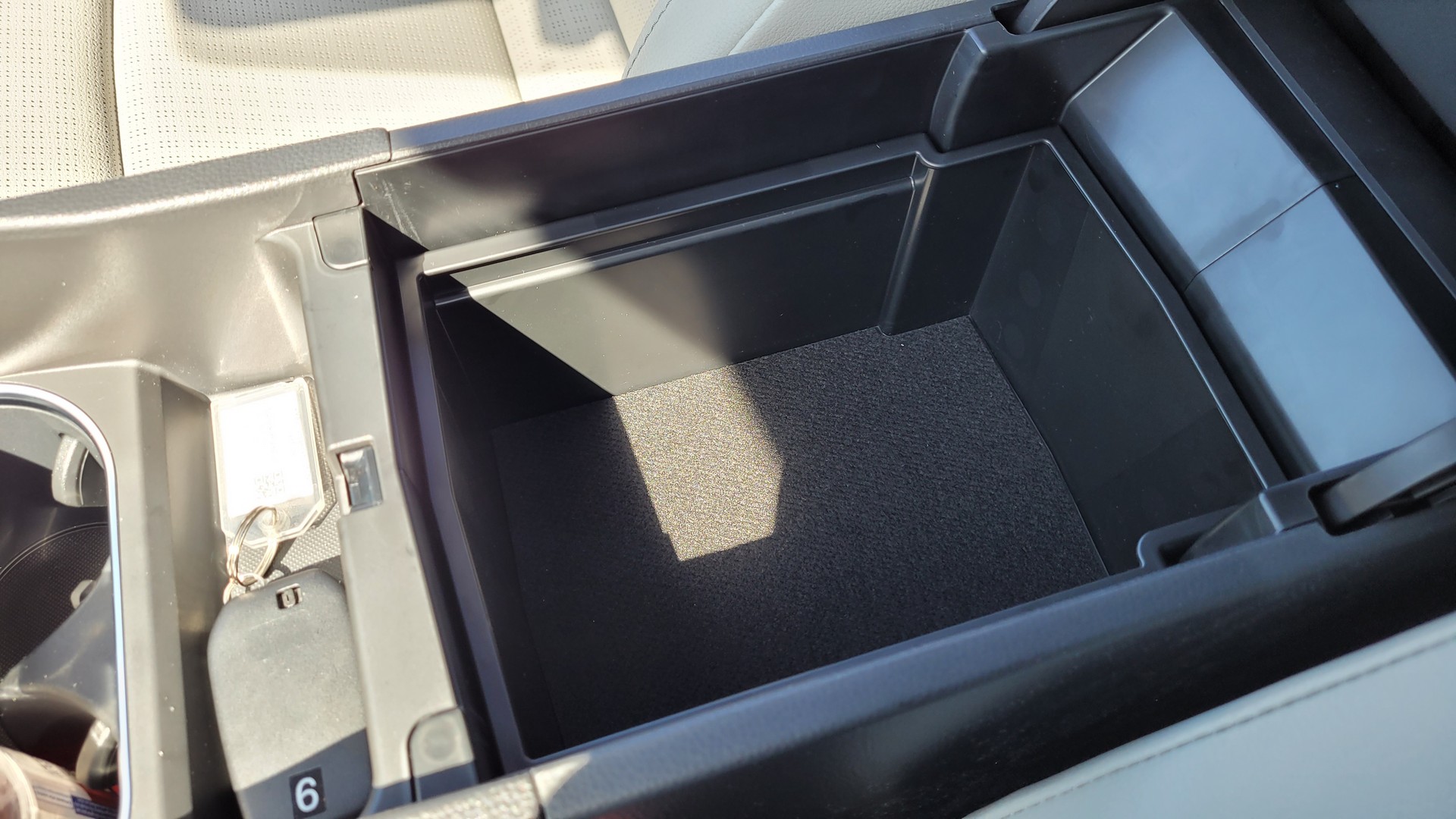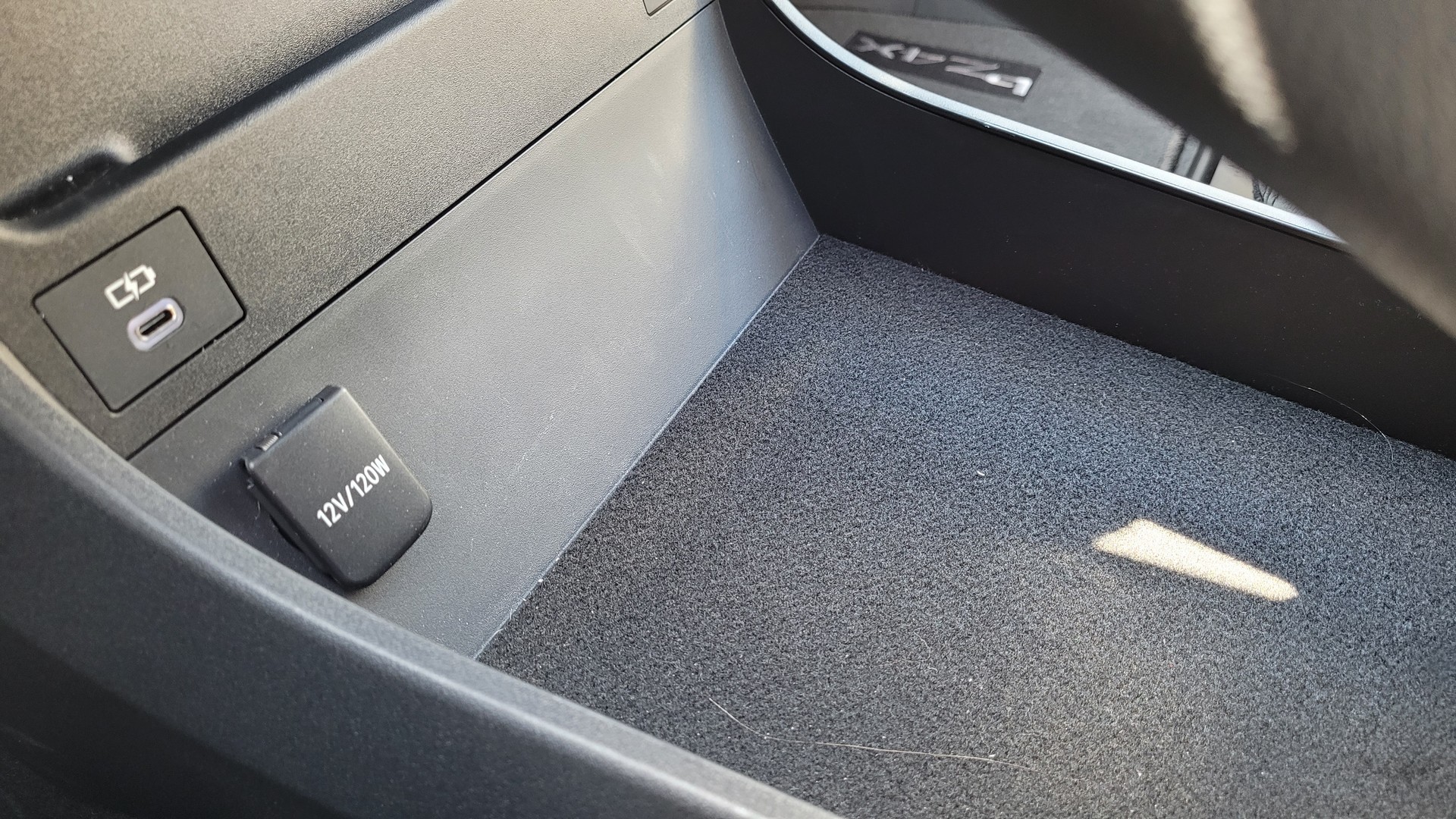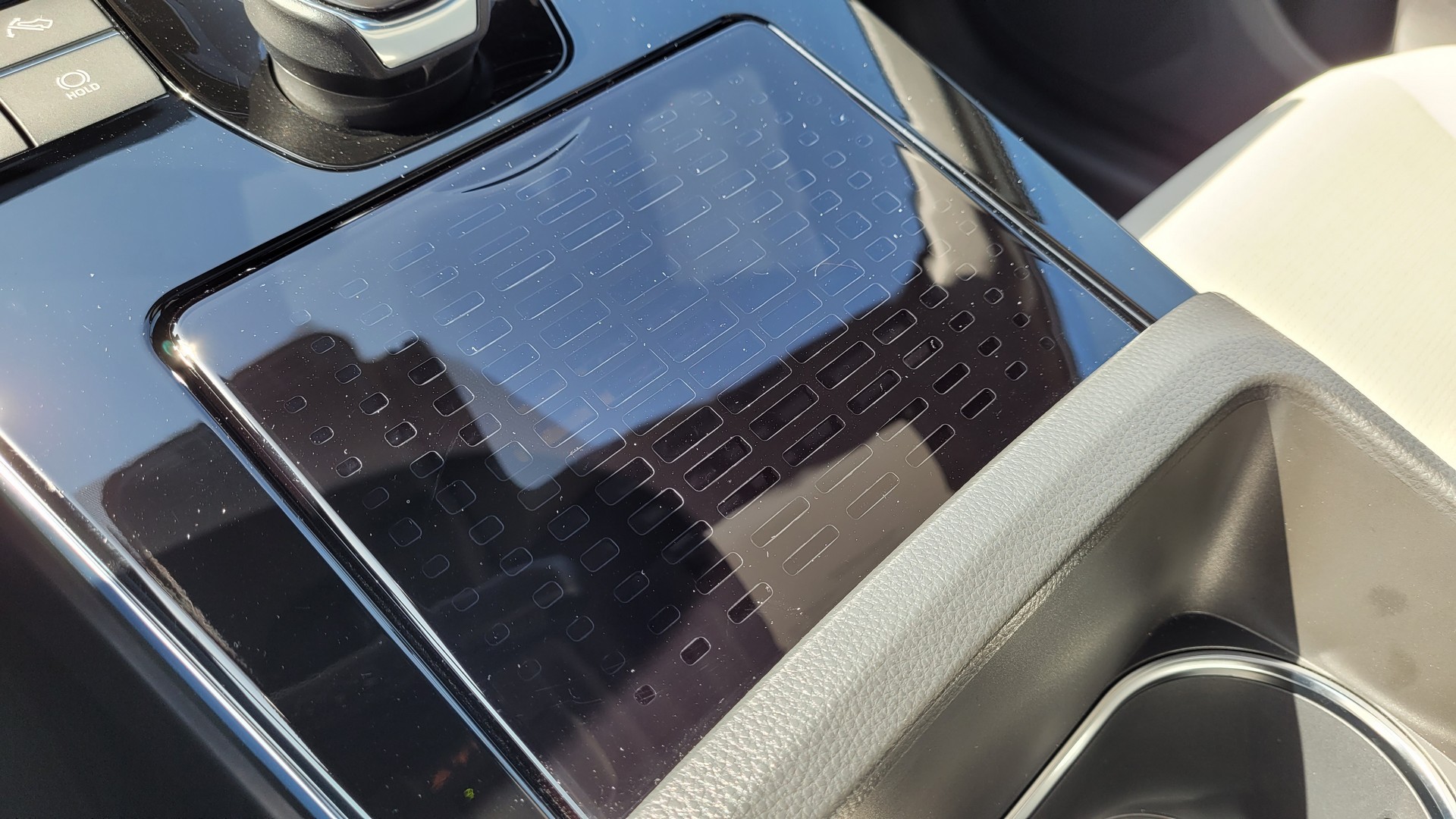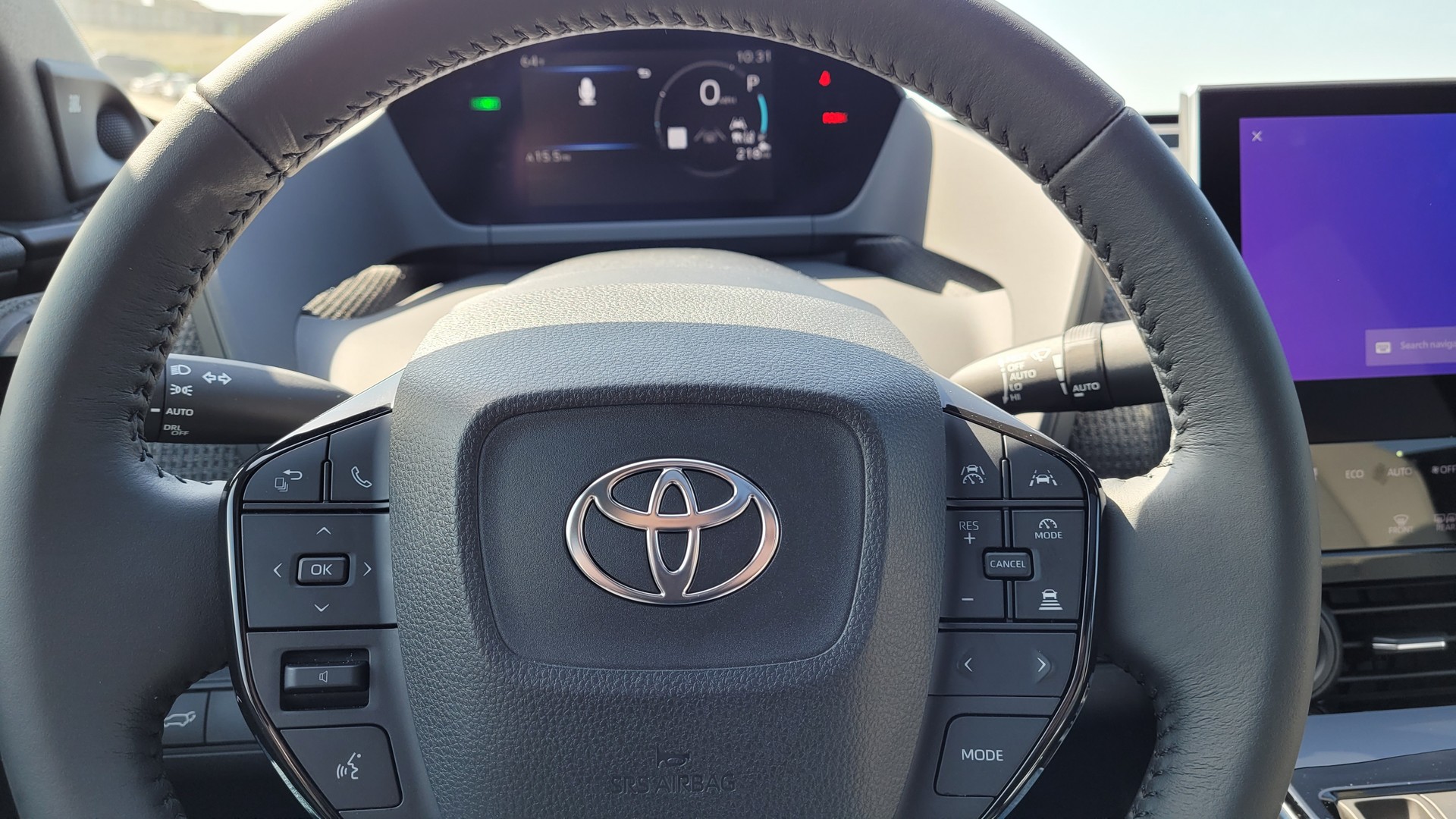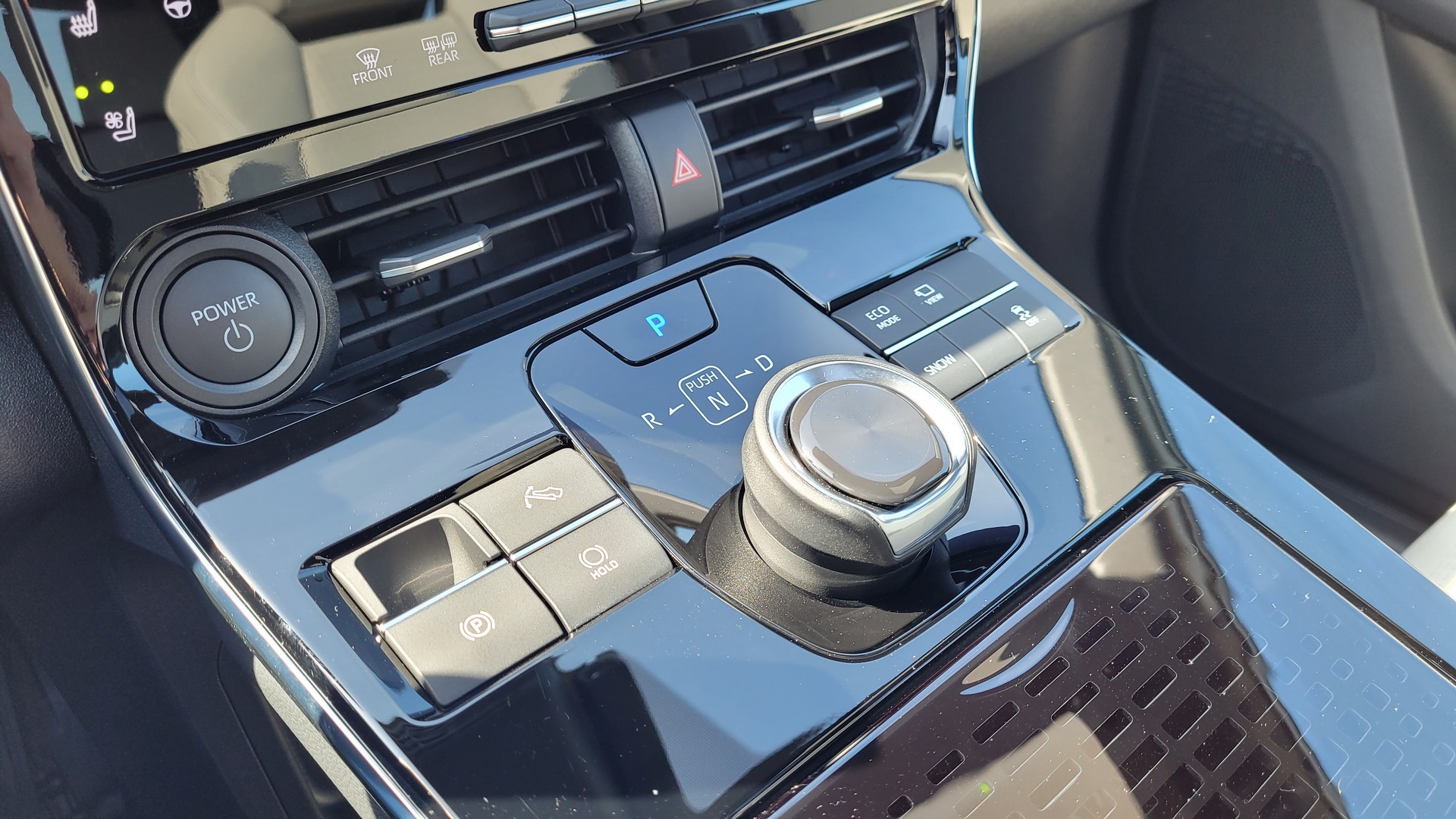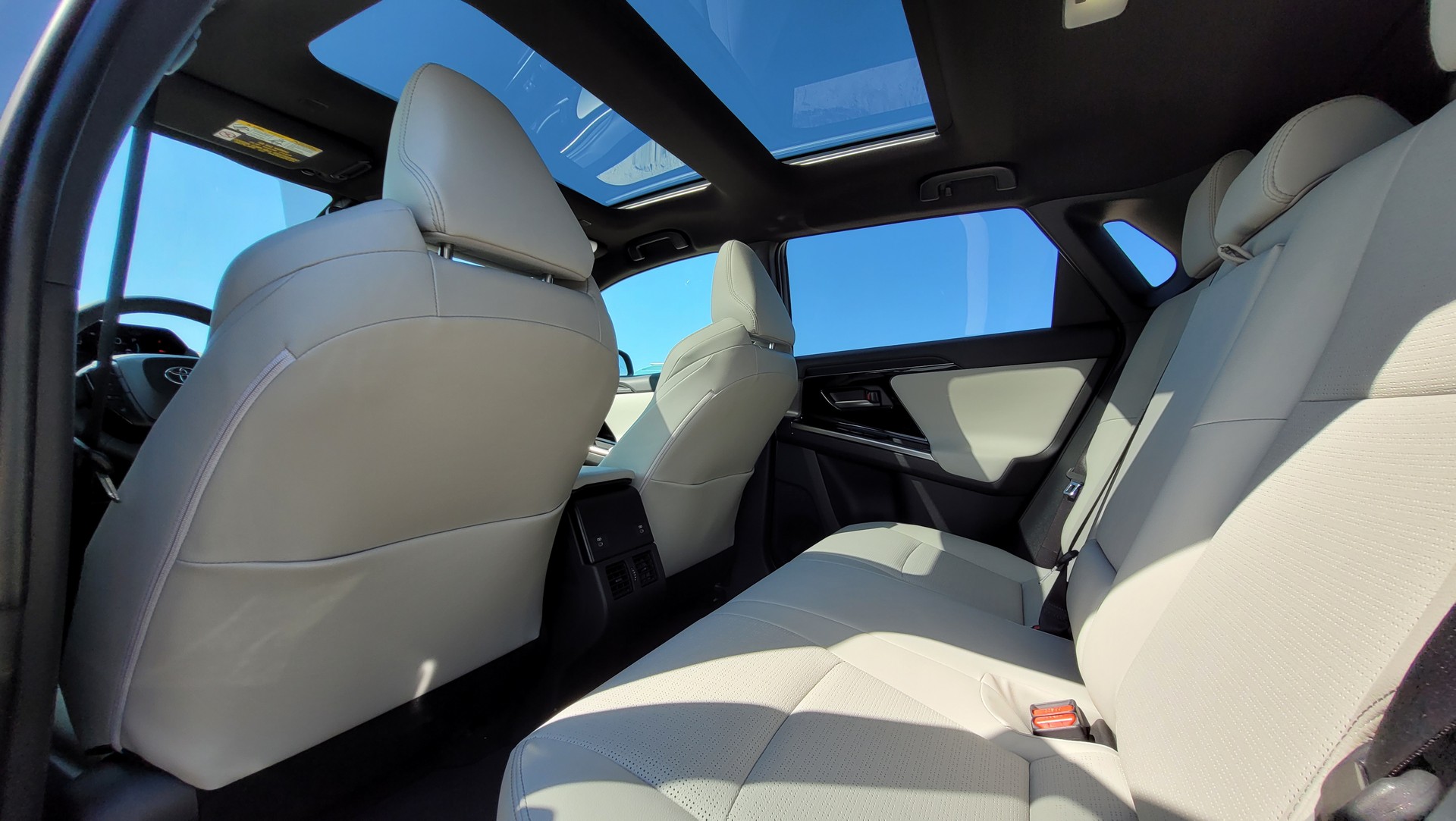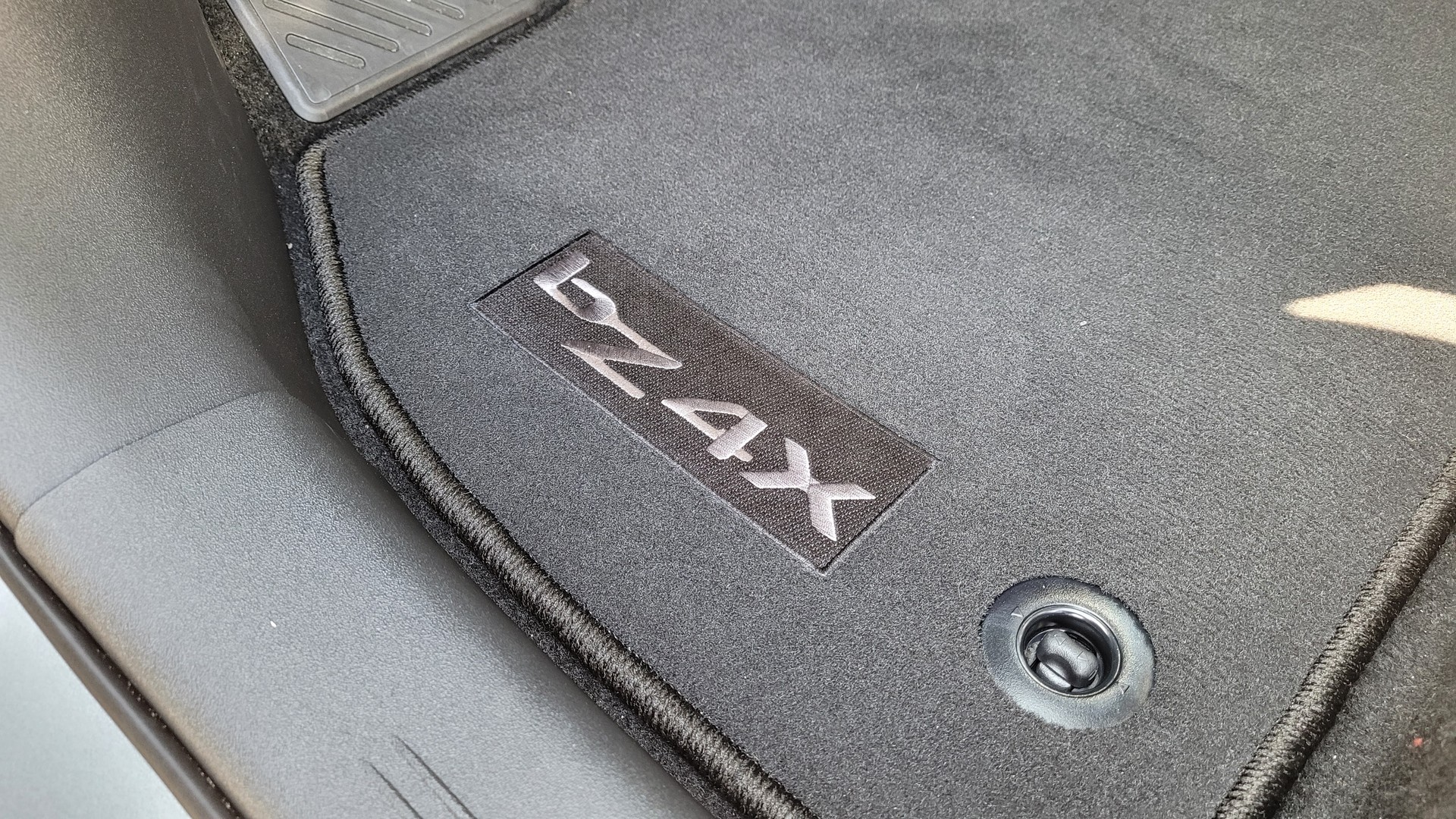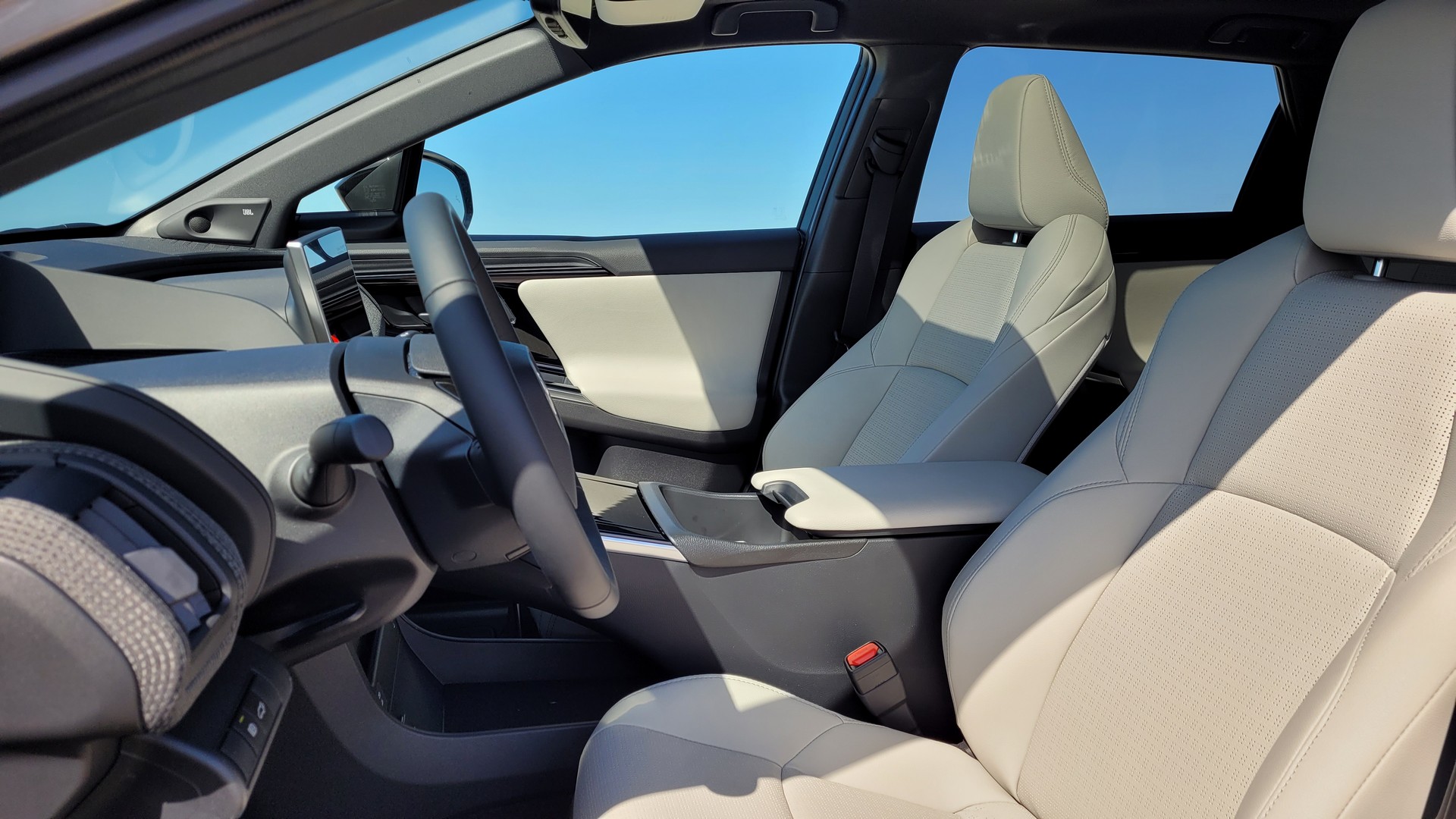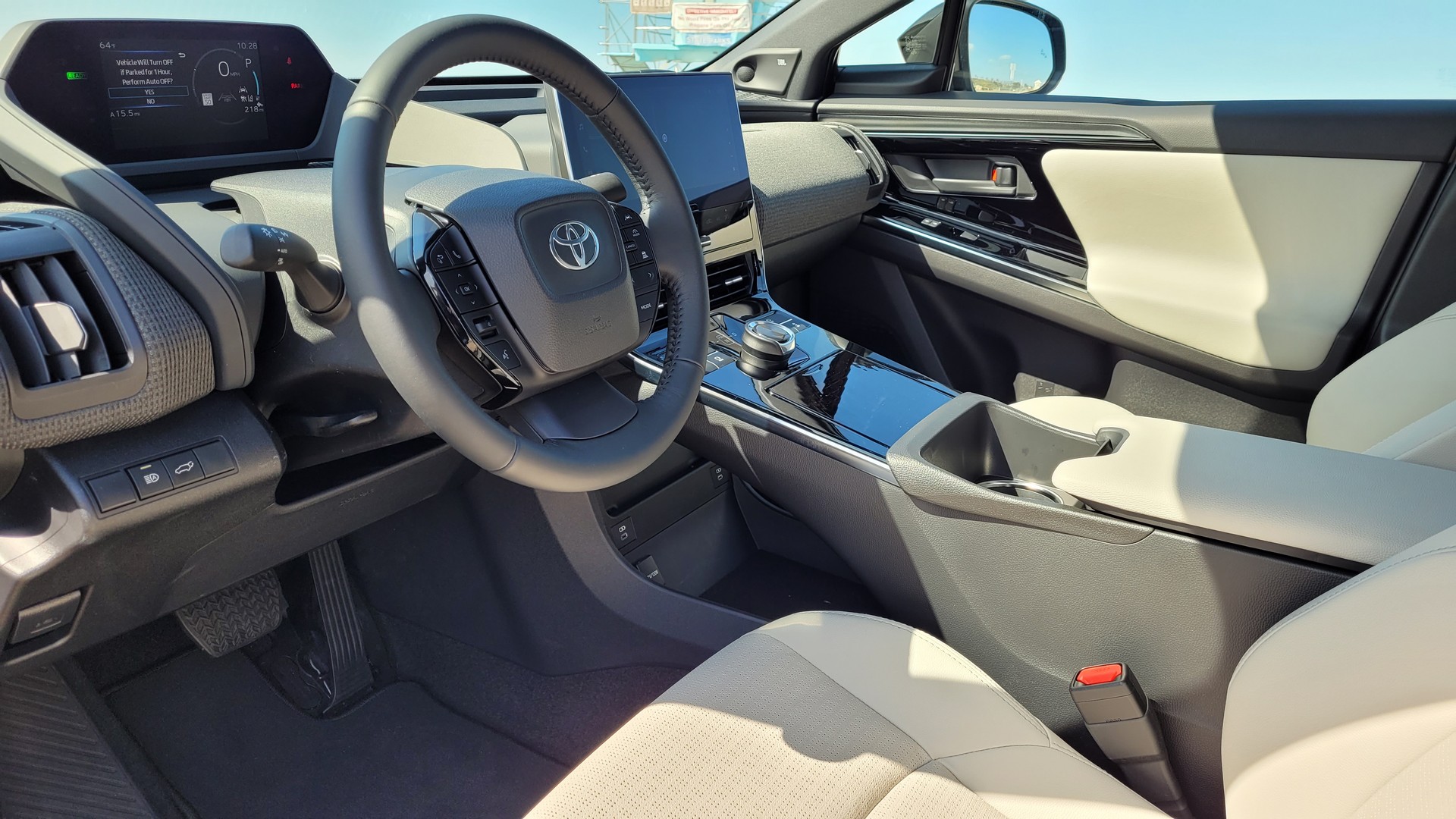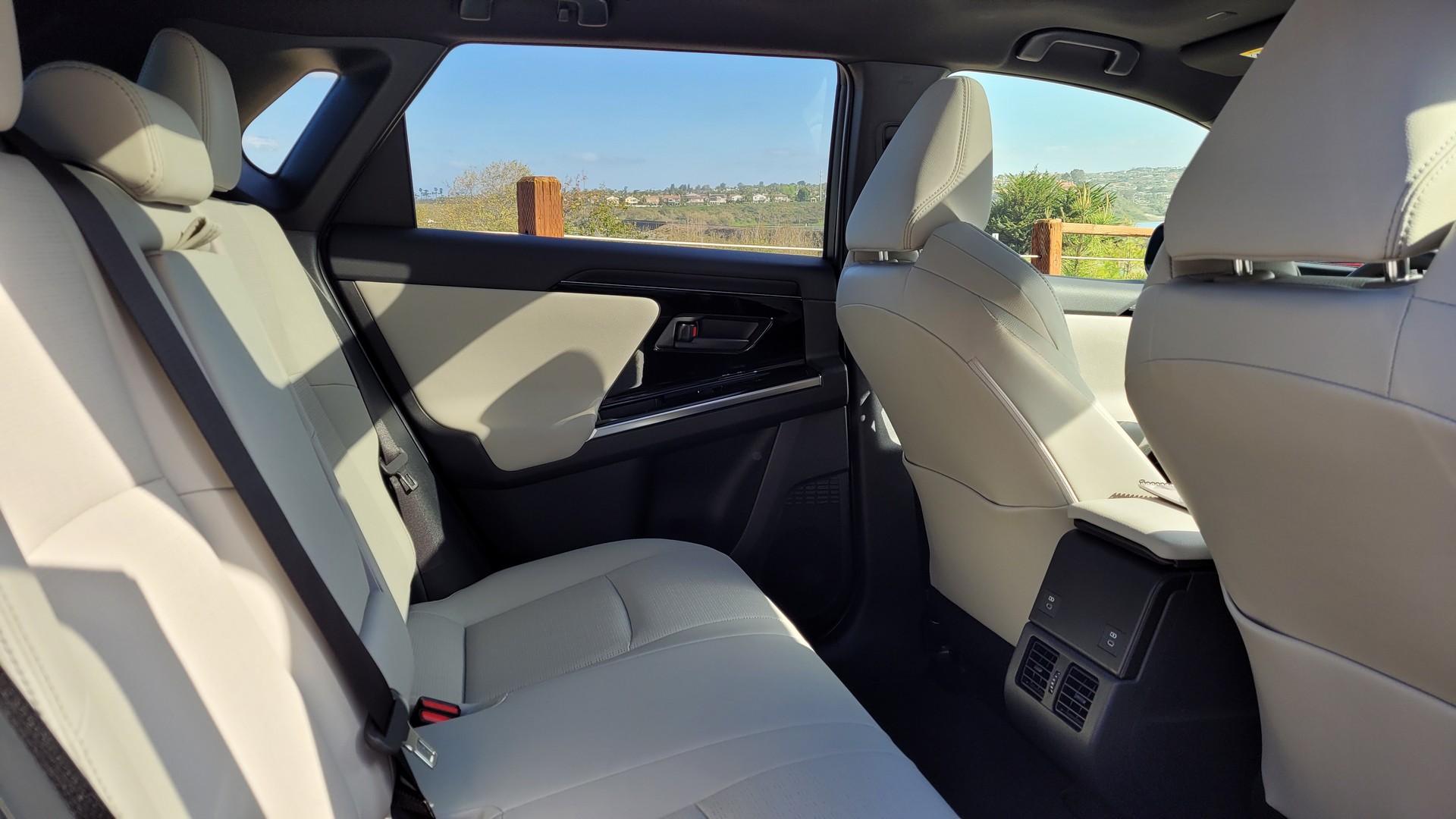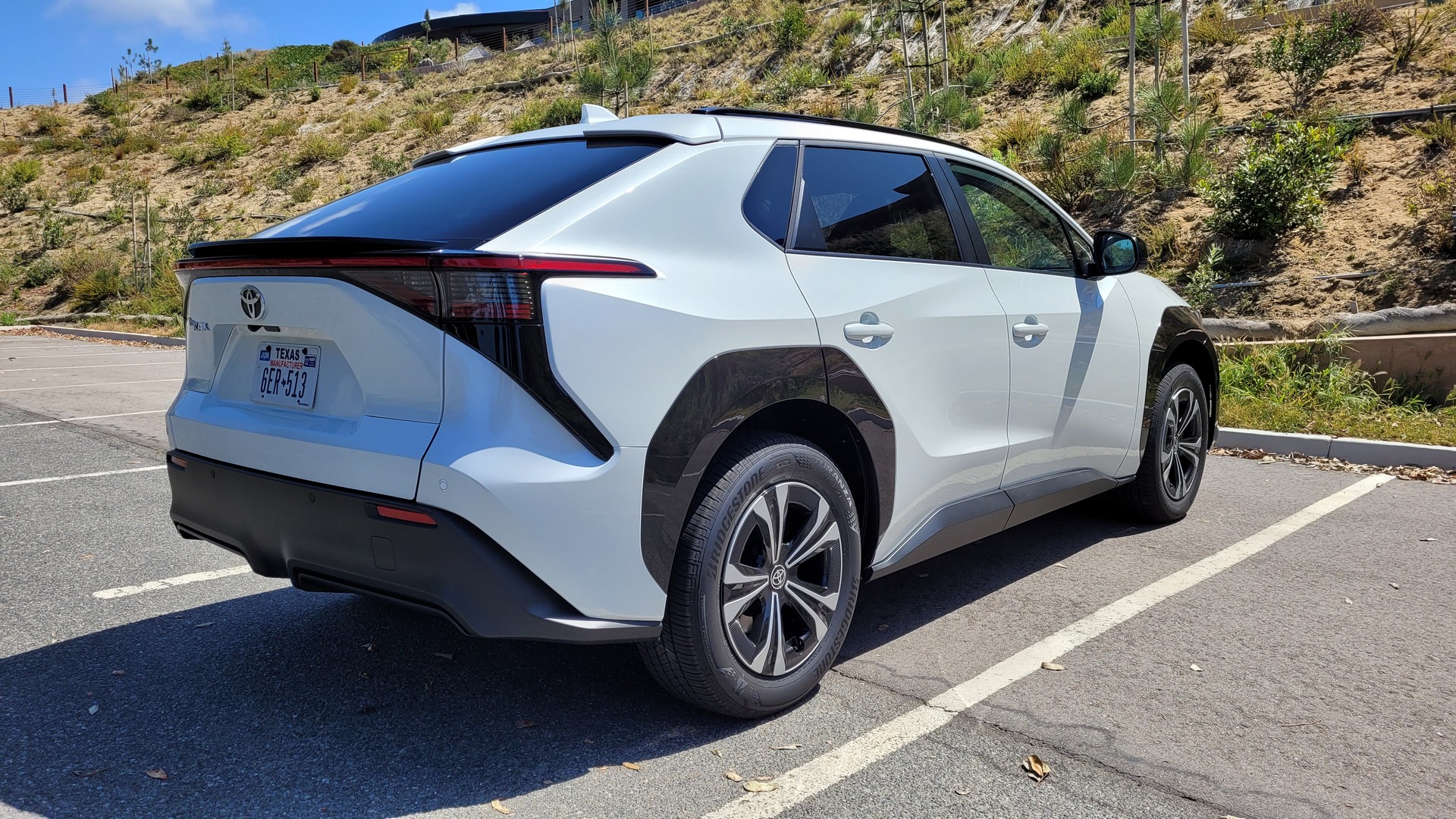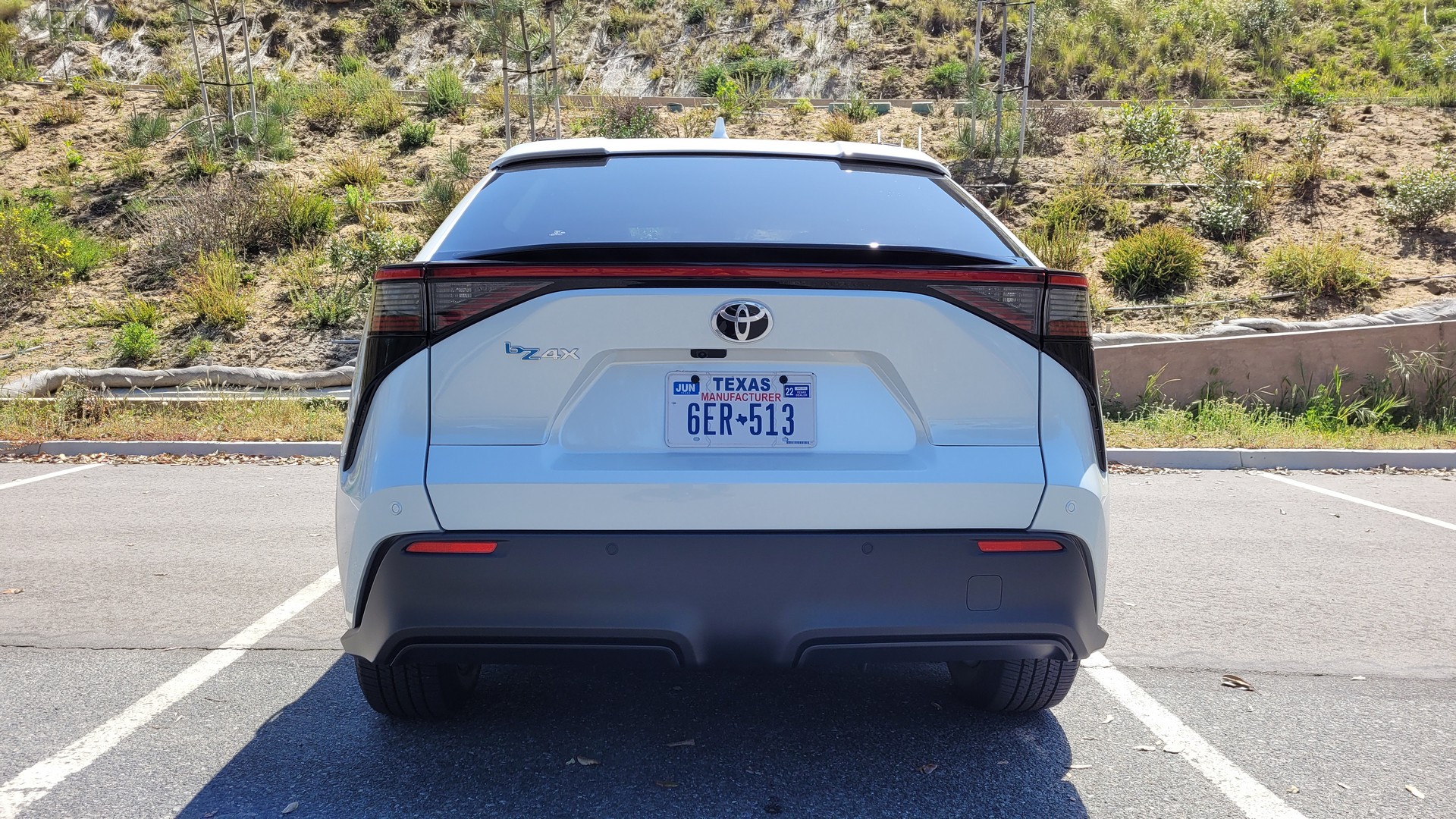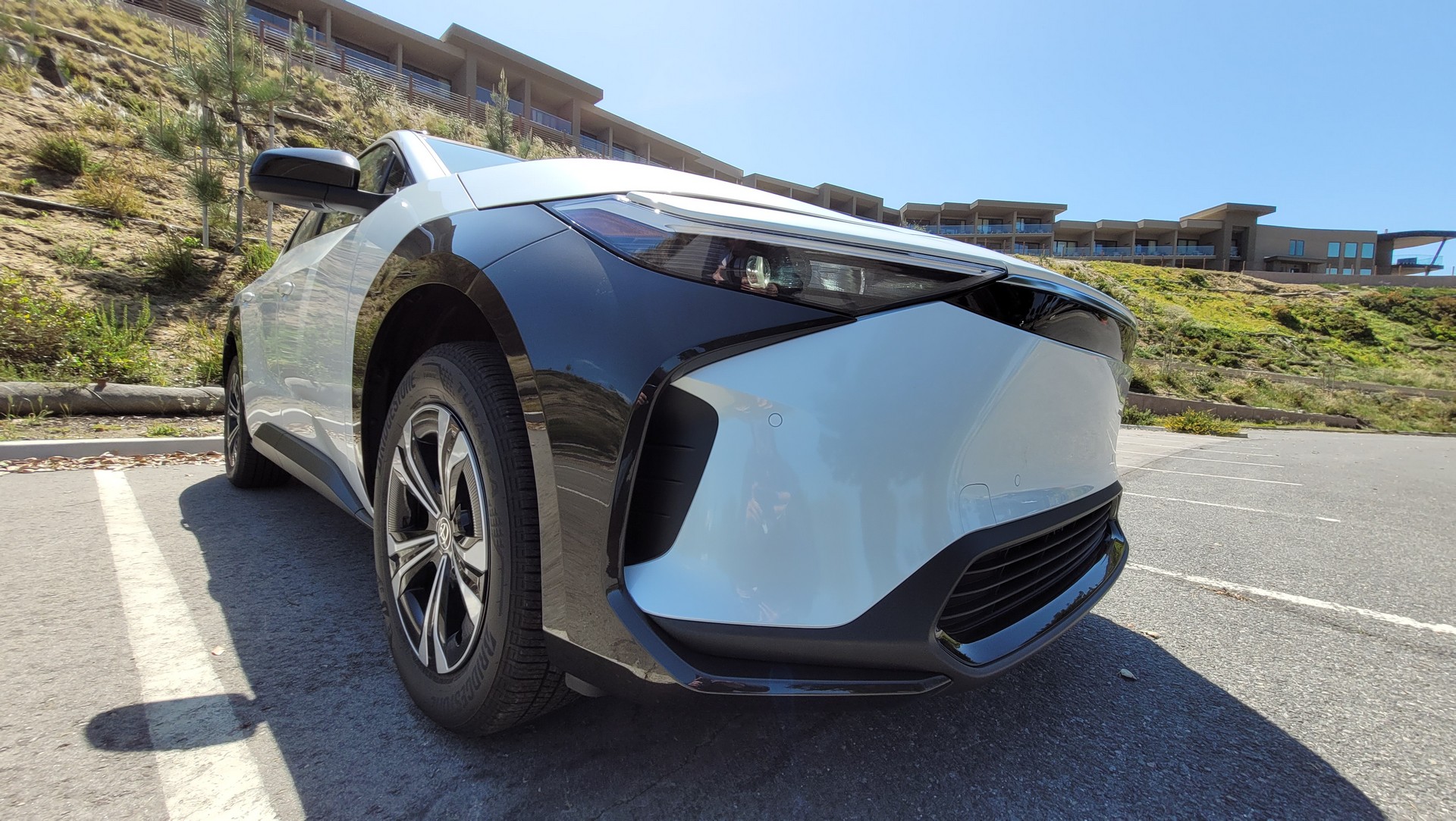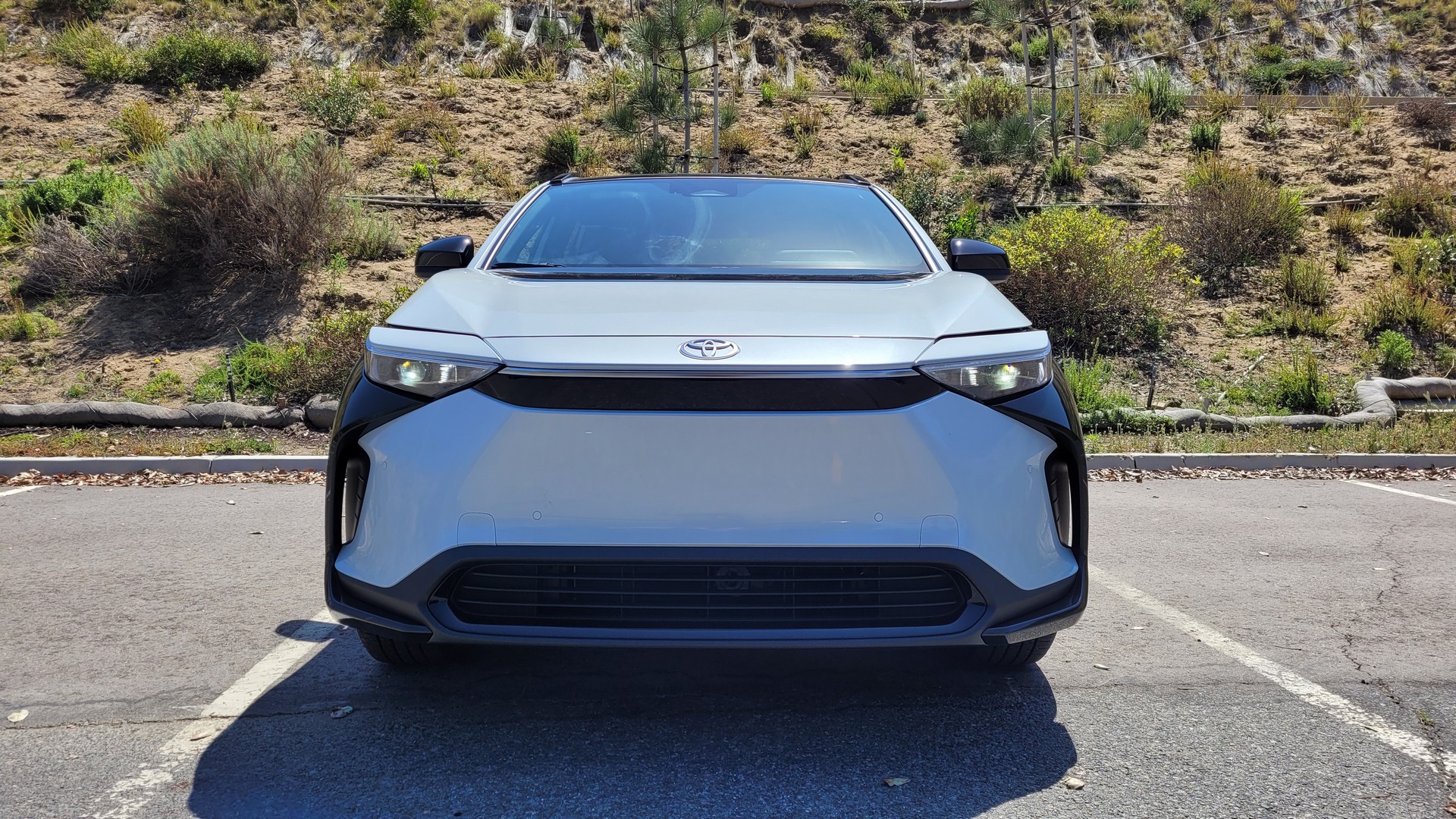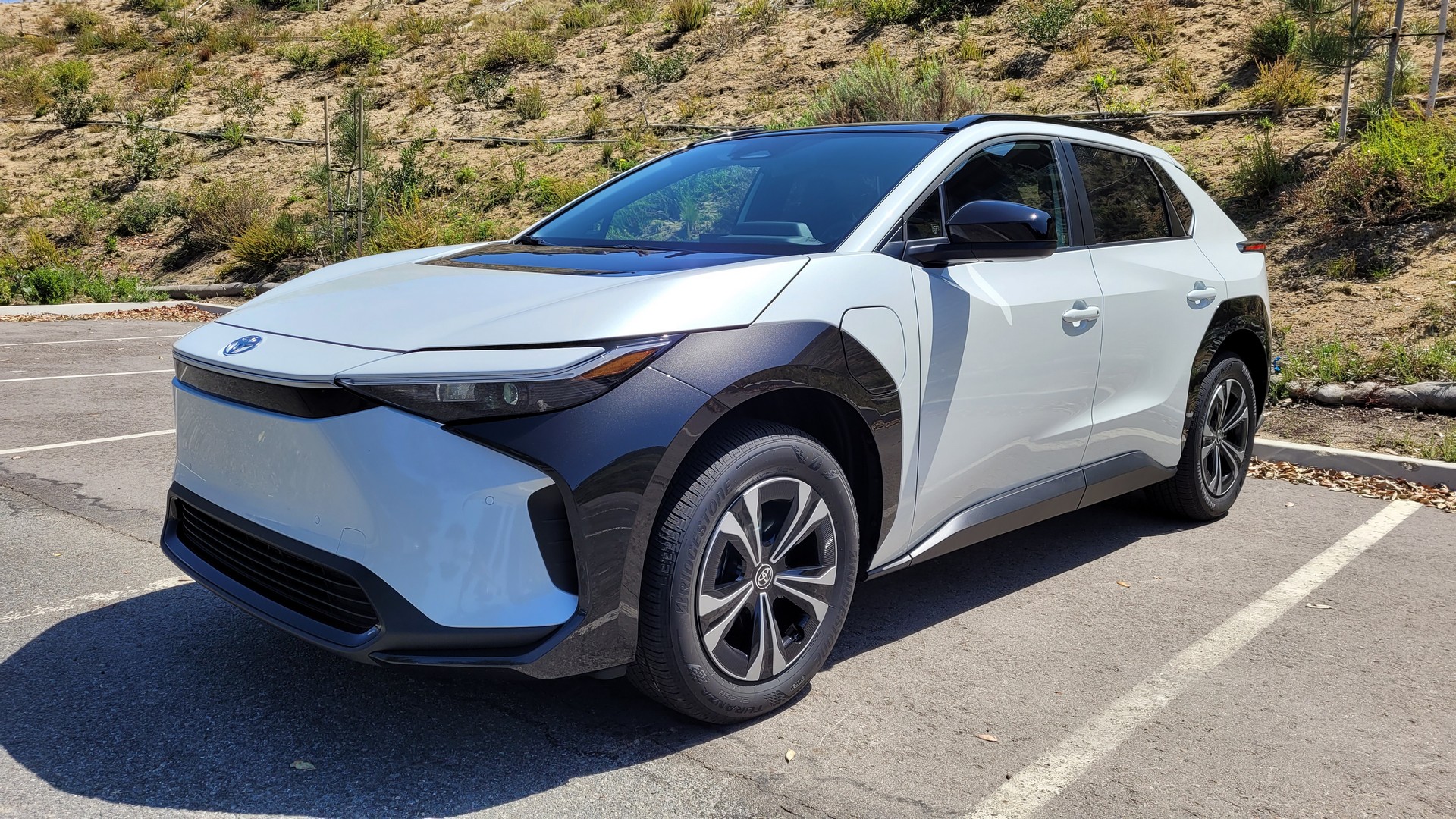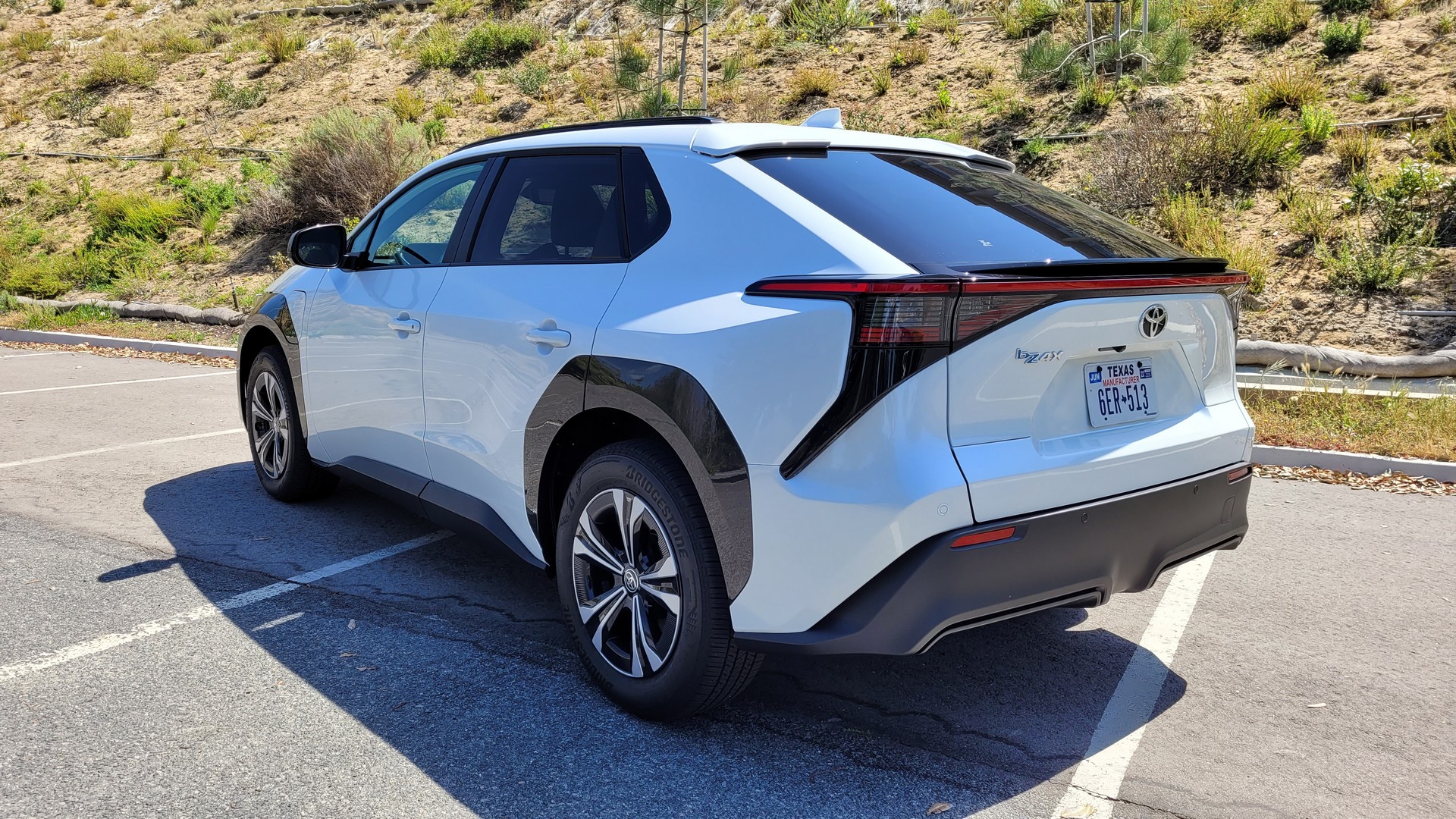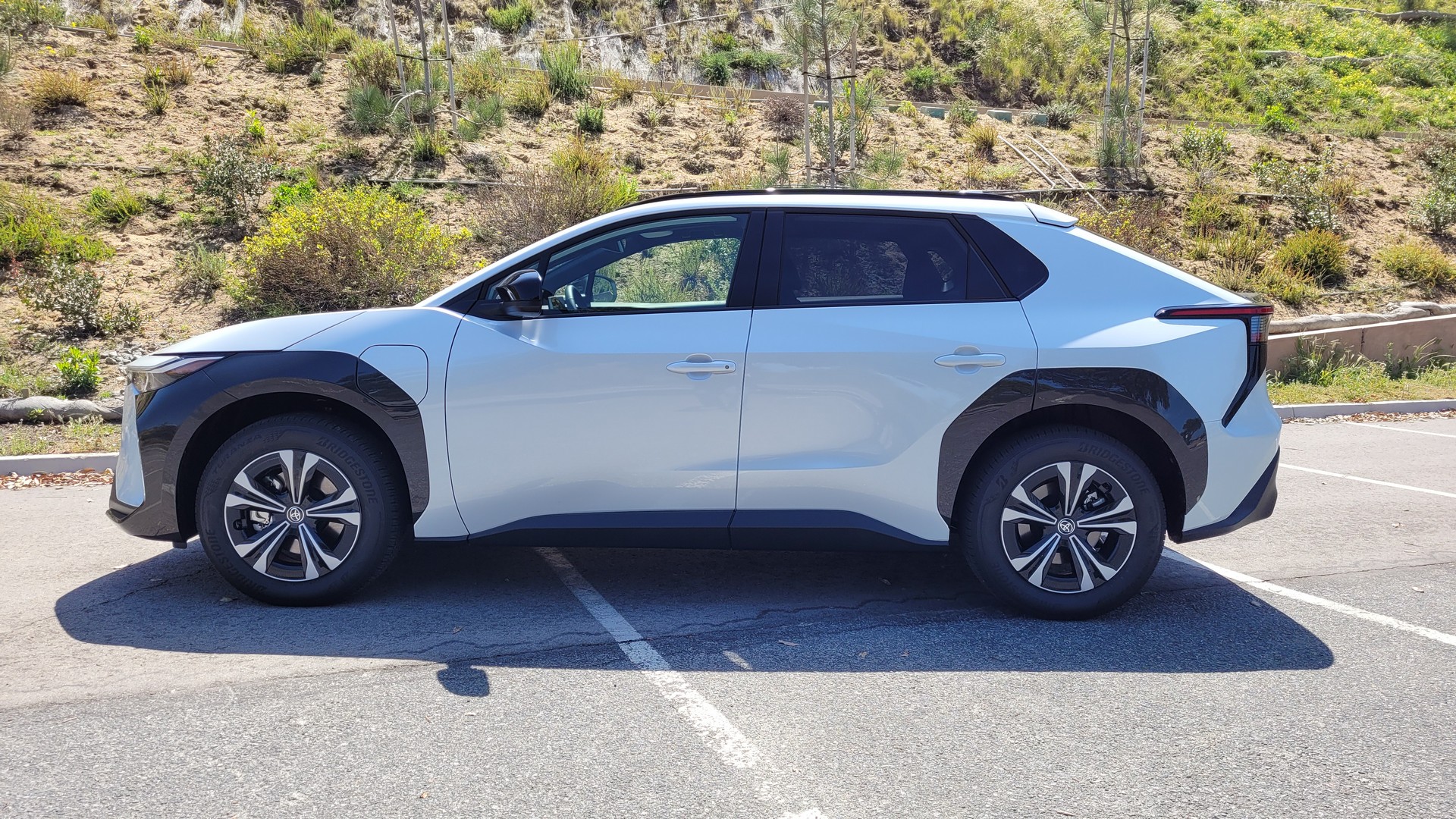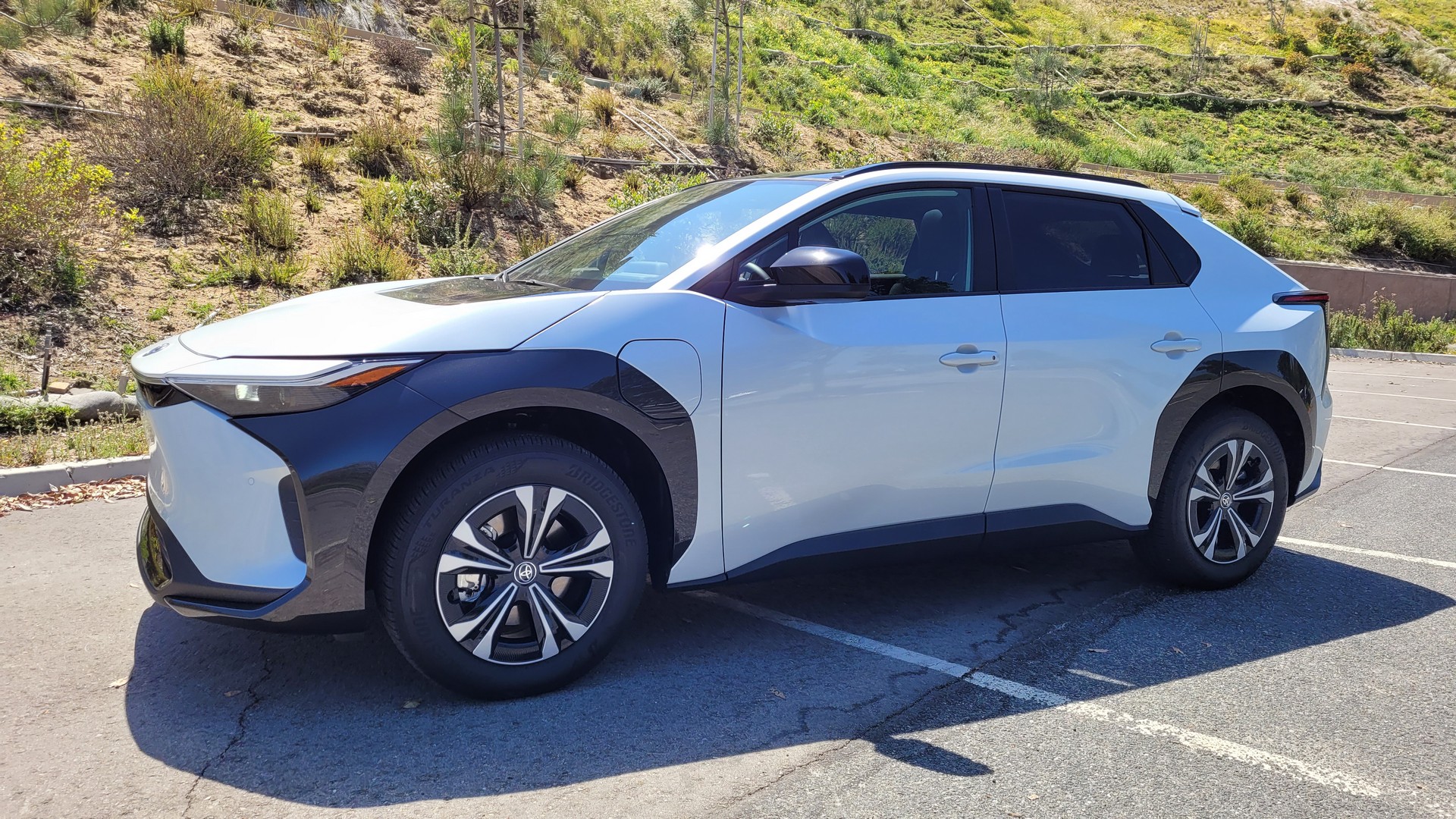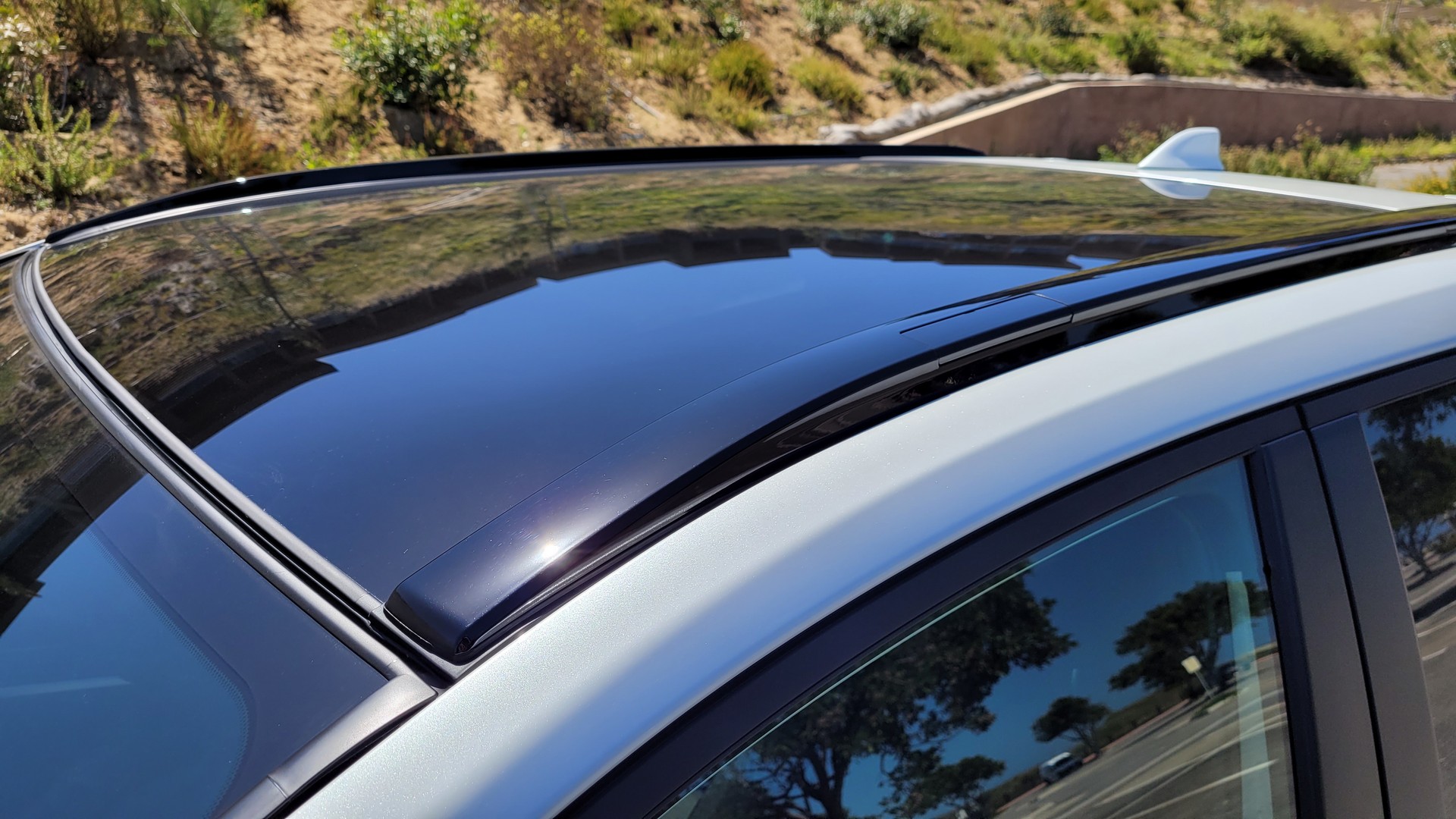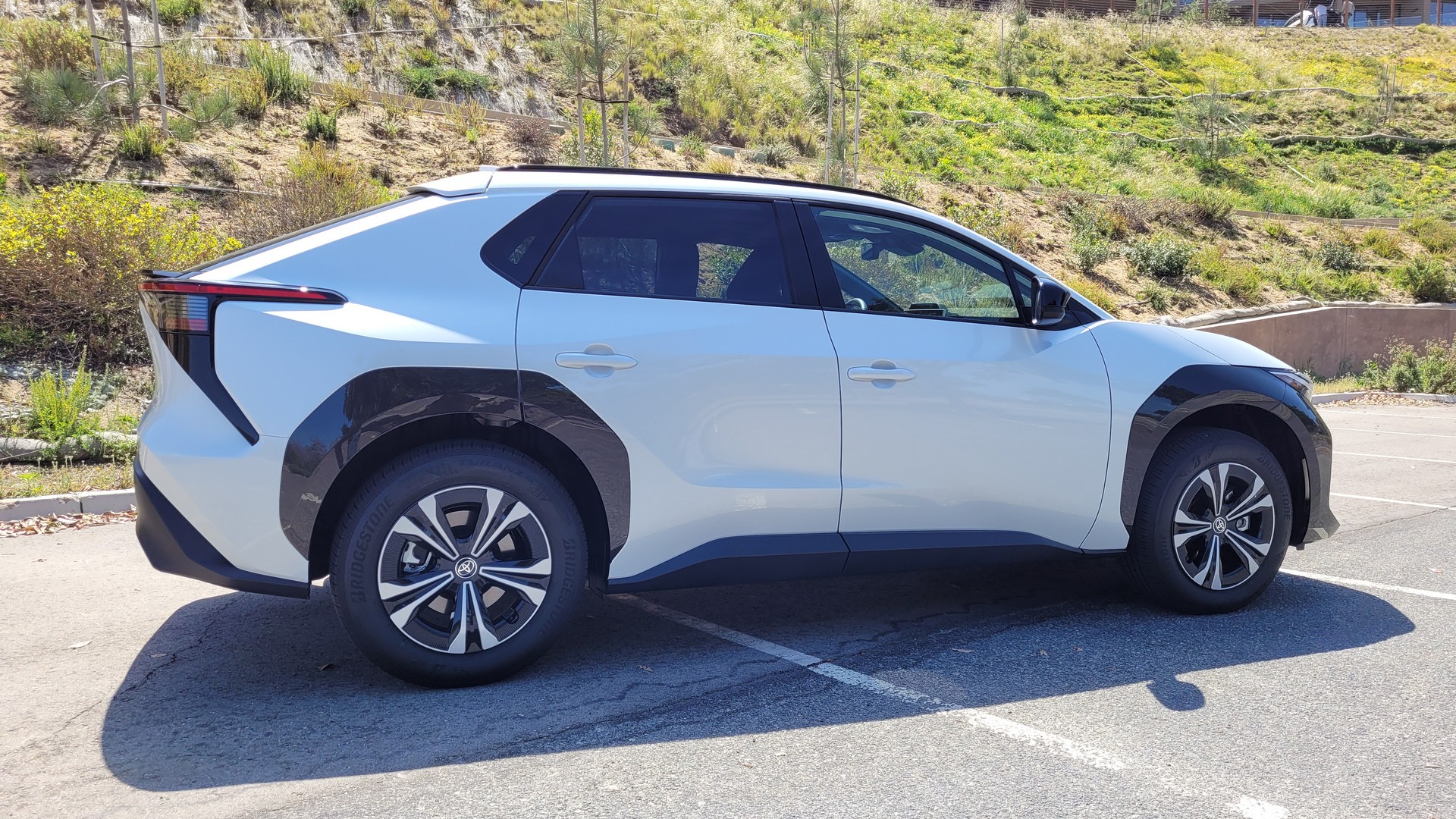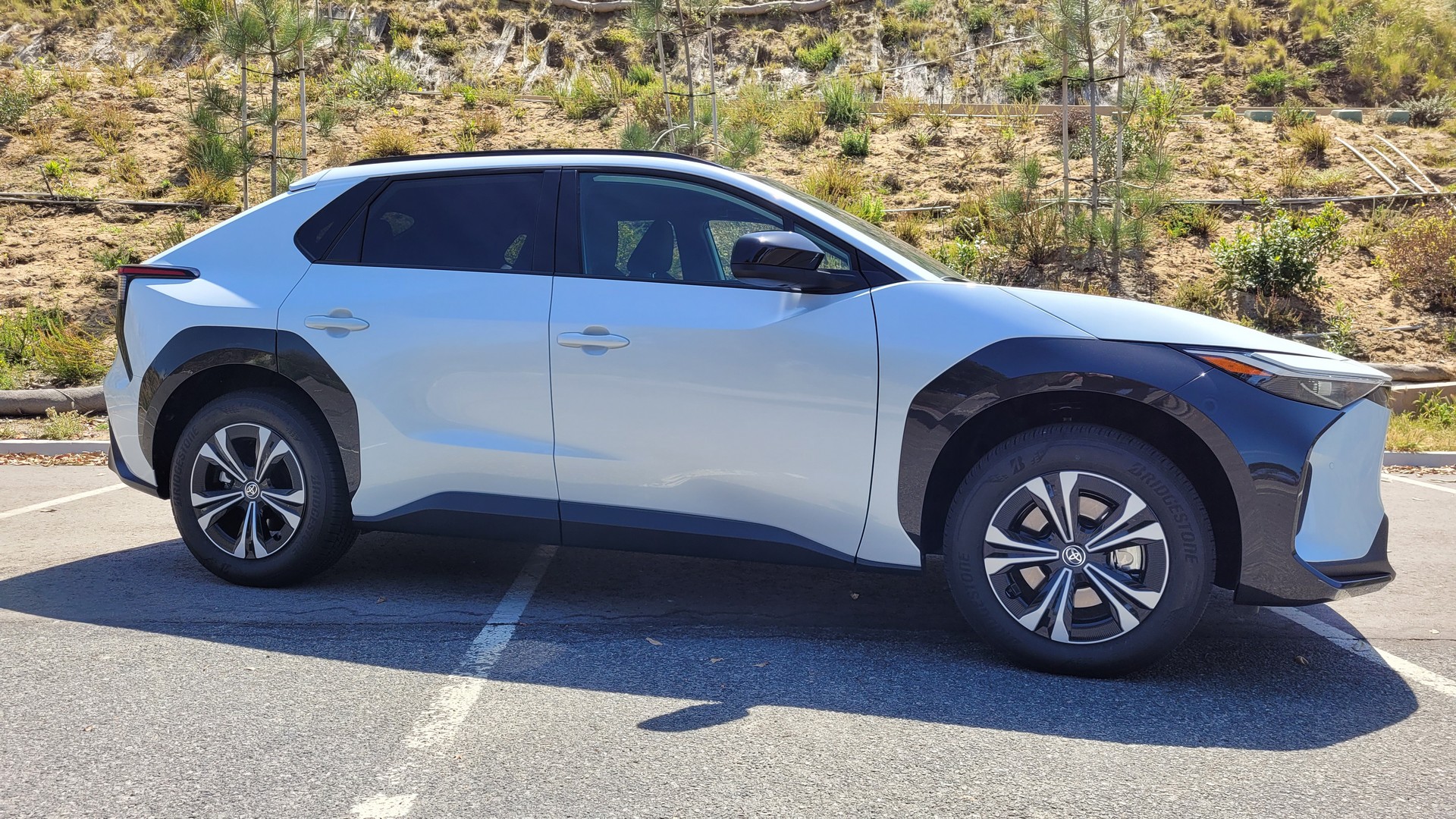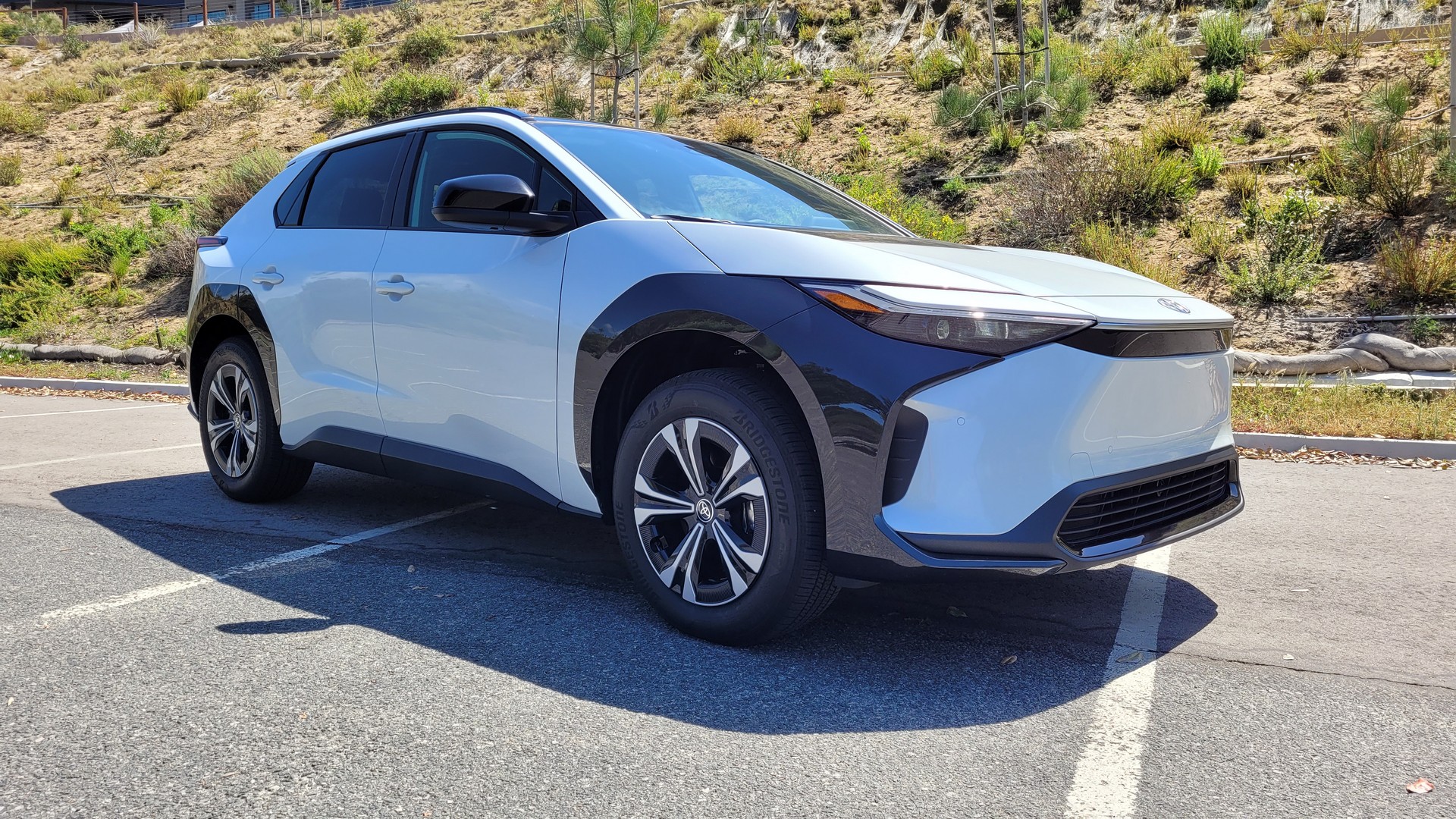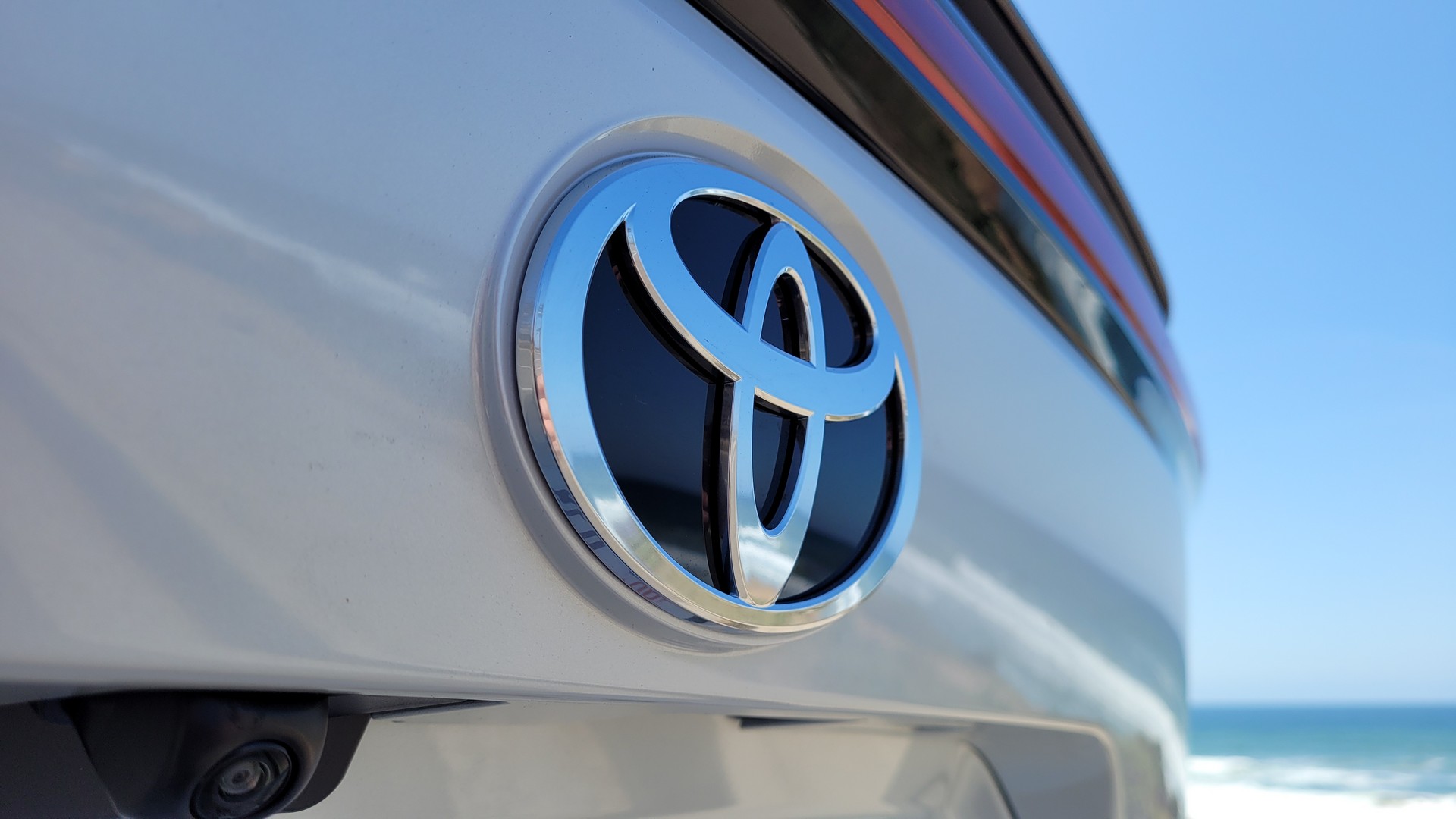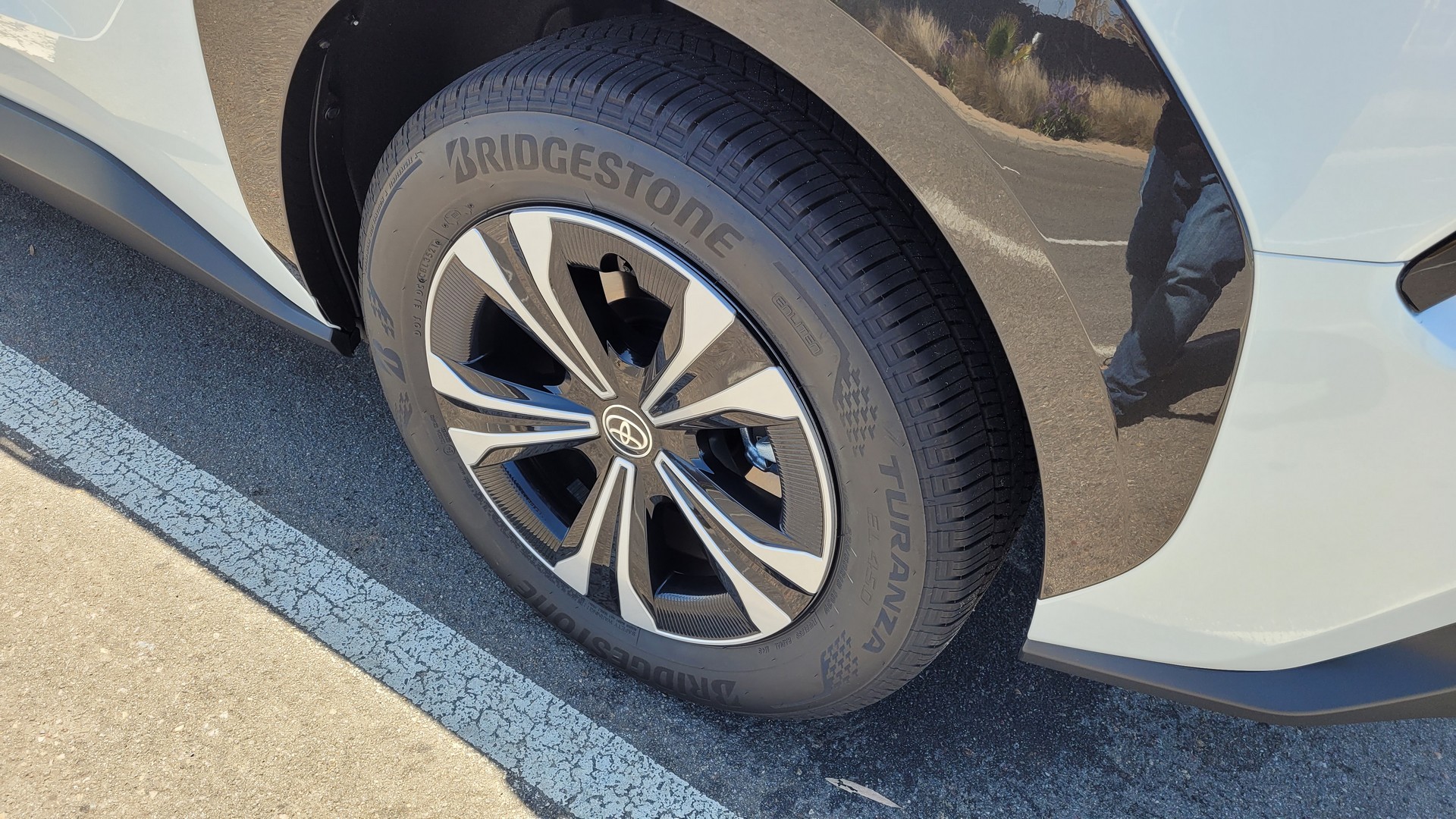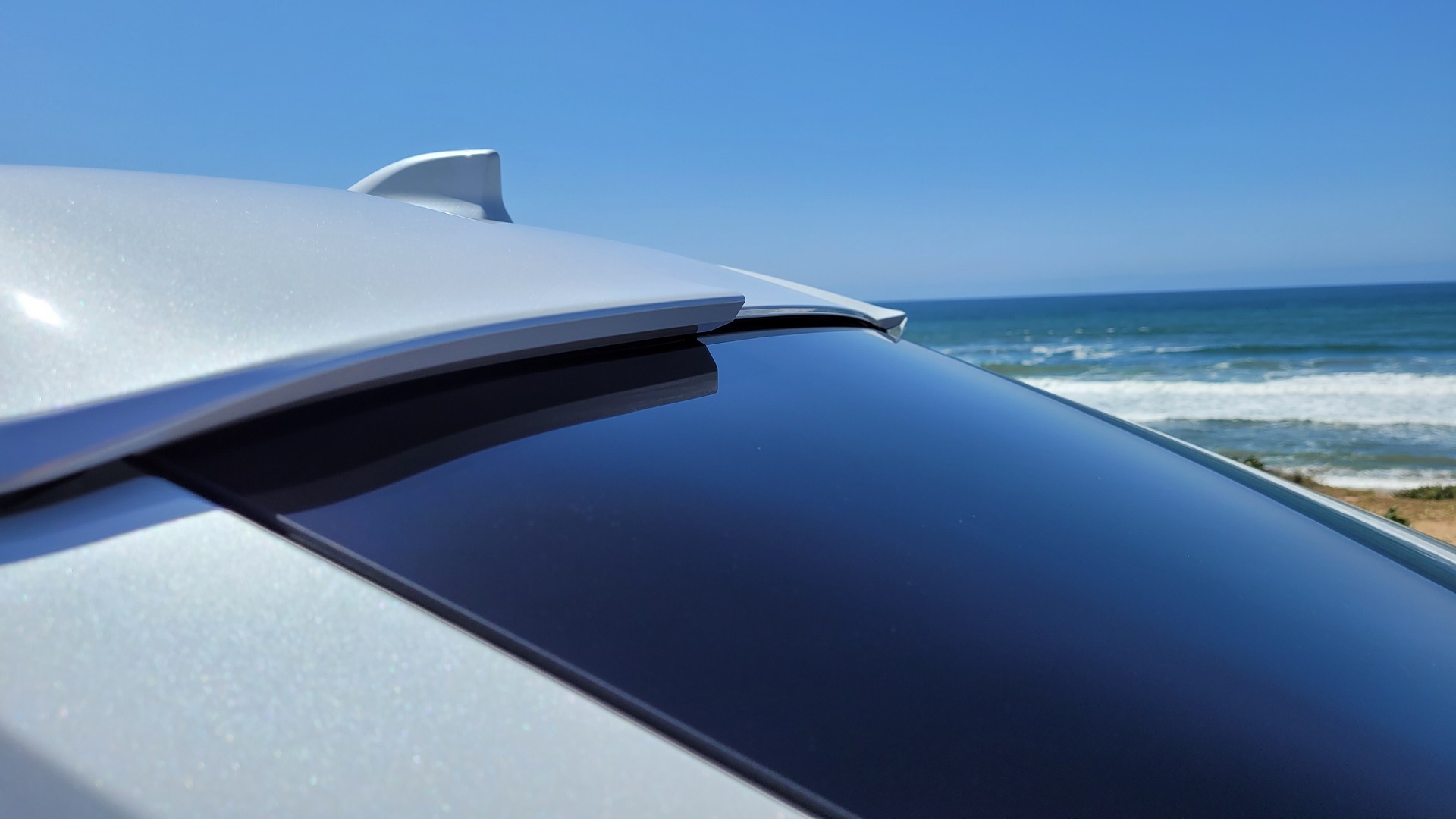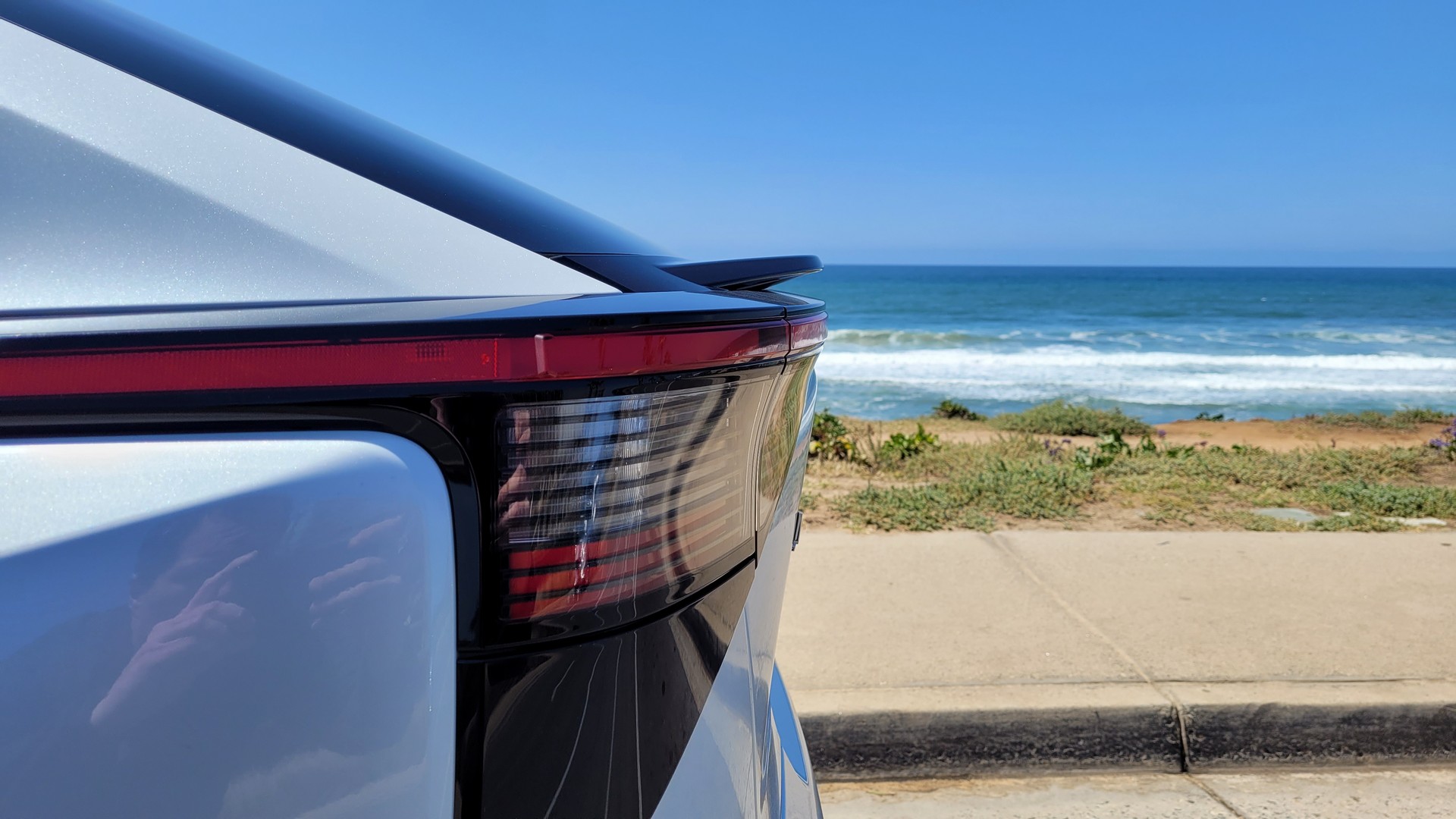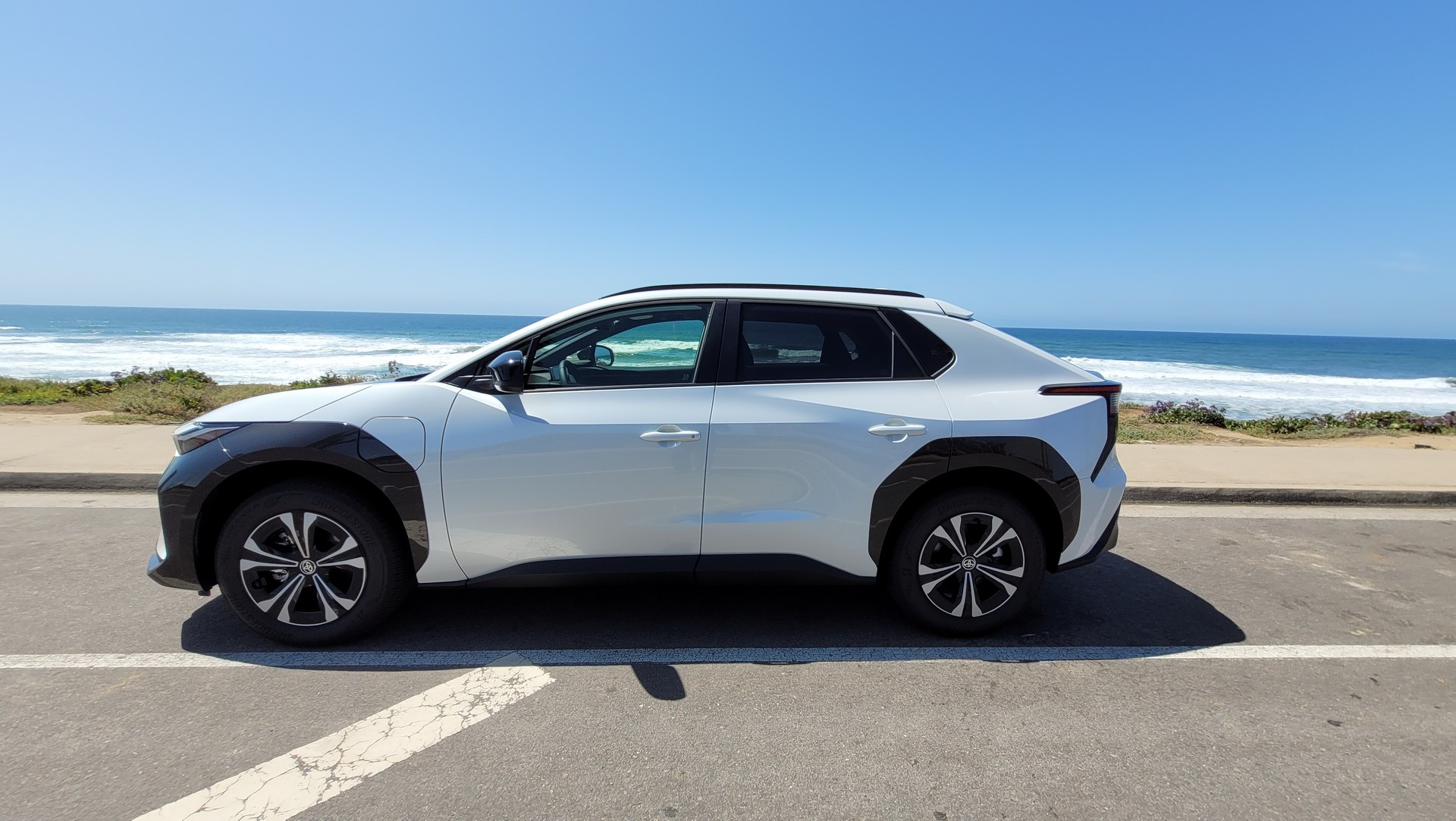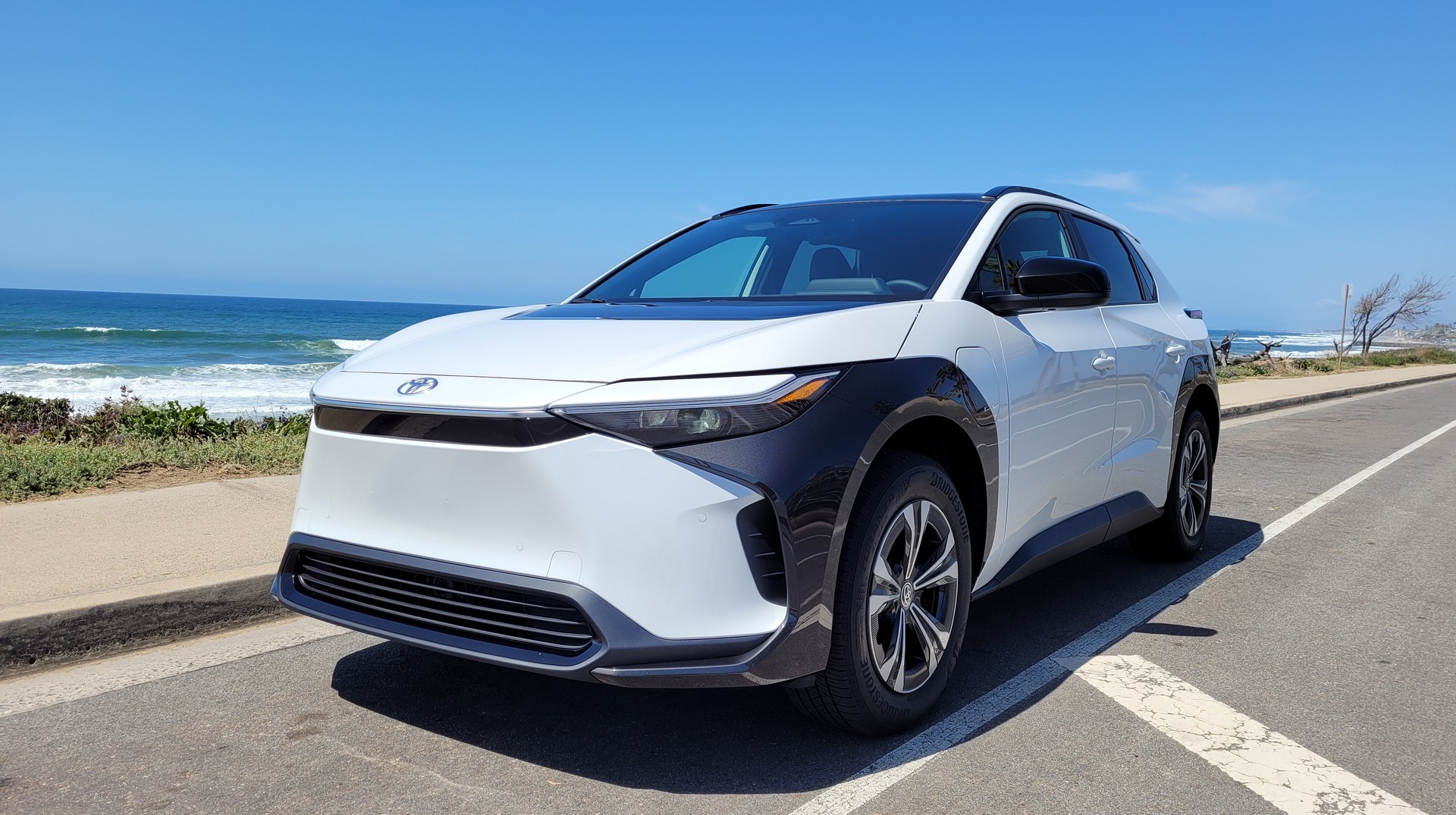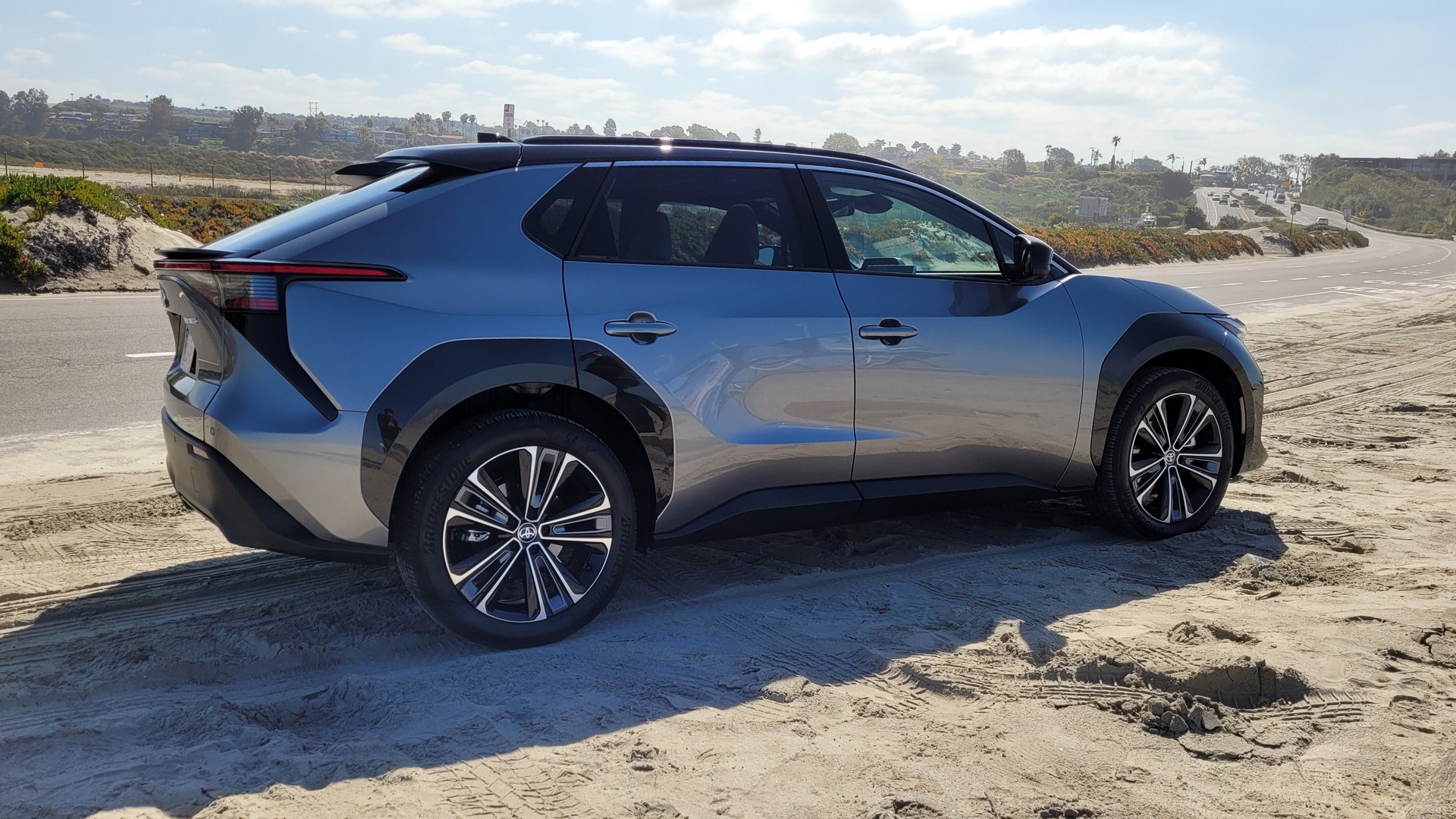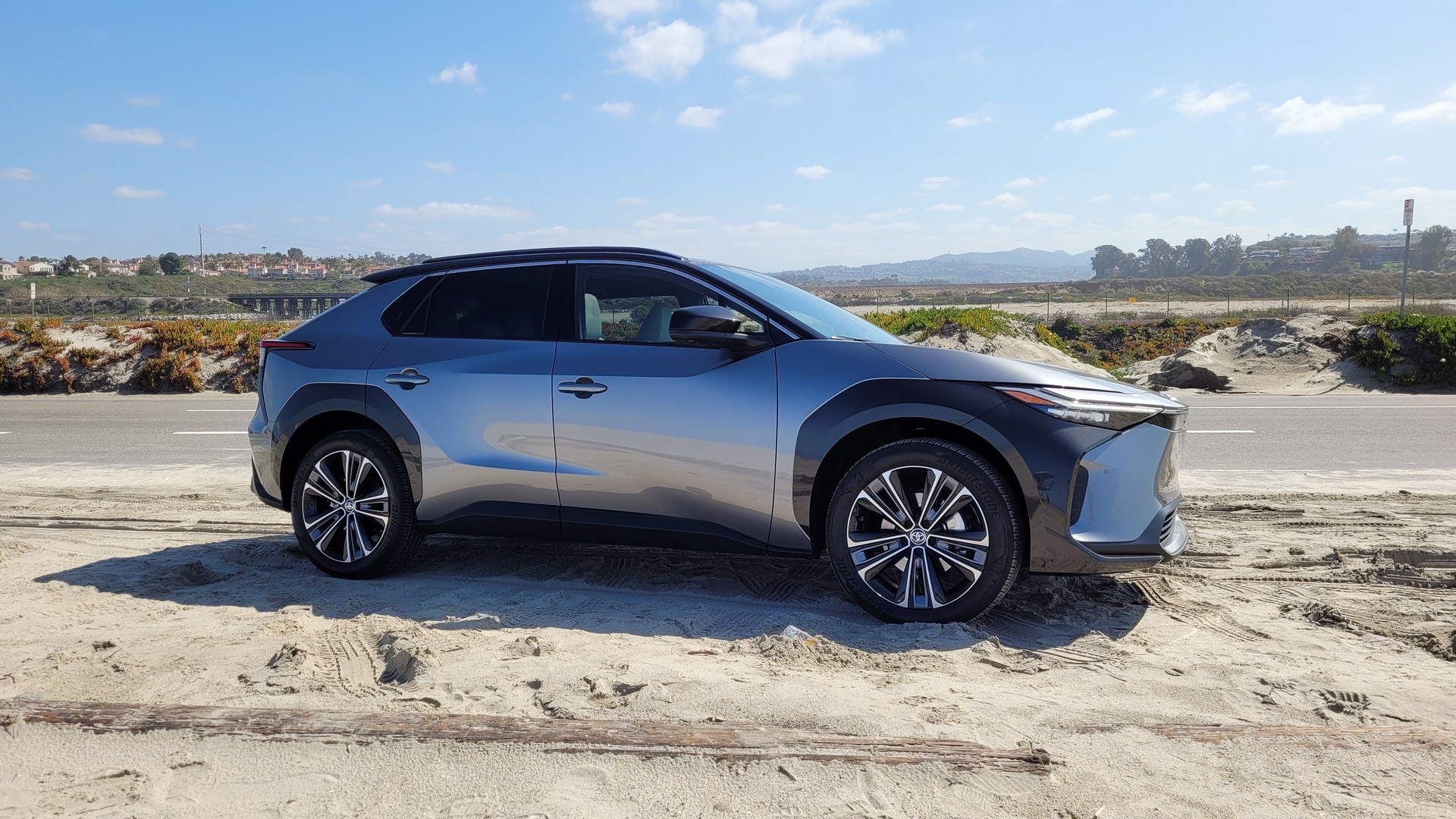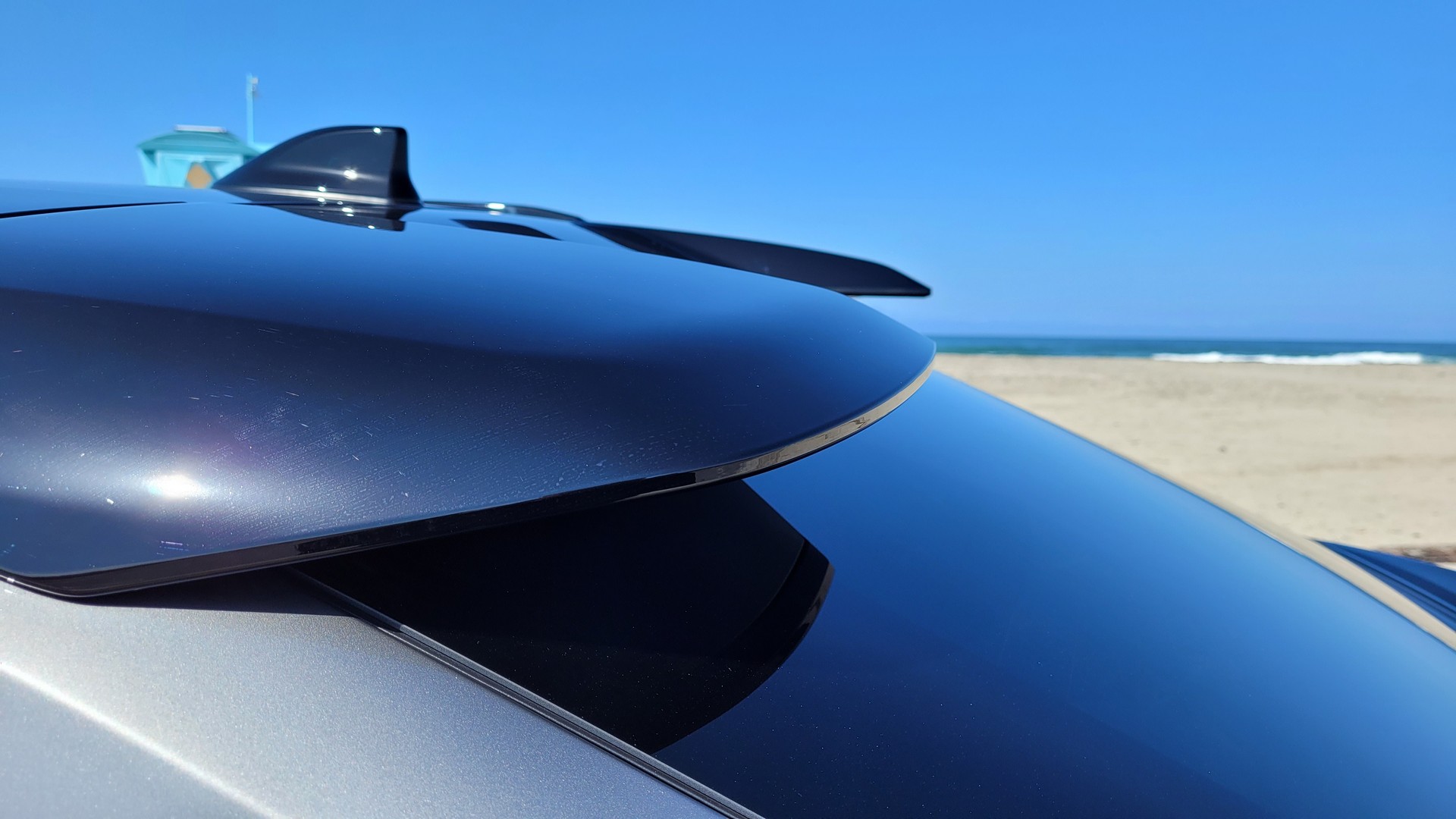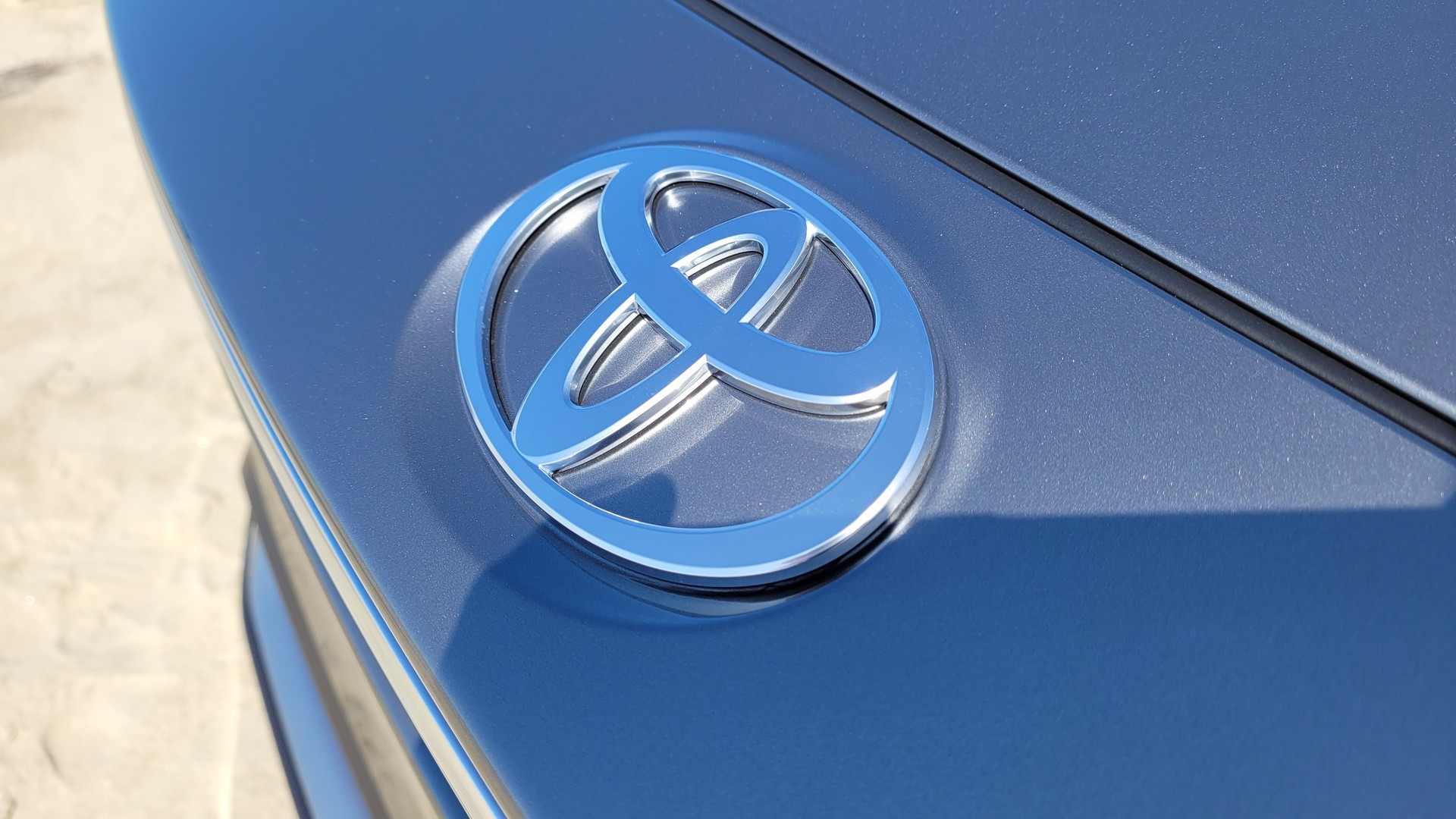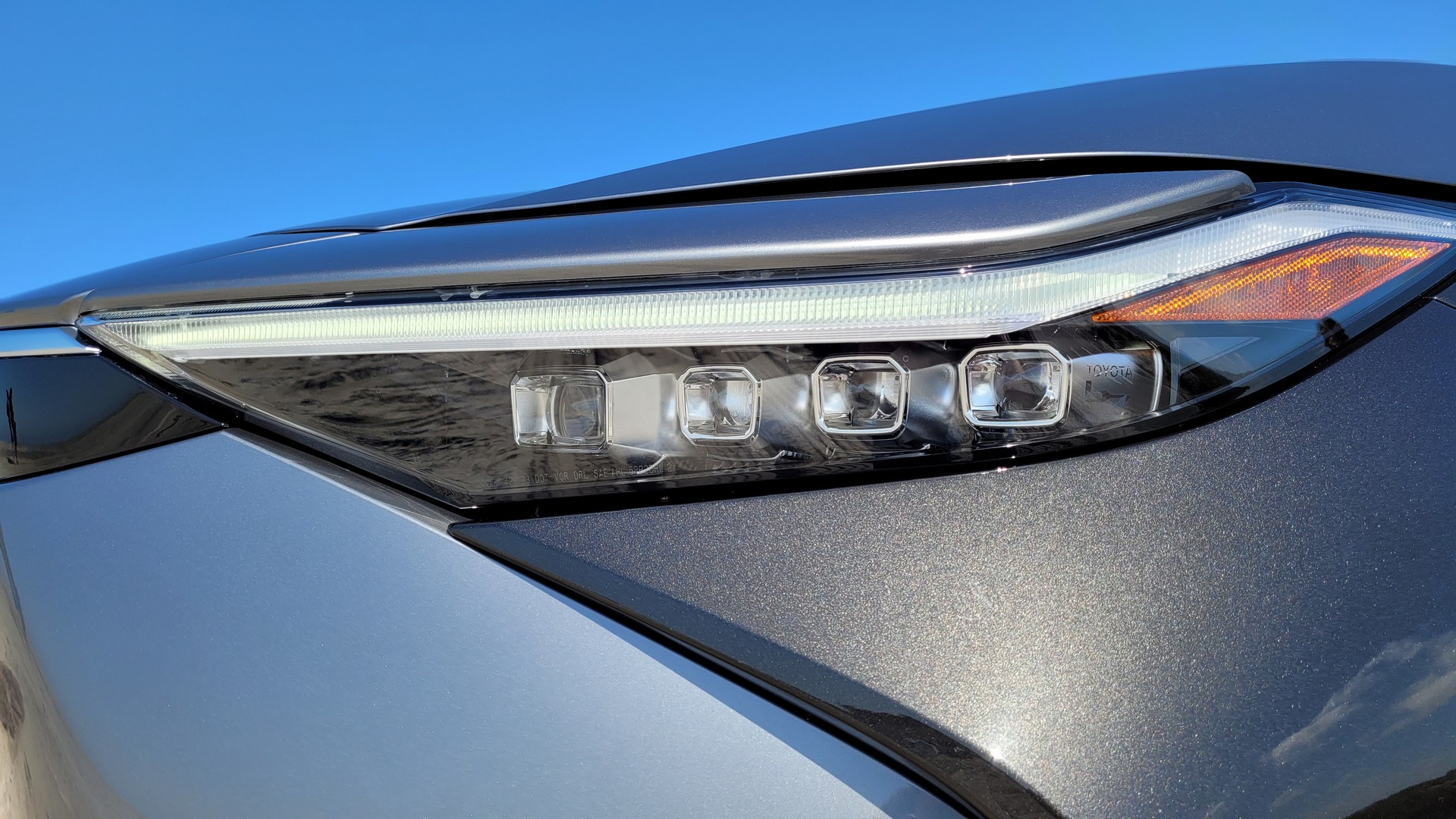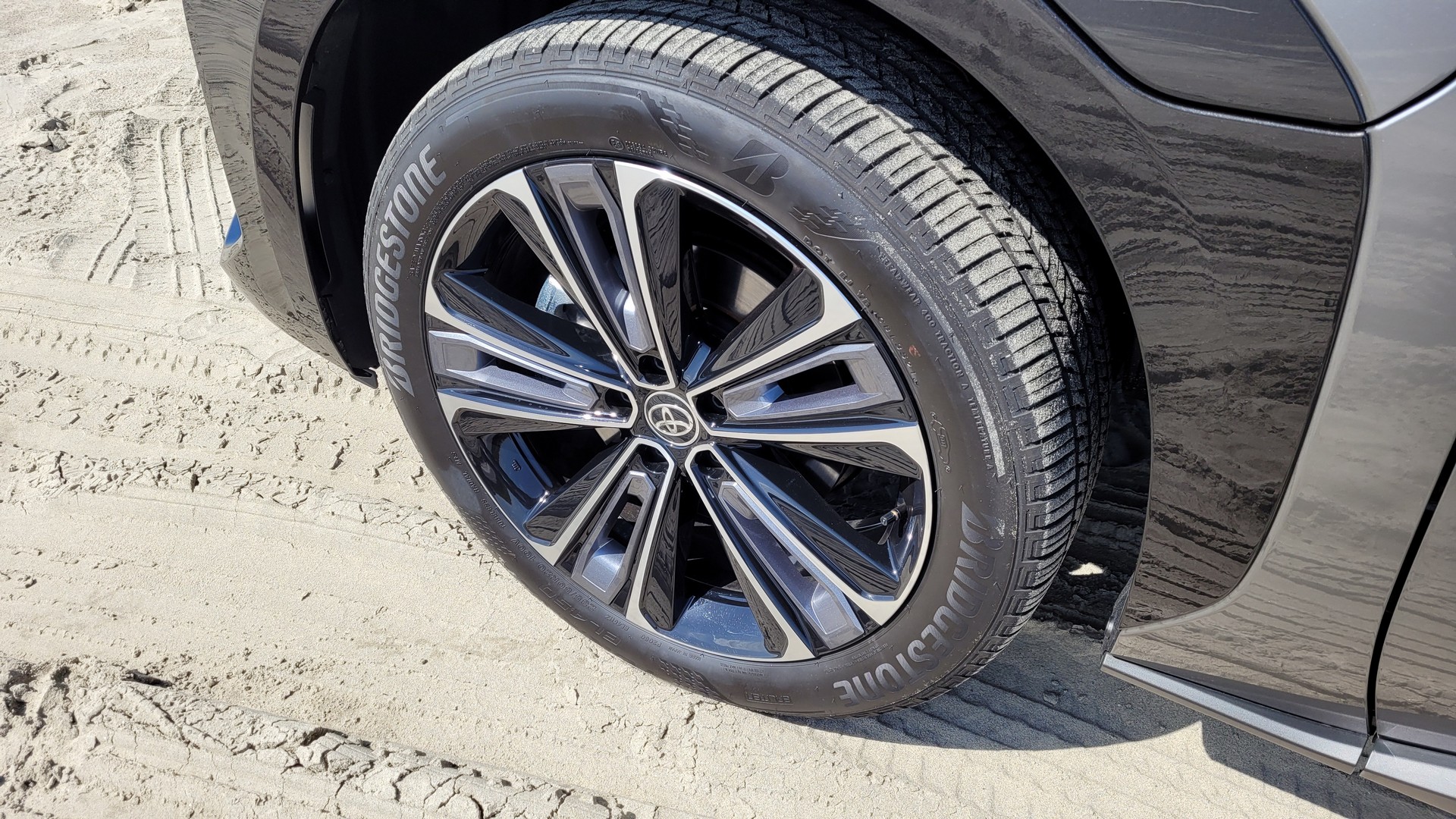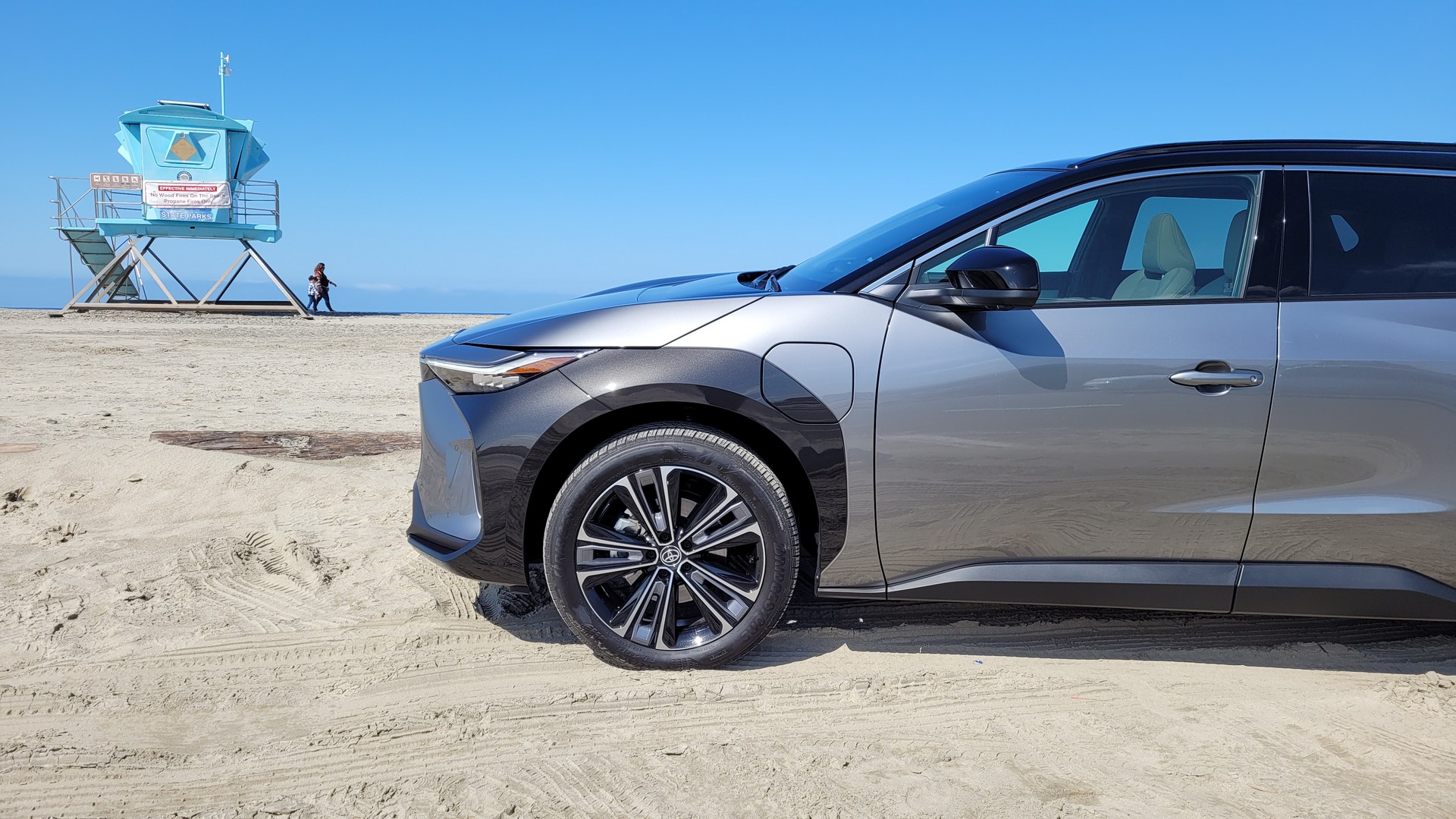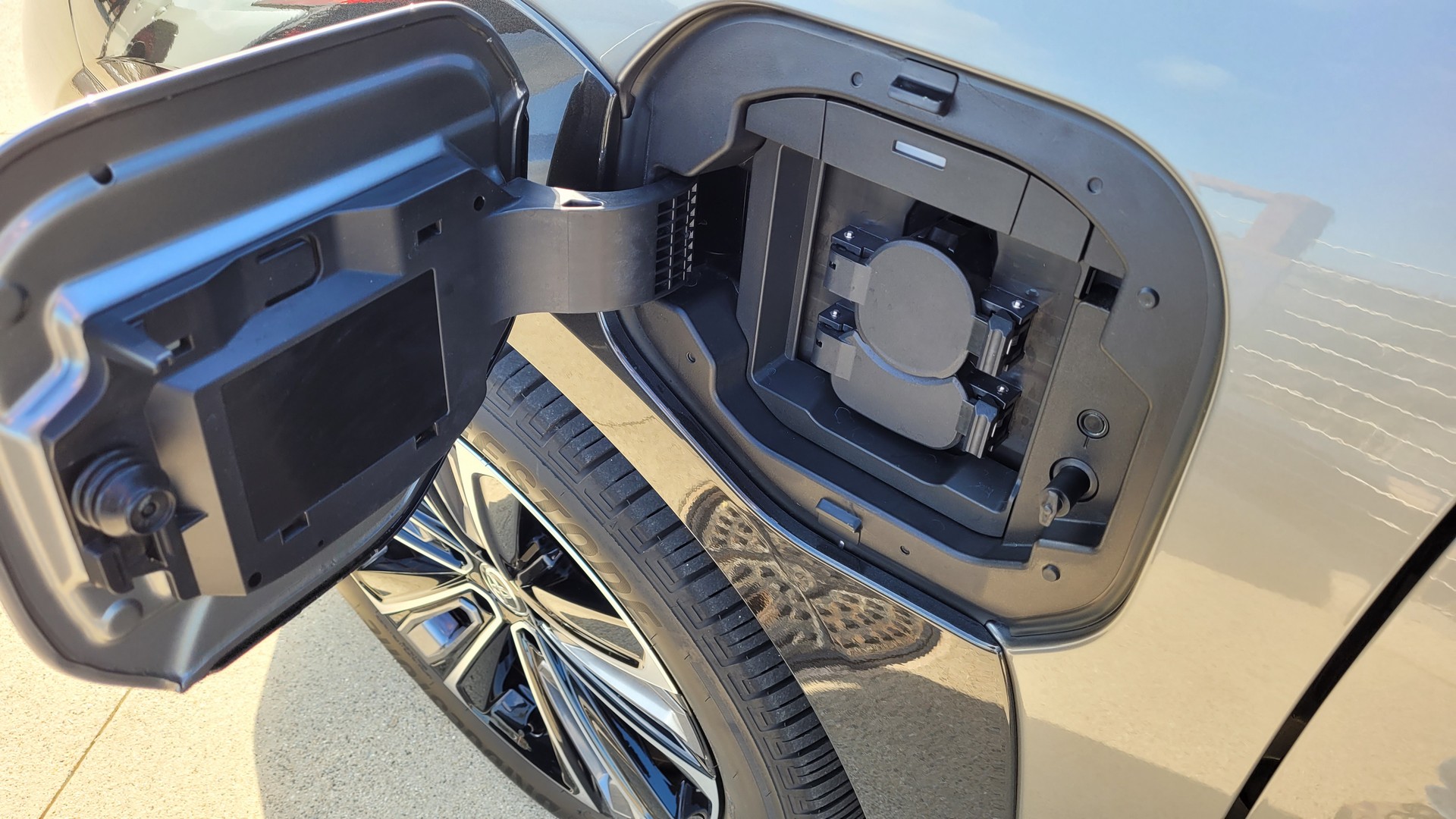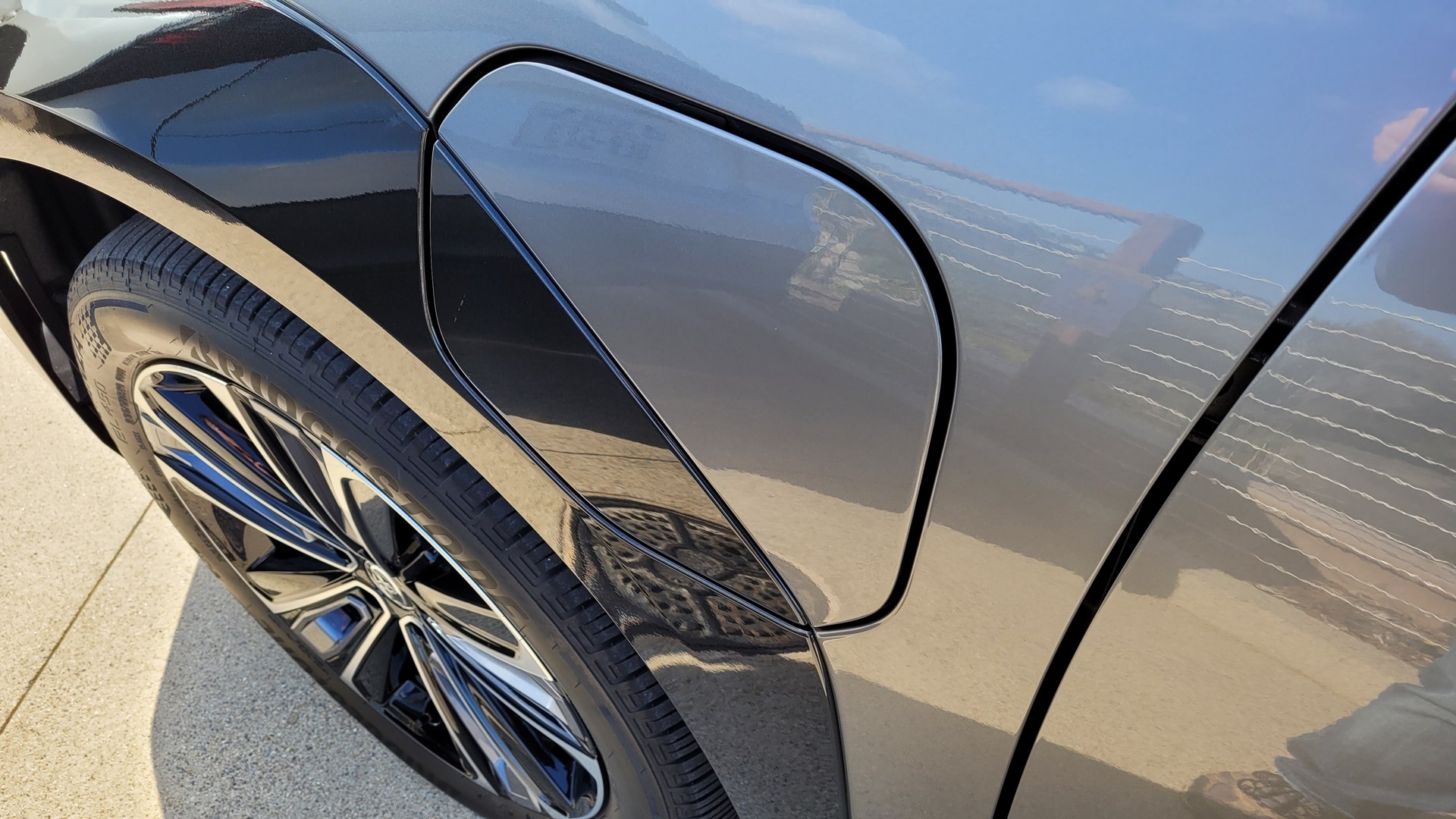Toyota is nearly synonymous with electrification as the company launched the Prius decades ago and offers nearly a dozen hybrids in the United States. Despite this, the automaker has been slow to embrace all-electric vehicles as the second-generation RAV4 EV went out of production in 2014.
That’s changing as Toyota is gearing up to launch 15 electric vehicles by 2025, including seven wearing the bZ (Beyond Zero) moniker. The first is the 2023 bZ4X and well it might not be revolutionary, it’s a solid electric vehicle with some quirks.
An Edgy And Slightly Polarizing Design
Quick Facts › › ›
› Model: Toyota bZ4X
› Price: $42,000 before incentives
› Dimensions: 184.6 in (4,688 mm) L x 73.2 in (1,859 mm) W x 65 in (1,651 mm) H
› Wheelbase: 112.2 in (2,850 mm)
› Power: 201 hp and 196 lb-ft (FWD) / 214 hp and 248 lb-ft (AWD)
› Driving Range: 222-252 miles (357-406 km)
› On Sale: This spring
Love it or hate it, the bZ4X stands out thanks to its angular design and controversial black accents. We’re not particularly fond of the black fenders, but there’s no avoiding them as they come standard on all trims.
The rest of the crossover is more agreeable as there’s a “hammerhead” front end that features a protruding nose as well as standard LED headlights. Moving further back, there’s a driver’s side charging port, plastic body cladding, and 18- or 20-inch wheels. The model also features full-width brake lights and an angular liftgate with a rear spoiler.
A handful of options will be available including a two-tone paint job that adds a black finish to the roof and A-pillars. Customers can also opt for a split roof spoiler, which adds a dash of pizzazz.
An Interior That Tries Too Hard To Be Different
While the exterior styling is fairly conventional, the same can’t be said about the cabin as it feels like it was designed by five different people who never agreed on a theme. As a result, there’s an odd mix of ideas and textures.
The fabric accent on the dashboard instantly stands out and it’s joined by a hideous steering wheel, which is jam-packed with buttons and protrudes from the dashboard like a finger. The criticisms don’t end there as the steering column can’t be raised very far and, in some seating positions, the top rim blocks part of the 7-inch digital instrument cluster.
Speaking of the latter, the cluster is mounted far forward and resides at the end of a plastic structure that resembles a half-pipe. It’s supposed to help you focus and keep your eyes on the road, but we got sidetracked asking ourselves who thought the plastic surround was a good idea. On the bright side, the display is clean, crisp, and informative.
The rest of the interior is more impressive as there’s a 12.3-inch Audio Multimedia system, which is fast, intuitive, and highly connected. Highlights include cloud-based navigation with Google points-of-interest data and an Intelligent Assistant, which responds to the “Hey, Toyota” wake word. However, you’ll need to sign up for an assortment of subscriptions to get the most out of it.
The cabin comes nicely equipped as even the entry-level bZ4X XLE features a fixed panoramic glass roof, a wireless smartphone charger, and a dual-zone automatic climate control system. If you want luxury, the bZ4X Limited boasts a heated leather steering wheel and SofTex seats with heating and ventilation up front. The range-topper also has a power driver’s seat as well as options such as heated rear seats and a nine-speaker JBL premium audio system.
Speaking of the seats, they’re comfortable and spacious in both rows. Rear seaters will find 35.3 inches (897 mm) of legroom, but they seem more spacious than that and I had no problem getting comfortable behind the adjusted driver’s seat. There was also enough headroom to keep this 6′ 2″ reviewer happy.
Furthermore, there’s up to 27.7 cubic feet (784 liters) of cargo space behind the second row. That’s slightly more than the Corolla Cross, but significantly less than the RAV4 which can swallow up to 37.5 cubic feet (1,062 liters) of luggage without folding the rear seats down.
Two Powertrains And Up To 252 Miles Of Range
The bZ4X rides on the e-TNGA platform and features two different battery packs sourced from two different suppliers. Front-wheel drive variants have a capacity of 71.4 kWh, which allows for an EPA-estimated range of 252 miles (406 km) in the XLE and 242 miles (389 km) in the Limited. All-wheel drive variants have a slightly larger capacity of 72.8 kWh, but the range drops to 228 miles (367 km) for the XLE and 222 miles (357 km) for the Limited.
To put those numbers into perspective, the Ford Mustang Mach-E Standard Range can travel 247 miles (398 km) with rear-wheel drive and 224 miles (360 km) with all-wheel drive. However, Ford’s crossover is available with an Extended Range battery which increases its stamina up to 314 miles (505 km) with rear-wheel drive and 312 miles (502 km) with all-wheel drive.
Likewise, the Volkswagen ID.4 offers ranges between 245 (394 km) and 280 miles (451 km). It’s also worth noting the ID.4 is cheaper as it begins at $41,230 as opposed to the bZ4X’s base price of $42,000.
There’s also the Kia EV6 and Hyundai Ioniq 5. Both models have garnered plenty of praise and offer ranges between 220 (354 km) and 310 miles (499 km).
It’s also worth mentioning that customers can opt for the similar Subaru Solterra. It features slightly revised styling, standard all-wheel drive, and estimated ranges of 222 (357 km) and 228 miles (367 km).
Putting the competition aside, front-wheel drive variants are powered by an electric motor that develops 201 hp (150 kW / 204 PS) and 196 lb-ft (265 Nm) of torque. All-wheel drive variants are completely different as they feature front- and rear-mounted electric motors that each develop 107 hp (80 kW / 108 PS) and 124 lb-ft (168 Nm) of torque. This gives them a combined output of 214 hp (160 kW / 217 PS) and 248 lb-ft (336 Nm) of torque.
While we didn’t get a chance to test the all-wheel drive variant during our brief drive, the front-wheel drive bZ4X is relatively quick. Toyota quotes a 0-60 mph (0-96 km/h) time of 7.1 seconds and that sounds about right as the crossover can move, but certainly won’t be mistaken for a sports car. Flooring the right pedal from a dead stop isn’t exactly exhilarating, but the bZ4X is perfectly capable around town and the instantaneous response from the electric motor means it’s ready when you are.
If you’re looking for speed, you’ll want to opt for the all-wheel drive variant. Thanks to the extra motor and added traction, the dash to 60 mph (96 km/h) takes 6.5 seconds. Torque steer should also hopefully be eliminated, while buyers will also find a Subaru-sourced X-Mode with settings for Snow/Dirt and Snow/Mud. While the names are similar, the Snow/Mud setting “applies the brakes on spinning wheels to produce a limited-slip differential effect for additional traction.”
Charging Into The Future
When it comes time to charge, owners will find a 6.6 kW onboard charger that enables the battery to be fully replenished in approximately 11 hours. Customers can also opt for a ChargePoint Home Flex Level 2 charger, which can deliver up to 25 miles (40 km) of range for every hour of charging.
Owners can roll the cost of the Level 2 charger into the purchase or lease price of the vehicle, but they’ll have to pay for installation separately. That being said, Toyota has teamed up with Qmerit to help customers locate a licensed electrician to install their home charging station.
On longer road trips, bZ4X owners will want to visit EVgo stations as Toyota is offering customers one year of unlimited complimentary charging. That’s a nice perk and owners can initiate free charging through the Toyota app on their smartphone.
Unfortunately, fast charging is a relative term as the front-wheel drive and all-wheel drive bZ4X have different capabilities. Front-wheel drive models can be charged at up to 150 kW, while the more expensive all-wheel drive variant is curiously limited to 100 kW. To put those numbers into perspective, the ID.4 has a 135 kW DC fast charging capability while the Mach-E allows for rates of 115 kW and 150 kW.
Of course, the average American travels less than 40 miles (64 km) per day so charging isn’t much of an issue unless you’re going on a long road trip. It’s also worth mentioning the bZ4X’s Remote Connect technology enables owners to use the Toyota app to check charging status, start/stop charging, edit charging schedules, and find charging stations on their smartphone.
Comfortable And Secure, But Not Very Engaging
While our time with the bZ4X was brief, we were able to gather some initial driving impressions and it’s safe to say the model is a Toyota through and through.
Besides the adequate acceleration, the bZ4X features an electric power steering system that feels perfectly weighted as it’s not too heavy nor too light. The independent front and multi-link rear suspension did a good job absorbing minor road imperfections, while also delivering a relatively comfortable ride quality.
Speaking of comfort, the cabin is hushed thanks to efforts to snuff out unwanted wind and tire noise. As a result, the most prominent sound is the occasional whir of the electric motor. It’s also worth mentioning that Toyota hasn’t followed recent trends as artificial noises aren’t pumped into the cabin.
Dynamically, the bZ4X feels like your typical Toyota crossover as its mannerisms are well controlled but not particularly engaging. It also offers flat, but relatively unrewarding cornering and you do get some sense of the car’s heft. On that topic, the crossover weighs 4,266-4,464 lbs (1,935-2,025 kg). That’s not insubstantial, but it’s roughly on par with the Ioniq 5 and EV6 while also comparing favorably to the Mach-E and ID.4.
While there’s no one-pedal driving mode, the bZ4X features a Regenerative Braking Boost Mode that “reduces the frequency the brake pedal must be depressed, helping to reduce the burden on the driver.” In layman’s terms, it slows the vehicle down but doesn’t necessarily bring it to a full stop.
Speaking of braking, the bZ4X has ventilated discs that measure 12.9 inches (328 mm) front and 12.5 inches (318 mm) rear. They’re easy to modulate and offer plenty of stopping power in emergency situations.
A Toyota EV, No More No Less
The RAV4 EV might be dead and largely forgotten, but its spirit lives on in the bZ4X. That’s immediately apparent when you check the dimensions as the EV is 3.7 inches (94 mm) longer, 2.0 inches (51 mm) lower, and 0.2 inches (5 mm) wider than the current RAV4. It also features a 6.3 inch (160 mm) longer wheelbase, which results in a truly spacious interior that can easily haul four adults and their cargo.
Unfortunately, Toyota customers looking to go electric might have a hard time as only around 7,000 bZ4Xs will be available in the United States during its first model year. However, the crossover will be offered nationwide, unlike some EVs and plug-in hybrids.
Of course, there’s always the question of whether the bZ4X stands out enough from the growing competition. Hyundai and Kia have done a remarkable job with the Ioniq 5 and EV6 respectively, while the Ford Mustang Mach-E has garnered plenty of attention and Volkswagen can’t build ID.4s fast enough.
The bZ4X enters the fray with respectable numbers and competitive pricing, which ranges from $42,000 to $48,780 before incentives, but it might have a hard time standing out. That being said, customers told the company they wanted a Toyota EV and that’s what they’re getting for better or worse.
All in all, the bZ4X is a solid SUV that checks all the boxes and should appeal to Toyota loyalists. It’s not for everyone, but that can be said for just about any EV on the market and its quirks shouldn’t be considered a deal breaker. Furthermore, those looking to go electric might save a considerable amount of money as Toyota noted the “average estimated fuel cost savings over five years for the 2023 bZ4X” is $5,000 when compared to the average new vehicle.






